
- Online Course

40 Best Essays of All Time (Including Links & Writing Tips)
I wanted to improve my writing skills. I thought that reading the forty best essays of all time would bring me closer to my goal.
I had little money (buying forty collections of essays was out of the question) so I’ve found them online instead. I’ve hacked through piles of them, and finally, I’ve found the great ones. Now I want to share the whole list with you (with the addition of my notes about writing). Each item on the list has a direct link to the essay, so please click away and indulge yourself. Also, next to each essay, there’s an image of the book that contains the original work.
About this essay list:
Reading essays is like indulging in candy; once you start, it’s hard to stop. I sought out essays that were not only well-crafted but also impactful. These pieces genuinely shifted my perspective. Whether you’re diving in for enjoyment or to hone your writing, these essays promise to leave an imprint. It’s fascinating how an essay can resonate with you, and even if details fade, its essence remains. I haven’t ranked them in any way; they’re all stellar. Skim through, explore the summaries, and pick up some writing tips along the way. For more essay gems, consider “Best American Essays” by Joyce Carol Oates or “101 Essays That Will Change The Way You Think” curated by Brianna Wiest.
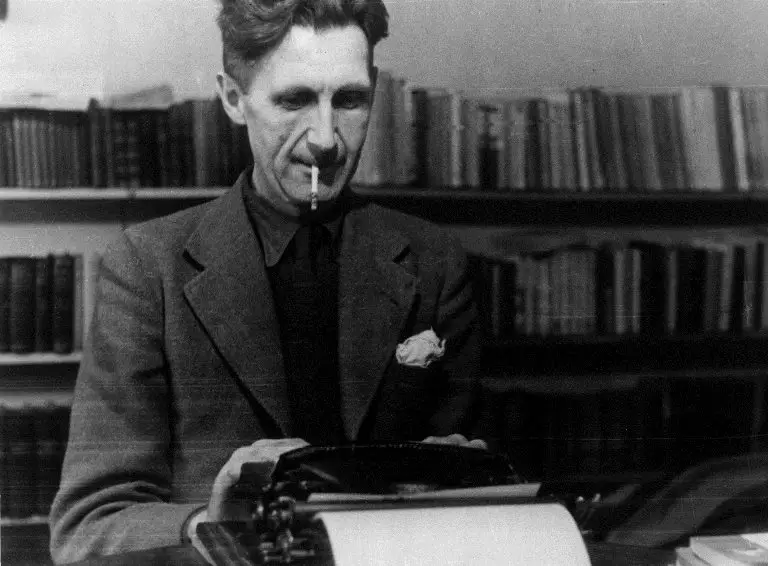
40 Best Essays of All Time (With Links And Writing Tips)
1. david sedaris – laugh, kookaburra.
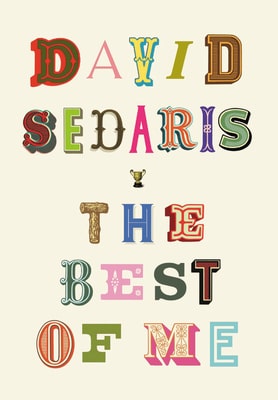
A great family drama takes place against the backdrop of the Australian wilderness. And the Kookaburra laughs… This is one of the top essays of the lot. It’s a great mixture of family reminiscences, travel writing, and advice on what’s most important in life. You’ll also learn an awful lot about the curious culture of the Aussies.
Writing tips from the essay:
- Use analogies (you can make it funny or dramatic to achieve a better effect): “Don’t be afraid,” the waiter said, and he talked to the kookaburra in a soothing, respectful voice, the way you might to a child with a switchblade in his hand”.
- You can touch a few cognate stories in one piece of writing . Reveal the layers gradually. Intertwine them and arrange for a grand finale where everything is finally clear.
- Be on the side of the reader. Become their friend and tell the story naturally, like around the dinner table.
- Use short, punchy sentences. Tell only as much as is required to make your point vivid.
- Conjure sentences that create actual feelings: “I had on a sweater and a jacket, but they weren’t quite enough, and I shivered as we walked toward the body, and saw that it was a . . . what, exactly?”
- You may ask a few tough questions in a row to provoke interest and let the reader think.
2. Charles D’Ambrosio – Documents
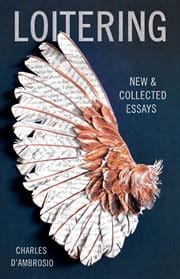
Do you think your life punches you in the face all too often? After reading this essay, you will change your mind. Reading about loss and hardships often makes us sad at first, but then enables us to feel grateful for our lives . D’Ambrosio shares his documents (poems, letters) that had a major impact on his life, and brilliantly shows how not to let go of the past.
- The most powerful stories are about your family and the childhood moments that shaped your life.
- You don’t need to build up tension and pussyfoot around the crux of the matter. Instead, surprise the reader by telling it like it is: “The poem was an allegory about his desire to leave our family.” Or: “My father had three sons. I’m the eldest; Danny, the youngest, killed himself sixteen years ago”.
- You can use real documents and quotes from your family and friends. It makes it so much more personal and relatable.
- Don’t cringe before the long sentence if you know it’s a strong one.
- At the end of the essay, you may come back to the first theme to close the circuit.
- Using slightly poetic language is acceptable, as long as it improves the story.
3. E. B. White – Once more to the lake
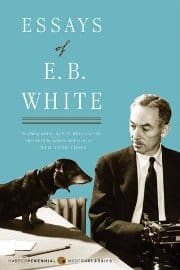
What does it mean to be a father? Can you see your younger self, reflected in your child? This beautiful essay tells the story of the author, his son, and their traditional stay at a placid lake hidden within the forests of Maine. This place of nature is filled with sunshine and childhood memories. It also provides for one of the greatest meditations on nature and the passing of time.
- Use sophisticated language, but not at the expense of readability.
- Use vivid language to trigger the mirror neurons in the reader’s brain: “I took along my son, who had never had any fresh water up his nose and who had seen lily pads only from train windows”.
- It’s important to mention universal feelings that are rarely talked about (it helps to create a bond between two minds): “You remember one thing, and that suddenly reminds you of another thing. I guess I remembered clearest of all the early mornings when the lake was cool and motionless”.
- Animate the inanimate: “this constant and trustworthy body of water”.
- Mentioning tales of yore is a good way to add some mystery and timelessness to your piece.
- Using double, or even triple “and” in one sentence is fine. It can make the sentence sing.
4. Zadie Smith – Fail Better
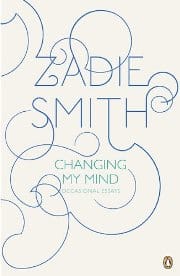
Aspiring writers feel tremendous pressure to perform. The daily quota of words often turns out to be nothing more than gibberish. What then? Also, should the writer please the reader or should she be fully independent? What does it mean to be a writer, anyway? This essay is an attempt to answer these questions, but its contents are not only meant for scribblers. Within it, you’ll find some great notes about literary criticism, how we treat art , and the responsibility of the reader.
- A perfect novel ? There’s no such thing.
- The novel always reflects the inner world of the writer. That’s why we’re fascinated with writers.
- Writing is not simply about craftsmanship, but about taking your reader to the unknown lands. In the words of Christopher Hitchens: “Your ideal authors ought to pull you from the foundering of your previous existence, not smilingly guide you into a friendly and peaceable harbor.”
- Style comes from your unique personality and the perception of the world. It takes time to develop it.
- Never try to tell it all. “All” can never be put into language. Take a part of it and tell it the best you can.
- Avoid being cliché. Try to infuse new life into your writing .
- Writing is about your way of being. It’s your game. Paradoxically, if you try to please everyone, your writing will become less appealing. You’ll lose the interest of the readers. This rule doesn’t apply in the business world where you have to write for a specific person (a target audience).
- As a reader, you have responsibilities too. According to the critics, every thirty years, there’s just a handful of great novels. Maybe it’s true. But there’s also an element of personal connection between the reader and the writer. That’s why for one person a novel is a marvel, while for the other, nothing special at all. That’s why you have to search and find the author who will touch you.
5. Virginia Woolf – Death of the Moth
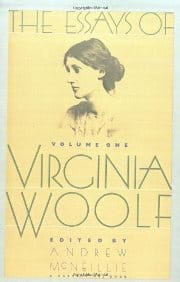
Amid an ordinary day, sitting in a room of her own, Virginia Woolf tells about the epic struggle for survival and the evanescence of life. This short essay is truly powerful. In the beginning, the atmosphere is happy. Life is in full force. And then, suddenly, it fades away. This sense of melancholy would mark the last years of Woolf’s life.
- The melody of language… A good sentence is like music: “Moths that fly by day are not properly to be called moths; they do not excite that pleasant sense of dark autumn nights and ivy-blossom which the commonest yellow- underwing asleep in the shadow of the curtain never fails to rouse in us”.
- You can show the grandest in the mundane (for example, the moth at your window and the drama of life and death).
- Using simple comparisons makes the style more lucid: “Being intent on other matters I watched these futile attempts for a time without thinking, unconsciously waiting for him to resume his flight, as one waits for a machine, that has stopped momentarily, to start again without considering the reason of its failure”.
6. Meghan Daum – My Misspent Youth
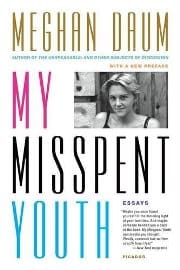
Many of us, at some point or another, dream about living in New York. Meghan Daum’s take on the subject differs slightly from what you might expect. There’s no glamour, no Broadway shows, and no fancy restaurants. Instead, there’s the sullen reality of living in one of the most expensive cities in the world. You’ll get all the juicy details about credit cards, overdue payments, and scrambling for survival. It’s a word of warning. But it’s also a great story about shattered fantasies of living in a big city. Word on the street is: “You ain’t promised mañana in the rotten manzana.”
- You can paint a picture of your former self. What did that person believe in? What kind of world did he or she live in?
- “The day that turned your life around” is a good theme you may use in a story. Memories of a special day are filled with emotions. Strong emotions often breed strong writing.
- Use cultural references and relevant slang to create a context for your story.
- You can tell all the details of the story, even if in some people’s eyes you’ll look like the dumbest motherfucker that ever lived. It adds to the originality.
- Say it in a new way: “In this mindset, the dollars spent, like the mechanics of a machine no one bothers to understand, become an abstraction, an intangible avenue toward self-expression, a mere vehicle of style”.
- You can mix your personal story with the zeitgeist or the ethos of the time.
7. Roger Ebert – Go Gentle Into That Good Night
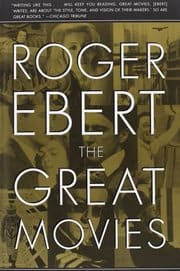
Probably the greatest film critic of all time, Roger Ebert, tells us not to rage against the dying of the light. This essay is full of courage, erudition, and humanism. From it, we learn about what it means to be dying (Hitchens’ “Mortality” is another great work on that theme). But there’s so much more. It’s a great celebration of life too. It’s about not giving up, and sticking to your principles until the very end. It brings to mind the famous scene from Dead Poets Society where John Keating (Robin Williams) tells his students: “Carpe, carpe diem, seize the day boys, make your lives extraordinary”.
- Start with a powerful sentence: “I know it is coming, and I do not fear it, because I believe there is nothing on the other side of death to fear.”
- Use quotes to prove your point -”‘Ask someone how they feel about death’, he said, ‘and they’ll tell you everyone’s gonna die’. Ask them, ‘In the next 30 seconds?’ No, no, no, that’s not gonna happen”.
- Admit the basic truths about reality in a childlike way (especially after pondering quantum physics) – “I believe my wristwatch exists, and even when I am unconscious, it is ticking all the same. You have to start somewhere”.
- Let other thinkers prove your point. Use quotes and ideas from your favorite authors and friends.
8. George Orwell – Shooting an Elephant
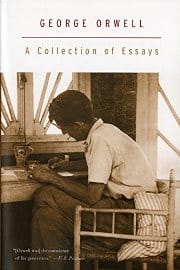
Even after one reading, you’ll remember this one for years. The story, set in British Burma, is about shooting an elephant (it’s not for the squeamish). It’s also the most powerful denunciation of colonialism ever put into writing. Orwell, apparently a free representative of British rule, feels to be nothing more than a puppet succumbing to the whim of the mob.
- The first sentence is the most important one: “In Moulmein, in Lower Burma, I was hated by large numbers of people — the only time in my life that I have been important enough for this to happen to me”.
- You can use just the first paragraph to set the stage for the whole piece of prose.
- Use beautiful language that stirs the imagination: “I remember that it was a cloudy, stuffy morning at the beginning of the rains.” Or: “I watched him beating his bunch of grass against his knees, with that preoccupied grandmotherly air that elephants have.”
- If you’ve ever been to war, you will have a story to tell: “(Never tell me, by the way, that the dead look peaceful. Most of the corpses I have seen looked devilish.)”
- Use simple words, and admit the sad truth only you can perceive: “They did not like me, but with the magical rifle in my hands I was momentarily worth watching”.
- Share words of wisdom to add texture to the writing: “I perceived at this moment that when the white man turns tyrant it is his freedom that he destroys.”
- I highly recommend reading everything written by Orwell, especially if you’re looking for the best essay collections on Amazon or Goodreads.
9. George Orwell – A Hanging
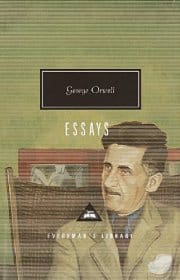
It’s just another day in Burma – time to hang a man. Without much ado, Orwell recounts the grim reality of taking another person’s life. A man is taken from his cage and in a few minutes, he’s going to be hanged. The most horrible thing is the normality of it. It’s a powerful story about human nature. Also, there’s an extraordinary incident with the dog, but I won’t get ahead of myself.
- Create brilliant, yet short descriptions of characters: “He was a Hindu, a puny wisp of a man, with a shaven head and vague liquid eyes. He had a thick, sprouting mustache, absurdly too big for his body, rather like the mustache of a comic man on the films”.
- Understand and share the felt presence of a unique experience: “It is curious, but till that moment I had never realized what it means to destroy a healthy, conscious man”.
- Make your readers hear the sound that will stay with them forever: “And then when the noose was fixed, the prisoner began crying out on his god. It was a high, reiterated cry of “Ram! Ram! Ram! Ram!”
- Make the ending original by refusing the tendency to seek closure or summing it up.
10. Christopher Hitchens – Assassins of The Mind
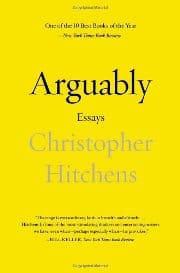
In one of the greatest essays written in defense of free speech, Christopher Hitchens shares many examples of how modern media kneel to the explicit threats of violence posed by Islamic extremists. He recounts the story of his friend, Salman Rushdie, author of Satanic Verses who, for many years, had to watch over his shoulder because of the fatwa of Ayatollah Khomeini. With his usual wit, Hitchens shares various examples of people who died because of their opinions and of editors who refuse to publish anything related to Islam because of fear (and it was written long before the Charlie Hebdo massacre). After reading the essay, you realize that freedom of expression is one of the most precious things we have and that we have to fight for it. I highly recommend all essay collections penned by Hitchens, especially the ones written for Vanity Fair.
- Assume that the readers will know the cultural references. When they do, their self-esteem goes up – they are a part of an insider group.
- When proving your point, give a variety of real-life examples from eclectic sources. Leave no room for ambiguity or vagueness. Research and overall knowledge are essential here.
- Use italics to emphasize a specific word or phrase (here I use the underlining): “We live now in a climate where every publisher and editor and politician has to weigh in advance the possibility of violent Muslim reprisal. In consequence, several things have not happened.”
- Think about how to make it sound more original: “So there is now a hidden partner in our cultural and academic and publishing and the broadcasting world: a shadowy figure that has, uninvited, drawn up a chair to the table.”
11. Christopher Hitchens – The New Commandments
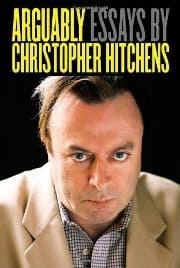
It’s high time to shatter the tablets and amend the biblical rules of conduct. Watch, as Christopher Hitchens slays one commandment after the other on moral, as well as historical grounds. For example, did you know that there are many versions of the divine law dictated by God to Moses which you can find in the Bible? Aren’t we thus empowered to write our version of a proper moral code? If you approach it with an open mind, this essay may change the way you think about the Bible and religion.
- Take the iconoclastic approach. Have a party on the hallowed soil.
- Use humor to undermine orthodox ideas (it seems to be the best way to deal with an established authority).
- Use sarcasm and irony when appropriate (or not): “Nobody is opposed to a day of rest. The international Communist movement got its start by proclaiming a strike for an eight-hour day on May 1, 1886, against Christian employers who used child labor seven days a week”.
- Defeat God on legal grounds: “Wise lawmakers know that it is a mistake to promulgate legislation that is impossible to obey”.
- Be ruthless in the logic of your argument. Provide evidence.
12. Phillip Lopate – Against Joie de Vivre
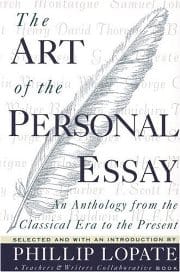
While reading this fantastic essay, this quote from Slavoj Žižek kept coming back to me: “I think that the only life of deep satisfaction is a life of eternal struggle, especially struggle with oneself. If you want to remain happy, just remain stupid. Authentic masters are never happy; happiness is a category of slaves”. I can bear the onus of happiness or joie de vivre for some time. But this force enables me to get free and wallow in the sweet feelings of melancholy and nostalgia. By reading this work of Lopate, you’ll enter into the world of an intelligent man who finds most social rituals a drag. It’s worth exploring.
- Go against the grain. Be flamboyant and controversial (if you can handle it).
- Treat the paragraph like a group of thoughts on one theme. Next paragraph, next theme.
- Use references to other artists to set the context and enrich the prose: “These sunny little canvases with their talented innocence, the third-generation spirit of Montmartre, bore testimony to a love of life so unbending as to leave an impression of rigid narrow-mindedness as extreme as any Savonarola. Their rejection of sorrow was total”.
- Capture the emotions in life that are universal, yet remain unspoken.
- Don’t be afraid to share your intimate experiences.
13. Philip Larkin – The Pleasure Principle
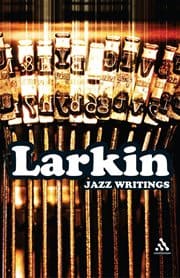
This piece comes from the Required Writing collection of personal essays. Larkin argues that reading in verse should be a source of intimate pleasure – not a medley of unintelligible thoughts that only the author can (or can’t?) decipher. It’s a sobering take on modern poetry and a great call to action for all those involved in it. Well worth a read.
- Write about complicated ideas (such as poetry) simply. You can change how people look at things if you express yourself enough.
- Go boldly. The reader wants a bold writer: “We seem to be producing a new kind of bad poetry, not the old kind that tries to move the reader and fails, but one that does not even try”.
- Play with words and sentence length. Create music: “It is time some of you playboys realized, says the judge, that reading a poem is hard work. Fourteen days in stir. Next case”.
- Persuade the reader to take action. Here, direct language is the most effective.
14. Sigmund Freud – Thoughts for the Times on War and Death
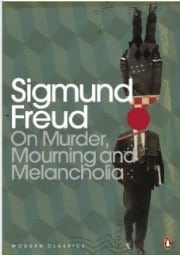
This essay reveals Freud’s disillusionment with the whole project of Western civilization. How the peaceful European countries could engage in a war that would eventually cost over 17 million lives? What stirs people to kill each other? Is it their nature, or are they puppets of imperial forces with agendas of their own? From the perspective of time, this work by Freud doesn’t seem to be fully accurate. Even so, it’s well worth your time.
- Commence with long words derived from Latin. Get grandiloquent, make your argument incontrovertible, and leave your audience discombobulated.
- Use unending sentences, so that the reader feels confused, yet impressed.
- Say it well: “In this way, he enjoyed the blue sea and the grey; the beauty of snow-covered mountains and green meadowlands; the magic of northern forests and the splendor of southern vegetation; the mood evoked by landscapes that recall great historical events, and the silence of untouched nature”.
- Human nature is a subject that never gets dry.
15. Zadie Smith – Some Notes on Attunement
“You are privy to a great becoming, but you recognize nothing” – Francis Dolarhyde. This one is about the elusiveness of change occurring within you. For Zadie, it was hard to attune to the vibes of Joni Mitchell – especially her Blue album. But eventually, she grew up to appreciate her genius, and all the other things changed as well. This top essay is all about the relationship between humans, and art. We shouldn’t like art because we’re supposed to. We should like it because it has an instantaneous, emotional effect on us. Although, according to Stansfield (Gary Oldman) in Léon, liking Beethoven is rather mandatory.
- Build an expectation of what’s coming: “The first time I heard her I didn’t hear her at all”.
- Don’t be afraid of repetition if it feels good.
- Psychedelic drugs let you appreciate things you never appreciated.
- Intertwine a personal journey with philosophical musings.
- Show rather than tell: “My friends pitied their eyes. The same look the faithful give you as you hand them back their “literature” and close the door in their faces”.
- Let the poets speak for you: “That time is past, / And all its aching joys are now no
- more, / And all its dizzy raptures”.
- By voicing your anxieties, you can heal the anxieties of the reader. In that way, you say: “I’m just like you. I’m your friend in this struggle”.
- Admit your flaws to make your persona more relatable.
16. Annie Dillard – Total Eclipse
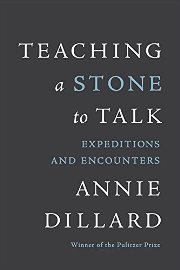
My imagination was always stirred by the scene of the solar eclipse in Pharaoh, by Boleslaw Prus. I wondered about the shock of the disoriented crowd when they saw how their ruler could switch off the light. Getting immersed in this essay by Annie Dillard has a similar effect. It produces amazement and some kind of primeval fear. It’s not only the environment that changes; it’s your mind and the perception of the world. After the eclipse, nothing is going to be the same again.
- Yet again, the power of the first sentence draws you in: “It had been like dying, that sliding down the mountain pass”.
- Don’t miss the extraordinary scene. Then describe it: “Up in the sky, like a crater from some distant cataclysm, was a hollow ring”.
- Use colloquial language. Write as you talk. Short sentences often win.
- Contrast the numinous with the mundane to enthrall the reader.
17. Édouard Levé – When I Look at a Strawberry, I Think of a Tongue

This suicidally beautiful essay will teach you a lot about the appreciation of life and the struggle with mental illness. It’s a collection of personal, apparently unrelated thoughts that show us the rich interior of the author. You look at the real-time thoughts of another person, and then recognize the same patterns within yourself… It sounds like a confession of a person who’s about to take their life, and it’s striking in its originality.
- Use the stream-of-consciousness technique and put random thoughts on paper. Then, polish them: “I have attempted suicide once, I’ve been tempted four times to attempt it”.
- Place the treasure deep within the story: “When I look at a strawberry, I think of a tongue, when I lick one, of a kiss”.
- Don’t worry about what people might think. The more you expose, the more powerful the writing. Readers also take part in the great drama. They experience universal emotions that mostly stay inside. You can translate them into writing.
18. Gloria E. Anzaldúa – How to Tame a Wild Tongue
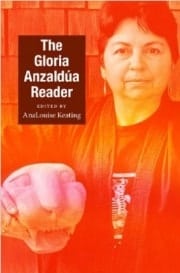
Anzaldúa, who was born in south Texas, had to struggle to find her true identity. She was American, but her culture was grounded in Mexico. In this way, she and her people were not fully respected in either of the countries. This essay is an account of her journey of becoming the ambassador of the Chicano (Mexican-American) culture. It’s full of anecdotes, interesting references, and different shades of Spanish. It’s a window into a new cultural dimension that you’ve never experienced before.
- If your mother tongue is not English, but you write in English, use some of your unique homeland vocabulary.
- You come from a rich cultural heritage. You can share it with people who never heard about it, and are not even looking for it, but it is of immense value to them when they discover it.
- Never forget about your identity. It is precious. It is a part of who you are. Even if you migrate, try to preserve it. Use it to your best advantage and become the voice of other people in the same situation.
- Tell them what’s really on your mind: “So if you want to hurt me, talk badly about my language. Ethnic identity is twin skin to linguistic identity – I am my language”.
19. Kurt Vonnegut – Dispatch From A Man Without a Country
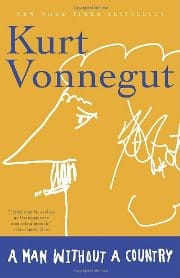
In terms of style, this essay is flawless. It’s simple, conversational, humorous, and yet, full of wisdom. And when Vonnegut becomes a teacher and draws an axis of “beginning – end”, and, “good fortune – bad fortune” to explain literature, it becomes outright hilarious. It’s hard to find an author with such a down-to-earth approach. He doesn’t need to get intellectual to prove a point. And the point could be summed up by the quote from Great Expectations – “On the Rampage, Pip, and off the Rampage, Pip – such is Life!”
- Start with a curious question: “Do you know what a twerp is?”
- Surprise your readers with uncanny analogies: “I am from a family of artists. Here I am, making a living in the arts. It has not been a rebellion. It’s as though I had taken over the family Esso station.”
- Use your natural language without too many special effects. In time, the style will crystalize.
- An amusing lesson in writing from Mr. Vonnegut: “Here is a lesson in creative writing. First rule: Do not use semicolons. They are transvestite hermaphrodites representing absolutely nothing. All they do is show you’ve been to college”.
- You can put actual images or vignettes between the paragraphs to illustrate something.
20. Mary Ruefle – On Fear
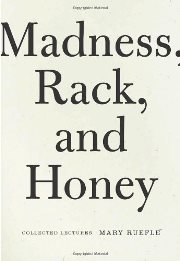
Most psychologists and gurus agree that fear is the greatest enemy of success or any creative activity. It’s programmed into our minds to keep us away from imaginary harm. Mary Ruefle takes on this basic human emotion with flair. She explores fear from so many angles (especially in the world of poetry-writing) that at the end of this personal essay, you will look at it, dissect it, untangle it, and hopefully be able to say “f**k you” the next time your brain is trying to stop you.
- Research your subject thoroughly. Ask people, have interviews, get expert opinions, and gather as much information as possible. Then scavenge through the fields of data, and pull out the golden bits that will let your prose shine.
- Use powerful quotes to add color to your story: “The poet who embarks on the creation of the poem (as I know by experience), begins with the aimless sensation of a hunter about to embark on a night hunt through the remotest of forests. Unaccountable dread stirs in his heart”. – Lorca.
- Writing advice from the essay: “One of the fears a young writer has is not being able to write as well as he or she wants to, the fear of not being able to sound like X or Y, a favorite author. But out of fear, hopefully, is born a young writer’s voice”.
21. Susan Sontag – Against Interpretation
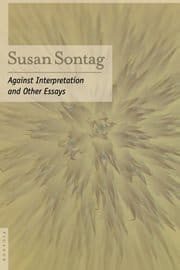
In this highly intellectual essay, Sontag fights for art and its interpretation. It’s a great lesson, especially for critics and interpreters who endlessly chew on works that simply defy interpretation. Why don’t we just leave the art alone? I always hated it when at school they asked me: “What did the author have in mind when he did X or Y?” Iēsous Pantocrator! Hell if I know! I will judge it through my subjective experience!
- Leave the art alone: “Today is such a time, when the project of interpretation is reactionary, stifling. Like the fumes of the automobile and heavy industry which befoul the urban atmosphere, the effusion of interpretations of art today poisons our sensibilities”.
- When you have something really important to say, style matters less.
- There’s no use in creating a second meaning or inviting interpretation of our art. Just leave it be and let it speak for itself.
22. Nora Ephron – A Few Words About Breasts
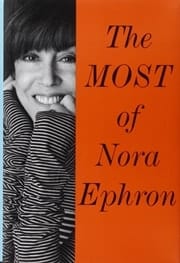
This is a heartwarming, coming-of-age story about a young girl who waits in vain for her breasts to grow. It’s simply a humorous and pleasurable read. The size of breasts is a big deal for women. If you’re a man, you may peek into the mind of a woman and learn many interesting things. If you’re a woman, maybe you’ll be able to relate and at last, be at peace with your bosom.
- Touch an interesting subject and establish a strong connection with the readers (in that case, women with small breasts). Let your personality shine through the written piece. If you are lighthearted, show it.
- Use hyphens to create an impression of real talk: “My house was full of apples and peaches and milk and homemade chocolate chip cookies – which were nice, and good for you, but-not-right-before-dinner-or-you’ll-spoil-your-appetite.”
- Use present tense when you tell a story to add more life to it.
- Share the pronounced, memorable traits of characters: “A previous girlfriend named Solange, who was famous throughout Beverly Hills High School for having no pigment in her right eyebrow, had knitted them for him (angora dice)”.
23. Carl Sagan – Does Truth Matter – Science, Pseudoscience, and Civilization
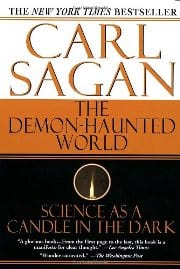
Carl Sagan was one of the greatest proponents of skepticism, and an author of numerous books, including one of my all-time favorites – The Demon-Haunted World . He was also a renowned physicist and the host of the fantastic Cosmos: A Personal Voyage series, which inspired a whole generation to uncover the mysteries of the cosmos. He was also a dedicated weed smoker – clearly ahead of his time. The essay that you’re about to read is a crystallization of his views about true science, and why you should check the evidence before believing in UFOs or similar sorts of crap.
- Tell people the brutal truth they need to hear. Be the one who spells it out for them.
- Give a multitude of examples to prove your point. Giving hard facts helps to establish trust with the readers and show the veracity of your arguments.
- Recommend a good book that will change your reader’s minds – How We Know What Isn’t So: The Fallibility of Human Reason in Everyday Life
24. Paul Graham – How To Do What You Love
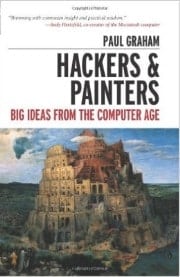
How To Do What You Love should be read by every college student and young adult. The Internet is flooded with a large number of articles and videos that are supposed to tell you what to do with your life. Most of them are worthless, but this one is different. It’s sincere, and there’s no hidden agenda behind it. There’s so much we take for granted – what we study, where we work, what we do in our free time… Surely we have another two hundred years to figure it out, right? Life’s too short to be so naïve. Please, read the essay and let it help you gain fulfillment from your work.
- Ask simple, yet thought-provoking questions (especially at the beginning of the paragraph) to engage the reader: “How much are you supposed to like what you do?”
- Let the readers question their basic assumptions: “Prestige is like a powerful magnet that warps even your beliefs about what you enjoy. It causes you to work not on what you like, but what you’d like to like”.
- If you’re writing for a younger audience, you can act as a mentor. It’s beneficial for younger people to read a few words of advice from a person with experience.
25. John Jeremiah Sullivan – Mister Lytle
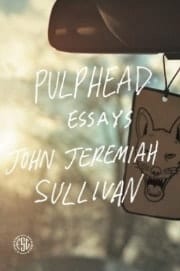
A young, aspiring writer is about to become a nurse of a fading writer – Mister Lytle (Andrew Nelson Lytle), and there will be trouble. This essay by Sullivan is probably my favorite one from the whole list. The amount of beautiful sentences it contains is just overwhelming. But that’s just a part of its charm. It also takes you to the Old South which has an incredible atmosphere. It’s grim and tawny but you want to stay there for a while.
- Short, distinct sentences are often the most powerful ones: “He had a deathbed, in other words. He didn’t go suddenly”.
- Stay consistent with the mood of the story. When reading Mister Lytle you are immersed in that southern, forsaken, gloomy world, and it’s a pleasure.
- The spectacular language that captures it all: “His French was superb, but his accent in English was best—that extinct mid-Southern, land-grant pioneer speech, with its tinges of the abandoned Celtic urban Northeast (“boned” for burned) and its raw gentility”.
- This essay is just too good. You have to read it.
26. Joan Didion – On Self Respect
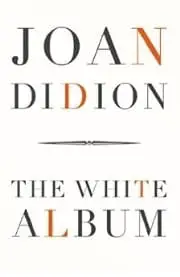
Normally, with that title, you would expect some straightforward advice about how to improve your character and get on with your goddamn life – but not from Joan Didion. From the very beginning, you can feel the depth of her thinking, and the unmistakable style of a true woman who’s been hurt. You can learn more from this essay than from whole books about self-improvement . It reminds me of the scene from True Detective, where Frank Semyon tells Ray Velcoro to “own it” after he realizes he killed the wrong man all these years ago. I guess we all have to “own it”, recognize our mistakes, and move forward sometimes.
- Share your moral advice: “Character — the willingness to accept responsibility for one’s own life — is the source from which self-respect springs”.
- It’s worth exploring the subject further from a different angle. It doesn’t matter how many people have already written on self-respect or self-reliance – you can still write passionately about it.
- Whatever happens, you must take responsibility for it. Brave the storms of discontent.
27. Susan Sontag – Notes on Camp
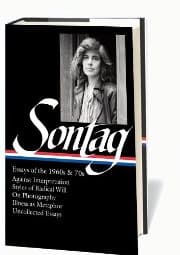
I’ve never read anything so thorough and lucid about an artistic current. After reading this essay, you will know what camp is. But not only that – you will learn about so many artists you’ve never heard of. You will follow their traces and go to places where you’ve never been before. You will vastly increase your appreciation of art. It’s interesting how something written as a list could be so amazing. All the listicles we usually see on the web simply cannot compare with it.
- Talking about artistic sensibilities is a tough job. When you read the essay, you will see how much research, thought and raw intellect came into it. But that’s one of the reasons why people still read it today, even though it was written in 1964.
- You can choose an unorthodox way of expression in the medium for which you produce. For example, Notes on Camp is a listicle – one of the most popular content formats on the web. But in the olden days, it was uncommon to see it in print form.
- Just think about what is camp: “And third among the great creative sensibilities is Camp: the sensibility of failed seriousness, of the theatricalization of experience. Camp refuses both the harmonies of traditional seriousness and the risks of fully identifying with extreme states of feeling”.
28. Ralph Waldo Emerson – Self-Reliance
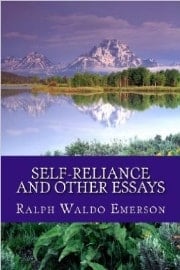
That’s the oldest one from the lot. Written in 1841, it still inspires generations of people. It will let you understand what it means to be self-made. It contains some of the most memorable quotes of all time. I don’t know why, but this one especially touched me: “Every true man is a cause, a country, and an age; requires infinite spaces and numbers and time fully to accomplish his design, and posterity seems to follow his steps as a train of clients”. Now isn’t it purely individualistic, American thought? Emerson told me (and he will tell you) to do something amazing with my life. The language it contains is a bit archaic, but that just adds to the weight of the argument. You can consider it to be a meeting with a great philosopher who shaped the ethos of the modern United States.
- You can start with a powerful poem that will set the stage for your work.
- Be free in your creative flow. Do not wait for the approval of others: “What I must do is all that concerns me, not what the people think. This rule, equally arduous in actual and in intellectual life, may serve for the whole distinction between greatness and meanness”.
- Use rhetorical questions to strengthen your argument: “I hear a preacher announce for his text and topic the expediency of one of the institutions of his church. Do I not know beforehand that not possibly say a new and spontaneous word?”
29. David Foster Wallace – Consider The Lobster
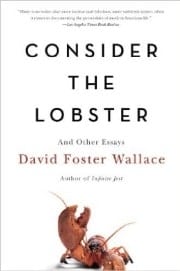
When you want simple field notes about a food festival, you needn’t send there the formidable David Foster Wallace. He sees right through the hypocrisy and cruelty behind killing hundreds of thousands of innocent lobsters – by boiling them alive. This essay uncovers some of the worst traits of modern American people. There are no apologies or hedging one’s bets. There’s just plain truth that stabs you in the eye like a lobster claw. After reading this essay, you may reconsider the whole animal-eating business.
- When it’s important, say it plainly and stagger the reader: “[Lobsters] survive right up until they’re boiled. Most of us have been in supermarkets or restaurants that feature tanks of live lobster, from which you can pick out your supper while it watches you point”.
- In your writing, put exact quotes of the people you’ve been interviewing (including slang and grammatical errors). It makes it more vivid, and interesting.
- You can use humor in serious situations to make your story grotesque.
- Use captions to expound on interesting points of your essay.
30. David Foster Wallace – The Nature of the Fun
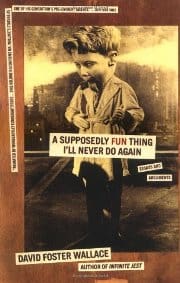
The famous novelist and author of the most powerful commencement speech ever done is going to tell you about the joys and sorrows of writing a work of fiction. It’s like taking care of a mutant child that constantly oozes smelly liquids. But you love that child and you want others to love it too. It’s a very humorous account of what it means to be an author. If you ever plan to write a novel, you should read that one. And the story about the Chinese farmer is just priceless.
- Base your point on a chimerical analogy. Here, the writer’s unfinished work is a “hideously damaged infant”.
- Even in expository writing, you may share an interesting story to keep things lively.
- Share your true emotions (even when you think they won’t interest anyone). Often, that’s exactly what will interest the reader.
- Read the whole essay for marvelous advice on writing fiction.
31. Margaret Atwood – Attitude
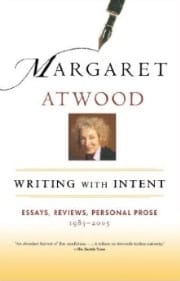
This is not an essay per se, but I included it on the list for the sake of variety. It was delivered as a commencement speech at The University of Toronto, and it’s about keeping the right attitude. Soon after leaving university, most graduates have to forget about safety, parties, and travel and start a new life – one filled with a painful routine that will last until they drop. Atwood says that you don’t have to accept that. You can choose how you react to everything that happens to you (and you don’t have to stay in that dead-end job for the rest of your days).
- At times, we are all too eager to persuade, but the strongest persuasion is not forceful. It’s subtle. It speaks to the heart. It affects you gradually.
- You may be tempted to talk about a subject by first stating what it is not, rather than what it is. Try to avoid that.
- Simple advice for writers (and life in general): “When faced with the inevitable, you always have a choice. You may not be able to alter reality, but you can alter your attitude towards it”.
32. Jo Ann Beard – The Fourth State of Matter
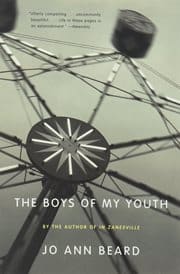
Read that one as soon as possible. It’s one of the most masterful and impactful essays you’ll ever read. It’s like a good horror – a slow build-up, and then your jaw drops to the ground. To summarize the story would be to spoil it, so I recommend that you just dig in and devour this essay in one sitting. It’s a perfect example of “show, don’t tell” writing, where the actions of characters are enough to create the right effect. No need for flowery adjectives here.
- The best story you will tell is going to come from your personal experience.
- Use mysteries that will nag the reader. For example, at the beginning of the essay, we learn about the “vanished husband” but there’s no explanation. We have to keep reading to get the answer.
- Explain it in simple terms: “You’ve got your solid, your liquid, your gas, and then your plasma”. Why complicate?
33. Terence McKenna – Tryptamine Hallucinogens and Consciousness
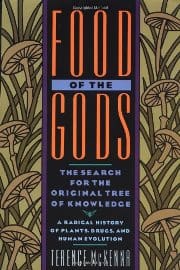
To me, Terence McKenna was one of the most interesting thinkers of the twentieth century. His many lectures (now available on YouTube) attracted millions of people who suspect that consciousness holds secrets yet to be unveiled. McKenna consumed psychedelic drugs for most of his life and it shows (in a positive way). Many people consider him a looney, and a hippie, but he was so much more than that. He dared to go into the abyss of his psyche and come back to tell the tale. He also wrote many books (the most famous being Food Of The Gods ), built a huge botanical garden in Hawaii , lived with shamans, and was a connoisseur of all things enigmatic and obscure. Take a look at this essay, and learn more about the explorations of the subconscious mind.
- Become the original thinker, but remember that it may require extraordinary measures: “I call myself an explorer rather than a scientist because the area that I’m looking at contains insufficient data to support even the dream of being a science”.
- Learn new words every day to make your thoughts lucid.
- Come up with the most outlandish ideas to push the envelope of what’s possible. Don’t take things for granted or become intellectually lazy. Question everything.
34. Eudora Welty – The Little Store
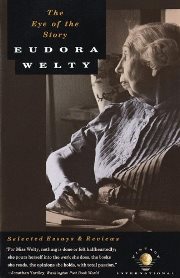
By reading this little-known essay, you will be transported into the world of the old American South. It’s a remembrance of trips to the little store in a little town. It’s warm and straightforward, and when you read it, you feel like a child once more. All these beautiful memories live inside of us. They lay somewhere deep in our minds, hidden from sight. The work by Eudora Welty is an attempt to uncover some of them and let you get reacquainted with some smells and tastes of the past.
- When you’re from the South, flaunt it. It’s still good old English but sometimes it sounds so foreign. I can hear the Southern accent too: “There were almost tangible smells – licorice recently sucked in a child’s cheek, dill-pickle brine that had leaked through a paper sack in a fresh trail across the wooden floor, ammonia-loaded ice that had been hoisted from wet Croker sacks and slammed into the icebox with its sweet butter at the door, and perhaps the smell of still-untrapped mice”.
- Yet again, never forget your roots.
- Childhood stories can be the most powerful ones. You can write about how they shaped you.
35. John McPhee – The Search for Marvin Gardens
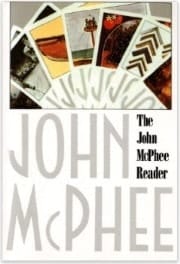
The Search for Marvin Gardens contains many layers of meaning. It’s a story about a Monopoly championship, but also, it’s the author’s search for the lost streets visible on the board of the famous board game. It also presents a historical perspective on the rise and fall of civilizations, and on Atlantic City, which once was a lively place, and then, slowly declined, the streets filled with dirt and broken windows.
- There’s nothing like irony: “A sign- ‘Slow, Children at Play’- has been bent backward by an automobile”.
- Telling the story in apparently unrelated fragments is sometimes better than telling the whole thing in a logical order.
- Creativity is everything. The best writing may come just from connecting two ideas and mixing them to achieve a great effect. Shush! The muse is whispering.
36. Maxine Hong Kingston – No Name Woman
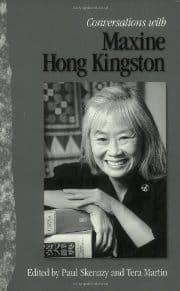
A dead body at the bottom of the well makes for a beautiful literary device. The first line of Orhan Pamuk’s novel My Name Is Red delivers it perfectly: “I am nothing but a corpse now, a body at the bottom of a well”. There’s something creepy about the idea of the well. Just think about the “It puts the lotion in the basket” scene from The Silence of the Lambs. In the first paragraph of Kingston’s essay, we learn about a suicide committed by uncommon means of jumping into the well. But this time it’s a real story. Who was this woman? Why did she do it? Read the essay.
- Mysterious death always gets attention. The macabre details are like daiquiris on a hot day – you savor them – you don’t let them spill.
- One sentence can speak volumes: “But the rare urge west had fixed upon our family, and so my aunt crossed boundaries not delineated in space”.
- It’s interesting to write about cultural differences – especially if you have the relevant experience. Something normal for us is unthinkable for others. Show this different world.
- The subject of sex is never boring.
37. Joan Didion – On Keeping A Notebook
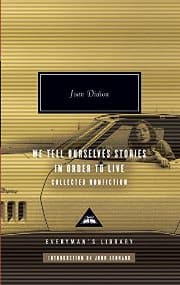
Slouching Towards Bethlehem is one of the most famous collections of essays of all time. In it, you will find a curious piece called On Keeping A Notebook. It’s not only a meditation about keeping a journal. It’s also Didion’s reconciliation with her past self. After reading it, you will seriously reconsider your life’s choices and look at your life from a wider perspective.
- When you write things down in your journal, be more specific – unless you want to write a deep essay about it years later.
- Use the beauty of the language to relate to the past: “I have already lost touch with a couple of people I used to be; one of them, a seventeen-year-old, presents little threat, although it would be of some interest to me to know again what it feels like to sit on a river levee drinking vodka-and-orange-juice and listening to Les Paul and Mary Ford and their echoes sing ‘How High the Moon’ on the car radio”.
- Drop some brand names if you want to feel posh.
38. Joan Didion – Goodbye To All That
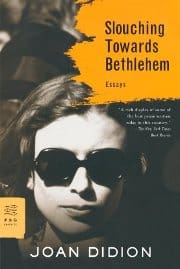
This one touched me because I also lived in New York City for a while. I don’t know why, but stories about life in NYC are so often full of charm and this eerie-melancholy-jazz feeling. They are powerful. They go like this: “There was a hard blizzard in NYC. As the sound of sirens faded, Tony descended into the dark world of hustlers and pimps.” That’s pulp literature but in the context of NYC, it always sounds cool. Anyway, this essay is amazing in too many ways. You just have to read it.
- Talk about New York City. They will read it.
- Talk about the human experience: “It did occur to me to call the desk and ask that the air conditioner be turned off, I never called, because I did not know how much to tip whoever might come—was anyone ever so young?”
- Look back at your life and reexamine it. Draw lessons from it.
39. George Orwell – Reflections on Gandhi
George Orwell could see things as they were. No exaggeration, no romanticism – just facts. He recognized totalitarianism and communism for what they were and shared his worries through books like 1984 and Animal Farm . He took the same sober approach when dealing with saints and sages. Today, we regard Gandhi as one of the greatest political leaders of the twentieth century – and rightfully so. But did you know that when asked about the Jews during World War II, Gandhi said that they should commit collective suicide and that it: “would have aroused the world and the people of Germany to Hitler’s violence.” He also recommended utter pacifism in 1942, during the Japanese invasion, even though he knew it would cost millions of lives. But overall he was a good guy. Read the essay and broaden your perspective on the Bapu of the Indian Nation.
- Share a philosophical thought that stops the reader for a moment: “No doubt alcohol, tobacco, and so forth are things that a saint must avoid, but sainthood is also a thing that human beings must avoid”.
- Be straightforward in your writing – no mannerisms, no attempts to create ‘style’, and no invocations of the numinous – unless you feel the mystical vibe.
40. George Orwell – Politics and the English Language
Let Mr. Orwell give you some writing tips. Written in 1946, this essay is still one of the most helpful documents on writing in English. Orwell was probably the first person who exposed the deliberate vagueness of political language. He was very serious about it and I admire his efforts to slay all unclear sentences (including ones written by distinguished professors). But it’s good to make it humorous too from time to time. My favorite examples of that would be the immortal Soft Language sketch by George Carlin or the “Romans Go Home” scene from Monty Python’s Life of Brian. Overall, it’s a great essay filled with examples from many written materials. It’s a must-read for any writer.
- Listen to the master: “This mixture of vagueness and sheer incompetence is the most marked characteristic of modern English prose.” Do something about it.
- This essay is all about writing better, so go to the source if you want the goodies.

Other Essays You May Find Interesting
The list that I’ve prepared is by no means complete. The literary world is full of exciting essays and you’ll never know which one is going to change your life. I’ve found reading essays very rewarding because sometimes, a single one means more than reading a whole book. It’s almost like wandering around and peeking into the minds of the greatest writers and thinkers that ever lived. To make this list more comprehensive, below I included more essays you may find interesting.
Oliver Sacks – On Libraries
One of the greatest contributors to the knowledge about the human mind, Oliver Sacks meditates on the value of libraries and his love of books.
Noam Chomsky – The Responsibility of Intellectuals
Chomsky did probably more than anyone else to define the role of the intelligentsia in the modern world . There is a war of ideas over there – good and bad – intellectuals are going to be those who ought to be fighting for the former.
Sam Harris – The Riddle of The Gun
Sam Harris, now a famous philosopher and neuroscientist, takes on the problem of gun control in the United States. His thoughts are clear of prejudice. After reading this, you’ll appreciate the value of logical discourse overheated, irrational debate that more often than not has real implications on policy.
Tim Ferriss – Some Practical Thoughts on Suicide
This piece was written as a blog post , but it’s worth your time. The author of the NYT bestseller The 4-Hour Workweek shares an emotional story about how he almost killed himself, and what can you do to save yourself or your friends from suicide.
Edward Said – Reflections on Exile
The life of Edward Said was a truly fascinating one. Born in Jerusalem, he lived between Palestine and Egypt and finally settled down in the United States, where he completed his most famous work – Orientalism. In this essay, he shares his thoughts about what it means to be in exile.
Richard Feynman – It’s as Simple as One, Two, Three…
Richard Feynman is one of the most interesting minds of the twentieth century. He was a brilliant physicist, but also an undeniably great communicator of science, an artist, and a traveler. By reading this essay, you can observe his thought process when he tries to figure out what affects our perception of time. It’s a truly fascinating read.
Rabindranath Tagore – The Religion of The Forest
I like to think about Tagore as my spiritual Friend. His poems are just marvelous. They are like some of the Persian verses that praise love, nature, and the unity of all things. By reading this short essay, you will learn a lot about Indian philosophy and its relation to its Western counterpart.
Richard Dawkins – Letter To His 10-Year-Old Daughter
Every father should be able to articulate his philosophy of life to his children. With this letter that’s similar to what you find in the Paris Review essays , the famed atheist and defender of reason, Richard Dawkins, does exactly that. It’s beautifully written and stresses the importance of looking at evidence when we’re trying to make sense of the world.
Albert Camus – The Minotaur (or, The Stop In Oran)
Each person requires a period of solitude – a period when one’s able to gather thoughts and make sense of life. There are many places where you may attempt to find quietude. Albert Camus tells about his favorite one.
Koty Neelis – 21 Incredible Life Lessons From Anthony Bourdain
I included it as the last one because it’s not really an essay, but I just had to put it somewhere. In this listicle, you’ll find the 21 most original thoughts of the high-profile cook, writer, and TV host, Anthony Bourdain. Some of them are shocking, others are funny, but they’re all worth checking out.
Lucius Annaeus Seneca – On the Shortness of Life
It’s similar to the Rubaiyat of Omar Khayyam because it praises life. Seneca shares some of his stoic philosophy and tells you not to waste your time on stupidities. Drink! – for once dead you shall never return.
Bertrand Russell – In Praise of Idleness
This old essay is a must-read for modern humans. We are so preoccupied with our work, our phones, and all the media input we drown in our business. Bertrand Russell tells you to chill out a bit – maybe it will do you some good.
James Baldwin – Stranger in the Village
It’s an essay on the author’s experiences as an African-American in a Swiss village, exploring race, identity, and alienation while highlighting the complexities of racial dynamics and the quest for belonging.
Bonus – More writing tips from two great books
The mission to improve my writing skills took me further than just going through the essays. I’ve come across some great books on writing too. I highly recommend you read them in their entirety. They’re written beautifully and contain lots of useful knowledge. Below you’ll find random (but useful) notes that I took from The Sense of Style and On Writing.
The Sense of Style – By Steven Pinker
- Style manuals are full of inconsistencies. Following their advice might not be the best idea. They might make your prose boring.
- Grammarians from all eras condemn students for not knowing grammar. But it just evolves. It cannot be rigid.
- “Nothing worth learning can be taught” – Oscar Wilde. It’s hard to learn to write from a manual – you have to read, write, and analyze.
- Good writing makes you imagine things and feel them for yourself – use word pictures.
- Don’t fear using voluptuous words.
- Phonesthetics – or how the words sound.
- Use parallel language (consistency of tense).
- Good writing finishes strong.
- Write to someone. Never write for no one in mind. Try to show people your view of the world.
- Don’t tell everything you are going to say in summary (signposting) – be logical, but be conversational.
- Don’t be pompous.
- Don’t use quotation marks where they don’t “belong”. Be confident about your style.
- Don’t hedge your claims (research first, and then tell it like it is).
- Avoid clichés and meta-concepts (concepts about concepts). Be more straightforward!
- Not prevention – but prevents or prevented – don’t use dead nouns.
- Be more vivid while using your mother tongue – don’t use passive where it’s not needed. Direct the reader’s gaze to something in the world.
- The curse of knowledge – the reader doesn’t know what you know – beware of that.
- Explain technical terms.
- Use examples when you explain a difficult term.
- If you ever say “I think I understand this” it probably means you don’t.
- It’s better to underestimate the lingo of your readers than to overestimate it.
- Functional fixedness – if we know some object (or idea) well, we tend to see it in terms of usage, not just as an object.
- Use concrete language instead of an abstraction.
- Show your work to people before you publish (get feedback!).
- Wait for a few days and then revise, revise, revise. Think about clarity and the sound of sentences. Then show it to someone. Then revise one more time. Then publish (if it’s to be serious work).
- Look at it from the perspective of other people.
- Omit needless words.
- Put the heaviest words at the end of the sentence.
- It’s good to use the passive, but only when appropriate.
- Check all text for cohesion. Make sure that the sentences flow gently.
- In expository work, go from general to more specific. But in journalism start from the big news and then give more details.
- Use the paragraph break to give the reader a moment to take a breath.
- Use the verb instead of a noun (make it more active) – not “cancellation”, but “canceled”. But after you introduce the action, you can refer to it with a noun.
- Avoid too many negations.
- If you write about why something is so, don’t spend too much time writing about why it is not.
On Writing Well – By William Zinsser
- Writing is a craft. You need to sit down every day and practice your craft.
- You should re-write and polish your prose a lot.
- Throw out all the clutter. Don’t keep it because you like it. Aim for readability.
- Look at the best examples of English literature . There’s hardly any needless garbage there.
- Use shorter expressions. Don’t add extra words that don’t bring any value to your work.
- Don’t use pompous language. Use simple language and say plainly what’s going on (“because” equals “because”).
- The media and politics are full of cluttered prose (because it helps them to cover up for their mistakes).
- You can’t add style to your work (and especially, don’t add fancy words to create an illusion of style). That will look fake. You need to develop a style.
- Write in the “I” mode. Write to a friend or just for yourself. Show your personality. There is a person behind the writing.
- Choose your words carefully. Use the dictionary to learn different shades of meaning.
- Remember about phonology. Make music with words .
- The lead is essential. Pull the reader in. Otherwise, your article is dead.
- You don’t have to make the final judgment on any topic. Just pick the right angle.
- Do your research. Not just obvious research, but a deep one.
- When it’s time to stop, stop. And finish strong. Think about the last sentence. Surprise them.
- Use quotations. Ask people. Get them talking.
- If you write about travel, it must be significant to the reader. Don’t bother with the obvious. Choose your words with special care. Avoid travel clichés at all costs. Don’t tell that the sand was white and there were rocks on the beach. Look for the right detail.
- If you want to learn how to write about art, travel, science, etc. – read the best examples available. Learn from the masters.
- Concentrate on one big idea (“Let’s not go peeing down both legs”).
- “The reader has to feel that the writer is feeling good.”
- One very helpful question: “What is the piece really about?” (Not just “What the piece is about?”)
Now immerse yourself in the world of essays
By reading the essays from the list above, you’ll become a better writer , a better reader, but also a better person. An essay is a special form of writing. It is the only literary form that I know of that is an absolute requirement for career or educational advancement. Nowadays, you can use an AI essay writer or an AI essay generator that will get the writing done for you, but if you have personal integrity and strong moral principles, avoid doing this at all costs. For me as a writer, the effect of these authors’ masterpieces is often deeply personal. You won’t be able to find the beautiful thoughts they contain in any other literary form. I hope you enjoy the read and that it will inspire you to do your writing. This list is only an attempt to share some of the best essays available online. Next up, you may want to check the list of magazines and websites that accept personal essays .

Digital marketing course: Join my full AI Marketing course, with over 6h and 30 minutes of video lessons and 5 bonuses and learn the skills necessary to thrive as a marketer in the digital era.

Rafal Reyzer
Hey there, welcome to my blog! I'm a full-time entrepreneur building two companies, a digital marketer, and a content creator with 10+ years of experience. I started RafalReyzer.com to provide you with great tools and strategies you can use to become a proficient digital marketer and achieve freedom through online creativity. My site is a one-stop shop for digital marketers, and content enthusiasts who want to be independent, earn more money, and create beautiful things. Explore my journey here , and don't miss out on my AI Marketing Mastery online course.
Make Lists, Not War
The meta-lists website, best essays of all time – ranked.
A reader suggested I create a meta-list of the best essays of all time, so I did. I found over 12 best essays lists and several essay anthologies and combined the essays into one meta-list. The meta-list below includes every essay that was on at least two of the original source lists. They are organized by rank, that is, with the essays on the most lists at the top. To see the same list organized chronologically, go HERE .
Note 1: Some of the essays are actually chapters from books. In such cases, I have identified the source book.
Note 2: Some of the essays are book-length, such as Virginia Woolf’s A Room of One’s Own . One book listed as an essay by two listers – Fernando Pessoa’s The Book of Disquiet – is also regularly categorized as a work of fiction.
On 11 lists James Baldwin – Notes of a Native Son (1955)
On 6 lists George Orwell – Shooting an Elephant (1936) E.B. White – Once More to the Lake (1941) Joan Didion – Goodbye To All That (1968)
On 5 lists Joan Didion – On Keeping A Notebook (1968) Annie Dillard – Total Eclipse (1982) Jo Ann Beard – The Fourth State of Matter (1996) David Foster Wallace – A Supposedly Fun Thing I Will Never Do Again (1996)
On 4 lists William Hazlitt – On the Pleasure of Hating (1823) Ralph Waldo Emerson – Self-Reliance (1841) Virginia Woolf – A Room of One’s Own (1928) Virginia Woolf – The Death of a Moth (1942) George Orwell – Such, Such Were the Joys (1952) Joan Didion – In Bed (1968) Amy Tan – Mother Tongue (1991) David Foster Wallace – Consider The Lobster (2005)
On 3 lists Jonathan Swift – A Modest Proposal (1729) Virginia Woolf – Street Haunting: A London Adventure (1930) John McPhee – The Search for Marvin Gardens (1972) Joan Didion – The White Album (1968-1978) Eudora Welty – The Little Store (1978) Phillip Lopate – Against Joie de Vivre (1989)
On 2 lists Sei Shonagon – Hateful Things (from The Pillow Book ) (1002) Yoshida Kenko – Essays in Idleness (1332) Michel de Montaigne – On Some Verses of Virgil (1580) Robert Burton – Anatomy of Melancholy (1621) John Milton – Areopagitica (1644) William Hazlitt – On Going a Journey (1822) Charles Lamb – The Superannuated Man (1823) Henry David Thoreau – Civil Disobedience (1849) Henry David Thoreau – Where I Lived, and What I Lived For (from Walden ) (1854) Henry David Thoreau – Economy (from Walden ) (1854) Henry David Thoreau – Walking (1861) Robert Louis Stevenson – The Lantern-Bearers (1888) Zora Neale Hurston – How It Feels to Be Colored Me (1928) George Orwell – A Hanging (1931) Junichiro Tanizaki – In Praise of Shadows (1933) Fernando Pessoa – The Book of Disquiet (1935) James Agee and Walker Evans – Let Us Now Praise Famous Men (1941) Simone Weil – On Human Personality (1943) M.F.K. Fisher – The Flaw (1943) Vladimir Nabokov – Speak, Memory (1951, revised 1966) Mary McCarthy – Artists in Uniform: A Story (1953) E.B. White – Goodbye to Forty-Eighth Street (1957) Martin Luther King, Jr. – Letter from Birmingham Jail (1963) Joseph Mitchell – Joe Gould’s Secret (1964) Susan Sontag – Against Interpretation (1966) Edward Hoagland – The Courage of Turtles (1970) Annie Dillard – Seeing (from Pilgrim at Tinker Creek ) (1974) Maxine Hong Kingston – No Name Woman (from The Woman Warrior ) (1976) Roland Barthes – Camera Lucida: Reflections on Photography (1982) Annie Dillard – Living Like Weasels (1982) Gloria E. Anzaldúa – How to Tame a Wild Tongue (1987) Italo Calvino – Exactitude (1988) Richard Rodriguez – Late Victorians (1990) David Wojnarowicz – Being Queer in America: A Journal of Disintegration (1991) Seymour Krim – To My Brothers & Sisters in the Failure Business (1991) Anne Carson – The Anthropology of Water (1995) Susan Sontag – Regarding the Pain of Others (2003) Etel Adnan – In the Heart of the Heart of Another Country (2005) Paul LaFarge – Destroy All Monsters (2006) Brian Doyle – Joyas Voladoras (2012)
Share this:

The Best George Orwell Essays Everyone Should Read
By Dr Oliver Tearle (Loughborough University)
George Orwell (1903-50) is known around the world for his satirical novella Animal Farm and his dystopian novel Nineteen Eighty-Four , but he was arguably at his best in the essay form. Below, we’ve selected and introduced ten of Orwell’s best essays for the interested newcomer to his non-fiction, but there are many more we could have added. What do you think is George Orwell’s greatest essay?
1. ‘ Why I Write ’.
This 1946 essay is notable for at least two reasons: one, it gives us a neat little autobiography detailing Orwell’s development as a writer; and two, it includes four ‘motives for writing’ which break down as egoism (wanting to seem clever), aesthetic enthusiasm (taking delight in the sounds of words etc.), the historical impulse (wanting to record things for posterity), and the political purpose (wanting to ‘push the world in a certain direction’).
2. ‘ Politics and the English Language ’.
The English language is ‘in a bad way’, Orwell argues in this famous essay from 1946. As its title suggests, Orwell identifies a link between the (degraded) English language of his time and the degraded political situation: Orwell sees modern political discourse as being less a matter of words chosen for their clear meanings than a series of stock phrases slung together.
Orwell concludes with six rules or guidelines for political writers and essayists, which include: never use a long word when a short one will do, or a specialist or foreign term when a simpler English one should suffice.
We have analysed this classic essay here .
3. ‘ Shooting an Elephant ’.
This is an early Orwell essay, from 1936. In it, he recalls his (possibly fictionalised) experiences as a police officer in Burma, when he had to shoot an elephant that had got out of hand. Orwell extrapolates from this one event, seeing it as a microcosm of imperialism, wherein the coloniser loses his humanity and freedom through oppressing others.
We have analysed this essay here .
4. ‘ Decline of the English Murder ’.
In this 1946 essay, Orwell writes about the British fascination with murder, focusing in particular on the period of 1850-1925, which Orwell identifies as the golden age or ‘great period in murder’ in the media and literature. But what has happened to murder in the British newspapers?
Orwell claims that the Second World War has desensitised people to brutal acts of killing, but also that there is less style and art in modern murders. Oscar Wilde would no doubt agree with Orwell’s point of view!
5. ‘ Confessions of a Book Reviewer ’.
This 1946 essay makes book-reviewing as a profession or trade – something that seems so appealing and aspirational to many book-lovers – look like a life of drudgery. Why, Orwell asks, does virtually every book that’s published have to be reviewed? It would be best, he argues, to be more discriminating and devote more column inches to the most deserving of books.
6. ‘ A Hanging ’.
This is another Burmese recollection from Orwell, and a very early work, dating from 1931. Orwell describes a condemned criminal being executed by hanging, using this event as a way in to thinking about capital punishment and how, as Orwell put it elsewhere, a premeditated execution can seem more inhumane than a thousand murders.
We discuss this Orwell essay in more detail here .
7. ‘ The Lion and the Unicorn ’.
Subtitled ‘Socialism and the English Genius’, this is another essay Orwell wrote about Britain in the wake of the outbreak of the Second World War. Published in 1941, this essay takes its title from the heraldic symbols for England (the lion) and Scotland (the unicorn). Orwell argues that some sort of socialist revolution is needed to wrest Britain out of its outmoded ways and an overhaul of the British class system will help Britain to defeat the Nazis.
The long essay contains a section, ‘England Your England’, which is often reprinted as a standalone essay, written as the German bomber planes were whizzing overhead during the Blitz of 1941. This part of the essay is a critique of blind English patriotism during wartime and an attempt to pin down ‘English’ values at a time when England itself was under threat from Nazi invasion.
8. ‘ My Country Right or Left ’.
This 1940 essay shows what a complex and nuanced thinker Orwell was when it came to political labels such as ‘left-wing’ and ‘right-wing’. Although Orwell was on the left, he also held patriotic (although not exactly fervently nationalistic) attitudes towards England which many of his comrades on the left found baffling.
As with ‘England Your England’ above, the wartime context is central to Orwell’s argument, and lends his discussion of the relationship between left-wing politics and patriotic values an urgency and immediacy.
9. ‘ Bookshop Memories ’.
As well as writing on politics and being a writer, Orwell also wrote perceptively about readers and book-buyers – as in this 1936 essay, published the same year as his novel Keep the Aspidistra Flying , which combined both bookshops and writers (the novel focuses on Gordon Comstock, an aspiring poet).
In ‘Bookshop Memories’, reflecting on his own time working as an assistant in a bookshop, Orwell divides those who haunt bookshops into various types: the snobs after a first edition, the Oriental students, and so on.
10. ‘ A Nice Cup of Tea ’.
Orwell didn’t just write about literature and politics. He also wrote about things like the perfect pub, and how to make the best cup of tea, for the London Evening Standard in the late 1940s. Here, in this essay from 1946, Orwell offers eleven ‘golden rules’ for making a tasty cuppa, arguing that people disagree vehemently how to make a perfect cup of tea because it is one of the ‘mainstays of civilisation’. Hear, hear.
3 thoughts on “The Best George Orwell Essays Everyone Should Read”
Thanks, Orwell was a master at combining wisdom and readability. I also like his essay on Edward Lear, although some of his observations are very much of their time: https://edwardleartrail.wordpress.com/2018/10/16/george-orwell-on-edward-lear/
The Everyman edition of Orwell’s essays (1200 pages !) is my desert island book. I like Shooting the Elephant altho Julian Barnes seems to believe this is fictitious. Is this still a live debate ?
- Pingback: The Best George Orwell Essays Everyone Should Read
Leave a Reply Cancel reply
Discover more from interesting literature.
Subscribe now to keep reading and get access to the full archive.
Continue reading

Neuroscience
How to make a map of smell
We can split light by a prism, sounds by tones, but surely the world of odour is too complex and personal? Strangely, no
Jason Castro

Conscientious unbelievers
How, a century ago, radical freethinkers quietly and persistently subverted Scotland’s Christian establishment
Felicity Loughlin

History of technology
Why America fell for guns
The US today has extraordinary levels of gun ownership. But to see this as a venerable tradition is to misread history

Psychiatry and psychotherapy
The therapist who hated me
Going to a child psychoanalyst four times a week for three years was bad enough. Reading what she wrote about me was worse
Michael Bacon
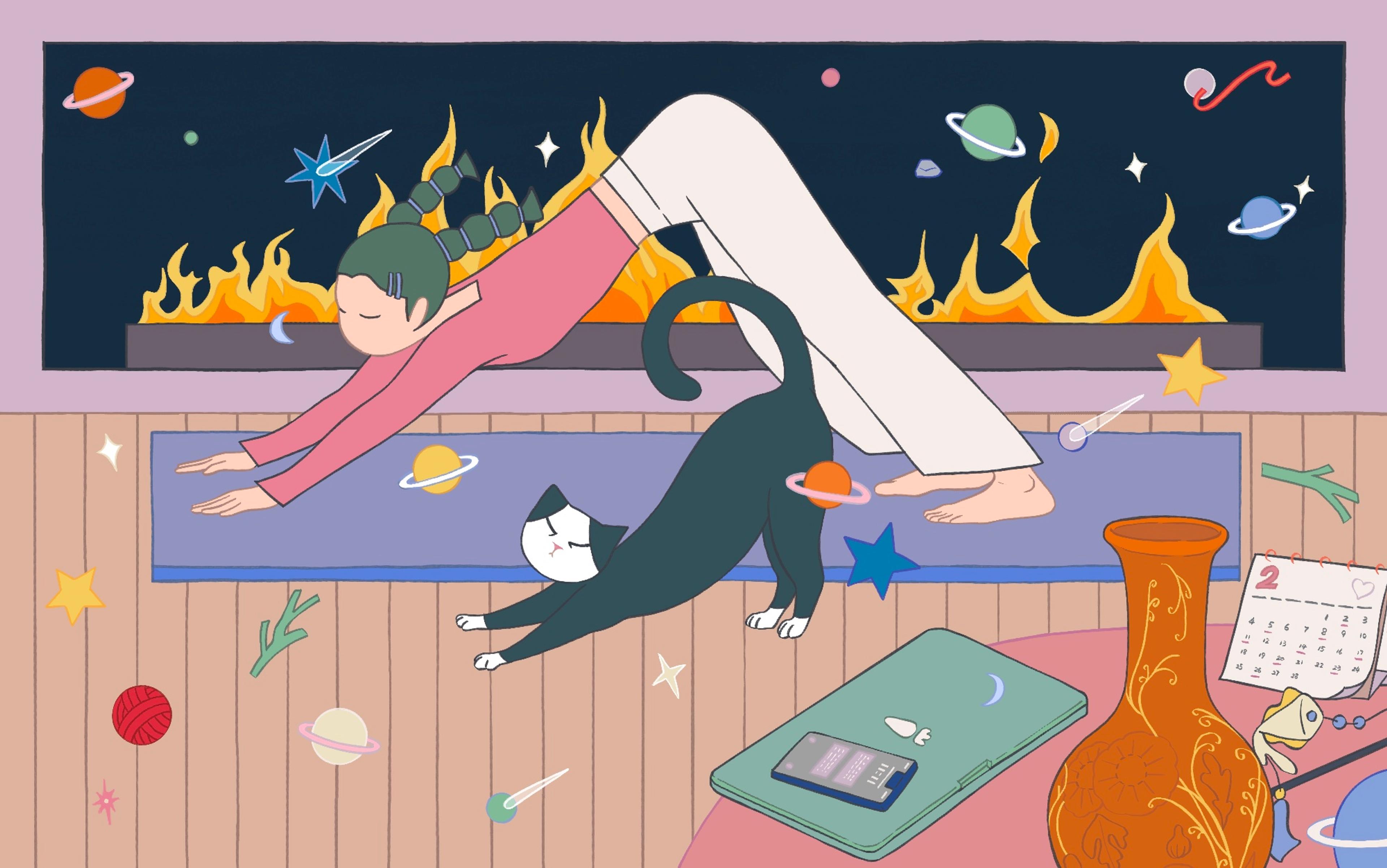
Consciousness and altered states
A reader’s guide to microdosing
How to use small doses of psychedelics to lift your mood, enhance your focus, and fire your creativity
Tunde Aideyan

The scourge of lookism
It is time to take seriously the painful consequences of appearance discrimination in the workplace
Andrew Mason

Economic history
The southern gap
In the American South, an oligarchy of planters enriched itself through slavery. Pervasive underdevelopment is their legacy
Keri Leigh Merritt

Thinkers and theories
Our tools shape our selves
For Bernard Stiegler, a visionary philosopher of our digital age, technics is the defining feature of human experience
Bryan Norton
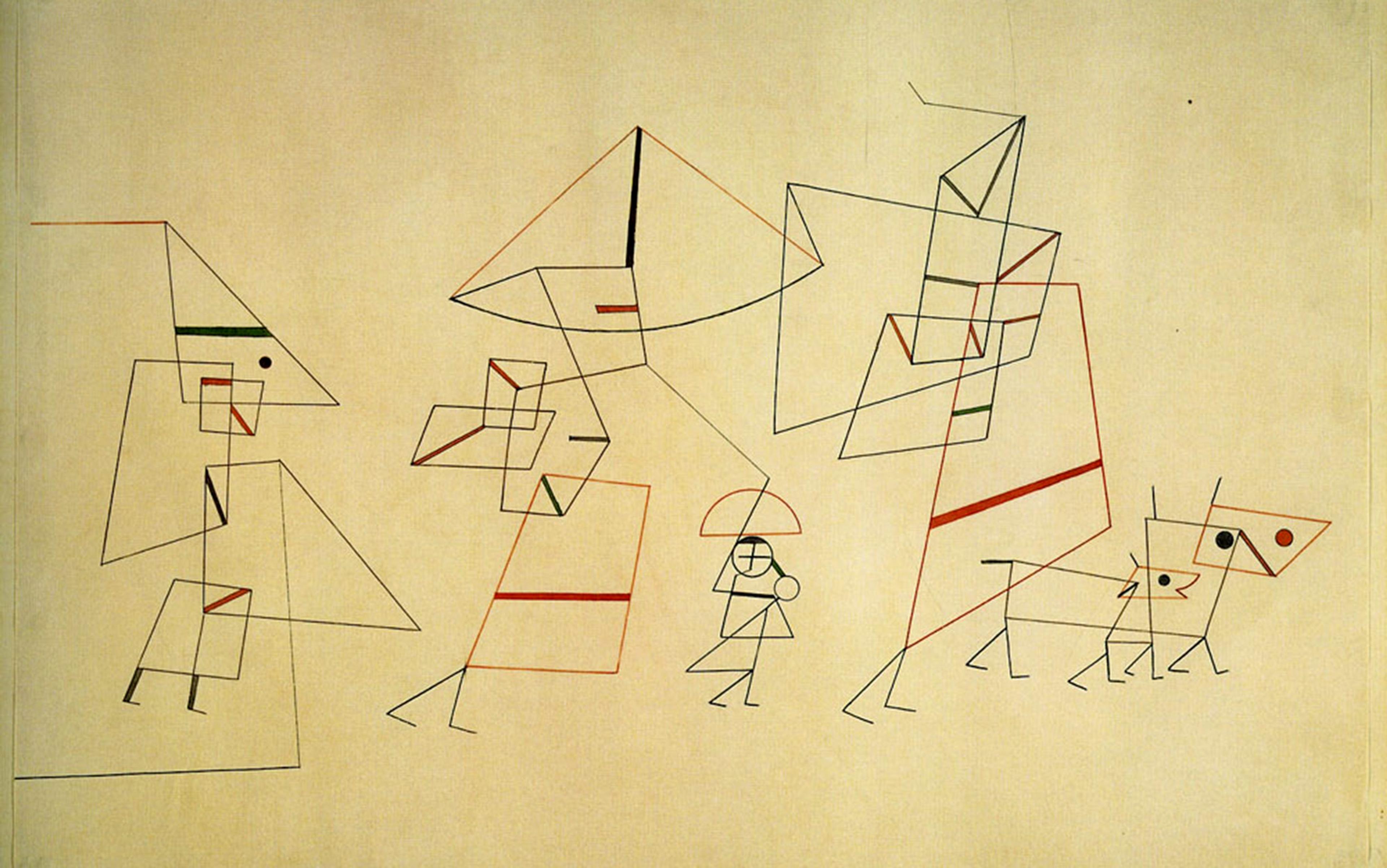
Family life
A patchwork family
After my marriage failed, I strove to create a new family – one made beautiful by the loving way it’s stitched together

The cell is not a factory
Scientific narratives project social hierarchies onto nature. That’s why we need better metaphors to describe cellular life
Charudatta Navare
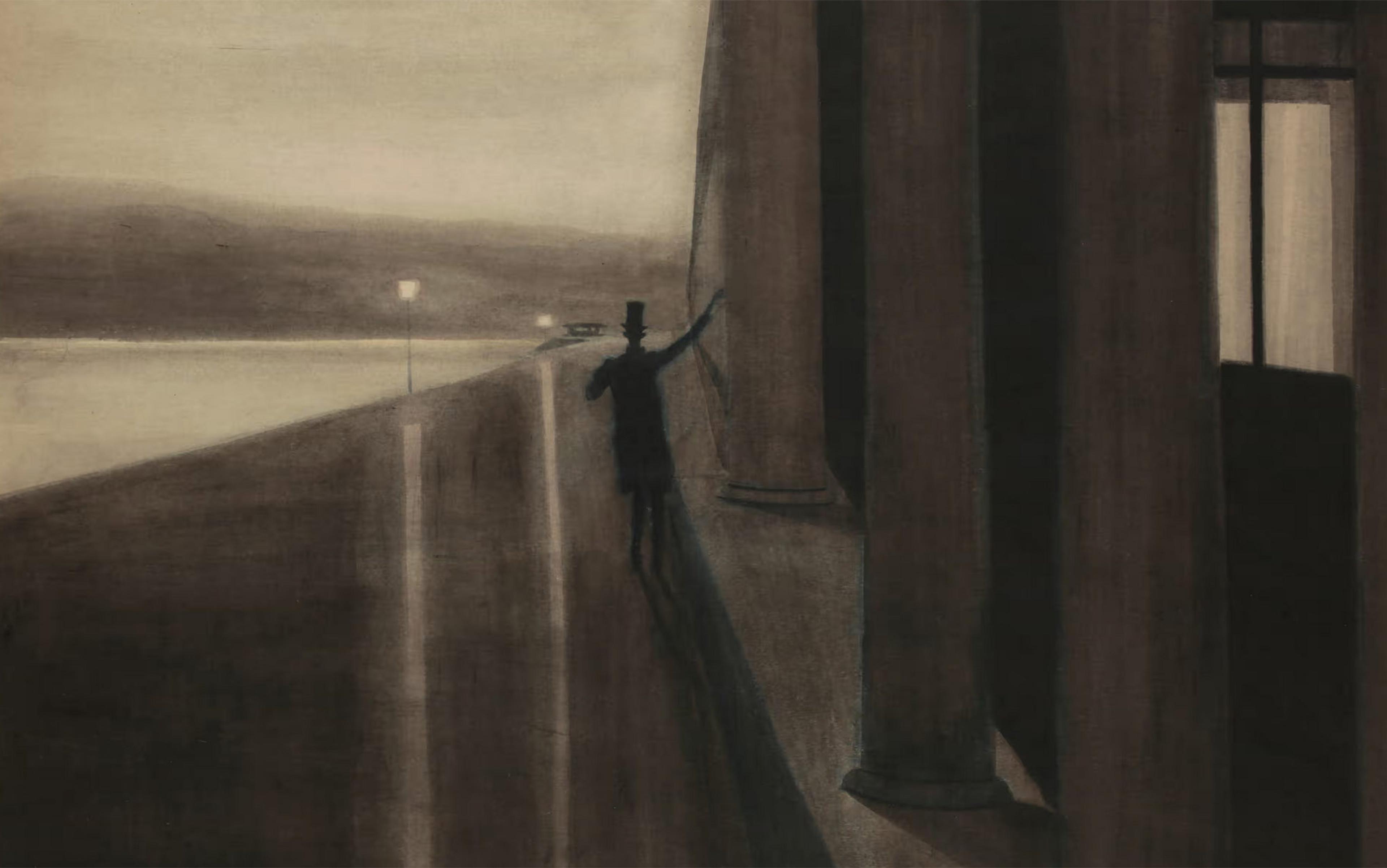
Stories and literature
Terrifying vistas of reality
H P Lovecraft, the master of cosmic horror stories, was a philosopher who believed in the total insignificance of humanity
Sam Woodward

The dangers of AI farming
AI could lead to new ways for people to abuse animals for financial gain. That’s why we need strong ethical guidelines
Virginie Simoneau-Gilbert & Jonathan Birch
- NONFICTION BOOKS
- BEST NONFICTION 2023
- BEST NONFICTION 2024
- Historical Biographies
- The Best Memoirs and Autobiographies
- Philosophical Biographies
- World War 2
- World History
- American History
- British History
- Chinese History
- Russian History
- Ancient History (up to 500)
- Medieval History (500-1400)
- Military History
- Art History
- Travel Books
- Ancient Philosophy
- Contemporary Philosophy
- Ethics & Moral Philosophy
- Great Philosophers
- Social & Political Philosophy
- Classical Studies
- New Science Books
- Maths & Statistics
- Popular Science
- Physics Books
- Climate Change Books
- How to Write
- English Grammar & Usage
- Books for Learning Languages
- Linguistics
- Political Ideologies
- Foreign Policy & International Relations
- American Politics
- British Politics
- Religious History Books
- Mental Health
- Neuroscience
- Child Psychology
- Film & Cinema
- Opera & Classical Music
- Behavioural Economics
- Development Economics
- Economic History
- Financial Crisis
- World Economies
- How to Invest
- Artificial Intelligence/AI Books
- Data Science Books
- Sex & Sexuality
- Death & Dying
- Food & Cooking
- Sports, Games & Hobbies
- FICTION BOOKS
- BEST NOVELS 2024
- BEST FICTION 2023
- New Literary Fiction
- World Literature
- Literary Criticism
- Literary Figures
- Classic English Literature
- American Literature
- Comics & Graphic Novels
- Fairy Tales & Mythology
- Historical Fiction
- Crime Novels
- Science Fiction
- Short Stories
- South Africa
- United States
- Arctic & Antarctica
- Afghanistan
- Myanmar (Formerly Burma)
- Netherlands
- Kids Recommend Books for Kids
- High School Teachers Recommendations
- Prizewinning Kids' Books
- Popular Series Books for Kids
- BEST BOOKS FOR KIDS (ALL AGES)
- Ages Baby-2
- Books for Teens and Young Adults
- THE BEST SCIENCE BOOKS FOR KIDS
- BEST KIDS' BOOKS OF 2023
- BEST BOOKS FOR TEENS OF 2023
- Best Audiobooks for Kids
- Environment
- Best Books for Teens of 2023
- Best Kids' Books of 2023
- Political Novels
- New History Books
- New Historical Fiction
- New Biography
- New Memoirs
- New World Literature
- New Economics Books
- New Climate Books
- New Math Books
- New Philosophy Books
- New Psychology Books
- New Physics Books
- THE BEST AUDIOBOOKS
- Actors Read Great Books
- Books Narrated by Their Authors
- Best Audiobook Thrillers
- Best History Audiobooks
- Nobel Literature Prize
- Booker Prize (fiction)
- Baillie Gifford Prize (nonfiction)
- Financial Times (nonfiction)
- Wolfson Prize (history)
- Royal Society (science)
- Pushkin House Prize (Russia)
- Walter Scott Prize (historical fiction)
- Arthur C Clarke Prize (sci fi)
- The Hugos (sci fi & fantasy)
- Audie Awards (audiobooks)
Make Your Own List
Nonfiction Books » Essays
The best essays: the 2021 pen/diamonstein-spielvogel award, recommended by adam gopnik.

WINNER OF the 2021 PEN/Diamonstein-Spielvogel Award for the Art of the Essay
Had I Known: Collected Essays by Barbara Ehrenreich
Every year, the judges of the PEN/Diamonstein-Spielvogel Award for the Art of the Essay search out the best book of essays written in the past year and draw attention to the author's entire body of work. Here, Adam Gopnik , writer, journalist and PEN essay prize judge, emphasizes the role of the essay in bearing witness and explains why the five collections that reached the 2021 shortlist are, in their different ways, so important.
Interview by Benedict King
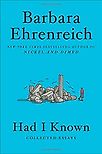
Unfinished Business: Notes of a Chronic Re-Reader by Vivian Gornick
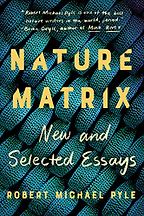
Nature Matrix: New and Selected Essays by Robert Michael Pyle

Terroir: Love, Out of Place by Natasha Sajé
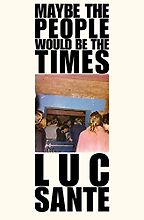
Maybe the People Would be the Times by Luc Sante

1 Had I Known: Collected Essays by Barbara Ehrenreich
2 unfinished business: notes of a chronic re-reader by vivian gornick, 3 nature matrix: new and selected essays by robert michael pyle, 4 terroir: love, out of place by natasha sajé, 5 maybe the people would be the times by luc sante.
W e’re talking about the books shortlisted for the 2021 PEN/Diamonstein-Spielvogel Award for the Art of the Essay . As an essayist yourself, or as a reader of essays, what are you looking for? What’s the key to a good essay ?
Let’s turn to the books that made the shortlist of the 2021 PEN Award for the Art of the Essay. The winning book was Had I Known: Collected Essays by Barbara Ehrenreich , whose books have been recommended a number of times on Five Books. Tell me more.
One of the criteria for this particular prize is that it should be not just for a single book, but for a body of work. One of the things we wanted to honour about Barbara Ehrenreich is that she has produced a remarkable body of work. Although it’s offered in a more specifically political register than some essayists, or that a great many past prize winners have practised, the quiddity of her work is that it remains rooted in personal experience, in the act of bearing witness. She has a passionate political point to make, certainly, a series of them, many seeming all the more relevant now than when she began writing. Nonetheless, her writing still always depends on the intimacy of first-hand knowledge, what people in post-incarceration work call ‘lived experience’ (a term with a distinguished philosophical history). Her book Nickel and Dimed is the classic example of that. She never writes from a distance about working-class life in America. She bears witness to the nature and real texture of working-class life in America.
“One point of giving awards…is to keep passing the small torches of literary tradition”
Next up of the books on the 2021 PEN essay prize shortlist is Unfinished Business: Notes of a Chronic Re-Reader by Vivian Gornick.
Vivian Gornick is a writer who’s been around for a very long time. Although longevity is not in itself a criterion for excellence—or for this prize, or in the writing life generally—persistence and perseverance are. Writers who keep coming back at us, again and again, with a consistent vision, are surely to be saluted. For her admirers, her appetite to re-read things already read is one of the most attractive parts of her oeuvre , if I can call it that; her appetite not just to read but to read deeply and personally. One of the things that people who love her work love about it is that her readings are never academic, or touched by scholarly hobbyhorsing. They’re readings that involve the fullness of her experience, then applied to literature. Although she reads as a critic, she reads as an essayist reads, rather than as a reviewer reads. And I think that was one of the things that was there to honour in her body of work, as well.
Is she a novelist or journalist, as well?
Let’s move on to the next book which made the 2021 PEN essay shortlist. This is Nature Matrix: New and Selected Essays by Robert Michael Pyle.
I have a special reason for liking this book in particular, and that is that it corresponds to one of the richest and oldest of American genres, now often overlooked, and that’s the naturalist essay. You can track it back to Henry David Thoreau , if not to Ralph Waldo Emerson , this American engagement with nature , the wilderness, not from a narrowly scientific point of view, nor from a purely ecological or environmental point of view—though those things are part of it—but again, from the point of view of lived experience, of personal testimony.
Let’s look at the next book on the shortlist of the 2021 PEN Awards, which is Terroir: Love, Out of Place by Natasha Sajé. Why did these essays appeal?
One of the things that was appealing about this book is that’s it very much about, in every sense, the issues of the day: the idea of place, of where we are, how we are located on any map as individuals by ethnic identity, class, gender—all of those things. But rather than being carried forward in a narrowly argumentative way, again, in the classic manner of the essay, Sajé’s work is ruminative. It walks around these issues from the point of view of someone who’s an expatriate, someone who’s an émigré, someone who’s a world citizen, but who’s also concerned with the idea of ‘terroir’, the one place in the world where we belong. And I think the dialogue in her work between a kind of cosmopolitanism that she has along with her self-critical examination of the problem of localism and where we sit on the world, was inspiring to us.
Get the weekly Five Books newsletter
Last of the books on the shortlist for the 2021 Pen essay award is Maybe the People Would Be the Times by Luc Sante.
Again, here’s a writer who’s had a distinguished generalised career, writing about lots of places and about lots of subjects. In the past, he’s made his special preoccupation what he calls ‘low life’, but I think more broadly can be called the marginalized or the repressed and abject. He’s also written acute introductions to the literature of ‘low life’, the works of Asbury and David Maurer, for instance.
But I think one of the things that was appealing about what he’s done is the sheer range of his enterprise. He writes about countless subjects. He can write about A-sides and B-sides of popular records—singles—then go on to write about Jacques Rivette’s cinema. He writes from a kind of private inspection of public experience. He has a lovely piece about tabloid headlines and their evolution. And I think that omnivorous range of enthusiasms and passions is a stirring reminder in a time of specialization and compartmentalization of the essayist’s freedom to roam. If Pyle is in the tradition of Thoreau, I suspect Luc Sante would be proud to be put in the tradition of Baudelaire—the flaneur who walks the streets, sees everything, broods on it all and writes about it well.
One point of giving awards, with all their built-in absurdity and inevitable injustice, is to keep alive, or at least to keep passing, the small torches of literary tradition. And just as much as we’re honoring the great tradition of the naturalist essay in the one case, I think we’re honoring the tradition of the Baudelairean flaneur in this one.
April 18, 2021
Five Books aims to keep its book recommendations and interviews up to date. If you are the interviewee and would like to update your choice of books (or even just what you say about them) please email us at [email protected]
Support Five Books
Five Books interviews are expensive to produce. If you've enjoyed this interview, please support us by donating a small amount .
©Brigitte Lacombe
Adam Gopnik
Adam Gopnik has been a staff writer at the New Yorker since 1986. His many books include A Thousand Small Sanities: The Moral Adventure of Liberalism . He is a three time winner of the National Magazine Award for Essays & Criticism, and in 2021 was made a chevalier of the Legion d'Honneur by the French Republic.
We ask experts to recommend the five best books in their subject and explain their selection in an interview.
This site has an archive of more than one thousand seven hundred interviews, or eight thousand book recommendations. We publish at least two new interviews per week.
Five Books participates in the Amazon Associate program and earns money from qualifying purchases.
© Five Books 2024
10 Essays To Read Again in 2023
A list of our staff’s favorite essays from the past year.

Hello, New Lines readers,
We hope you’re enjoying a much-needed holiday break. We have a lot in store for 2023, particularly the launch of our print edition. In the meantime, as has become tradition, we wanted to share with you a list of our staff’s favorite essays from the past year. We hope you’ll find something of interest in this eclectic collection of stories.
Wishing you a Happy New Year from the New Lines team!
The Day My Wartime Cat Went Missing, by Rasha Elass
Riada asimovic akyol, strategic initiatives editor.
Many of my close friends tell me that, despite my irrational fear of cats, I’d be a perfect “cat person,” once I dared to confront those fears. I’ve acknowledged the joy and glow in their eyes, when my friends speak of their pets. I’ve observed such bonds curiously and in a more mindful way in the last few years, especially after becoming a mother, responsible for someone else’s life.
The essay “The Day My Wartime Cat Went Missing” was published early in 2022, and was an instant classic. Our Editorial Director, Rasha Elass, writes masterfully about her adventures with adopted cats Pumpkin and Gremlin, whom she first met in Abu Dhabi. She beautifully depicts how they survived a tough war, and the different challenges they’ve been through in the Middle East and the United States. She shares her genuine love and nurturing care, as well as her dread at the possibility of losing them, whether in peacetime or war.
The essay is a gorgeous reminder of the bonds that matter. Check it out for yourself.
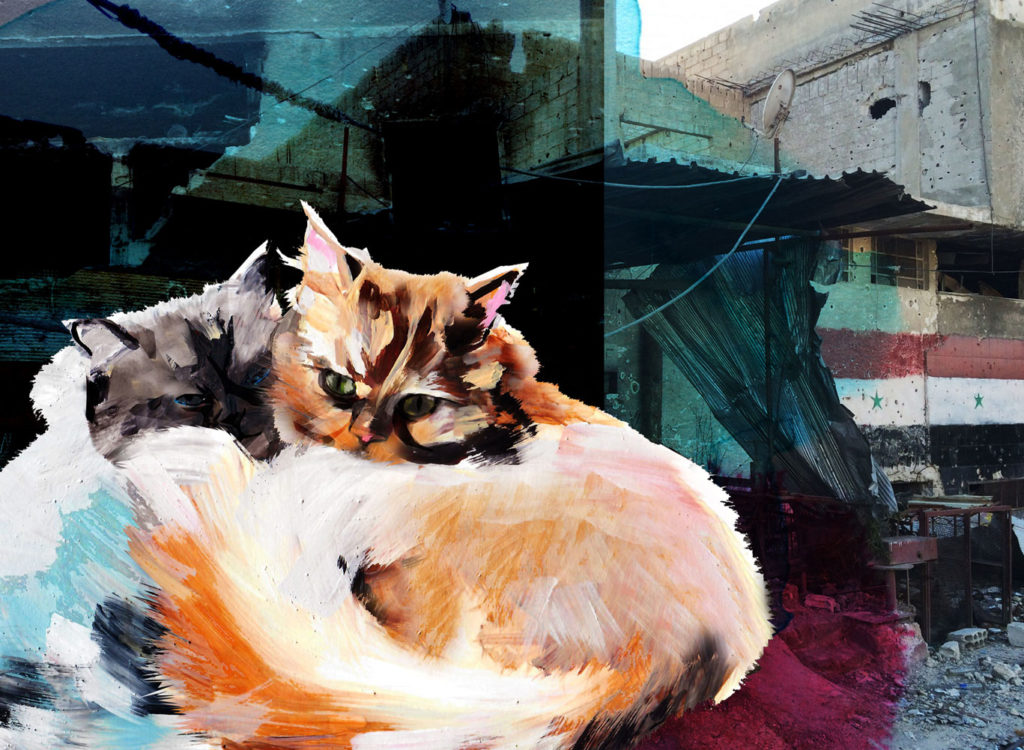
How I Survived a Syrian Gulag, by Jaber Baker
Rasha al aqeedi, middle east deputy editor.
The terms “dictatorship,” “fascism,” “authoritarianism” and “totalitarianism” are thrown around today to describe various ruling systems in the world to such an extent that they have lost their actual meaning. Inconveniences such as losing access to a social media platform are compared to the conditions that led to the Holocaust, while wearing a pandemic-imposed mask is akin to living in a gulag.
The Syrian author Jaber Baker takes us on a dark journey through his time in an actual gulag run by Bashar al-Assad’s Baath Party. For me personally, the essay is a masterclass in storytelling and struck more chords and triggered more memories of my childhood and adolescence in Saddam Hussein’s Iraq than I wish it had. The true experiences and traumas of dictatorship face the threat of being drowned out by the noises of victimhood culture. While no one has a monopoly on trauma, Syrians have the right to tell the stories of their torture and suffering. It is a reminder that not all injustices are created equal.
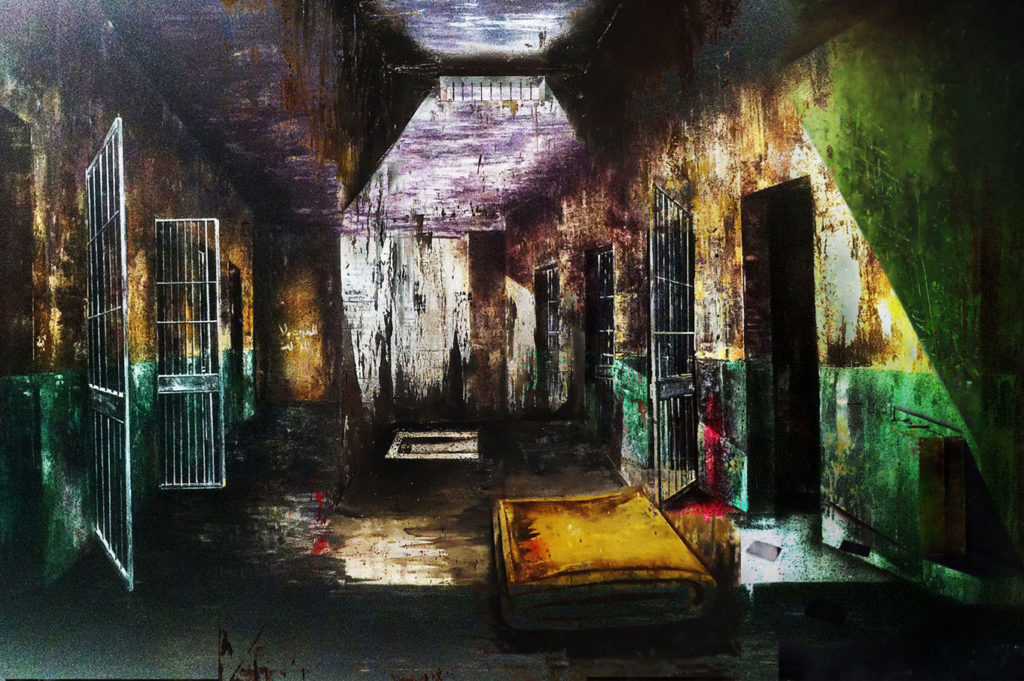
The Last of the Bougainvillea Years, by Zeina Hashem Beck
Erin clare brown, north africa editor.
When faced with an impending move to Paris from Dubai in search of more stability for her family, poet Zeina Hashem Beck is suddenly filled with the pangs of loss — not for the Emirates, where she’d lived since 2006, but for her home in Lebanon. She explores this abstract sense of displacement and longing in her gorgeously crafted essay, written in a pitch-perfect prose that carries the music of poetry through her attempts to sort her belongings, prepare her children, and reassure herself that the displacement is the right call. Through it all Hashem Beck mourns the impending loss of her bougainvillea vines, whose clouds of pink blossoms and wicked thorns come to symbolize in turns her beloved hometown, her Mediterranean identity and in ways, the author herself.
It’s a beautiful meditation on loss and longing, displacement and belonging that reminds us that when we are the right amount of thirsty, we blossom.
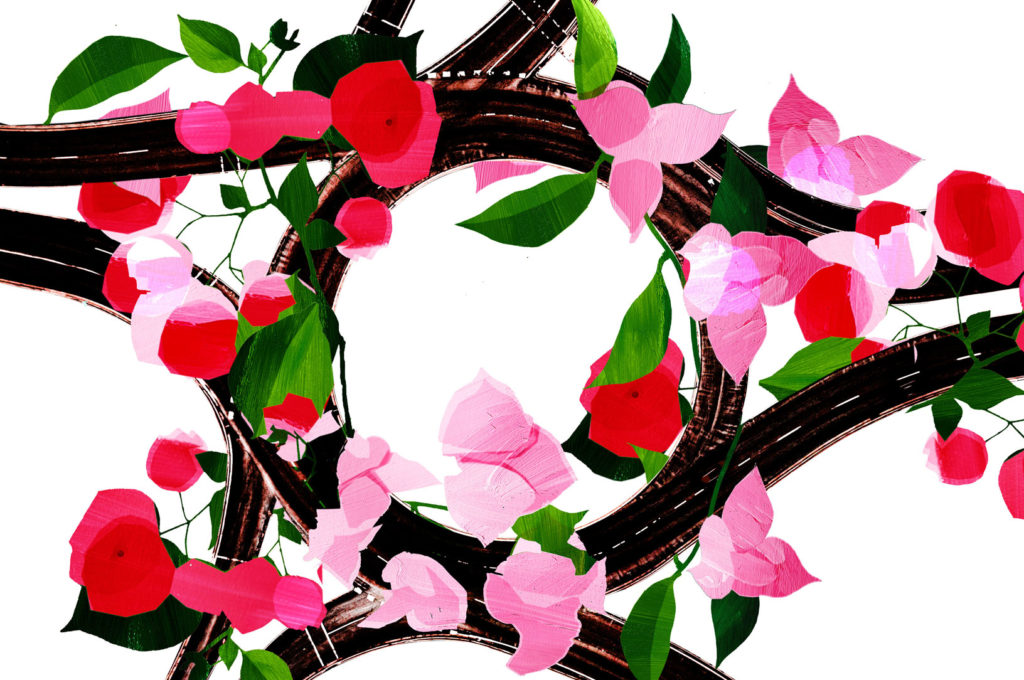
What Ukraine Means for Lithuanians Haunted by Soviet Past, by Inga Rudzinskaite-Colman
Amie ferris-rotman, global news editor.
When reading this essay, one feels that an entire generation of Eastern Europeans is speaking, in a single, defiant voice, suddenly with renewed urgency. The globe is so focused on Russia’s horrific assault on Ukraine, and the grim atrocities the Russian military commits practically every day, that we often forget, or perhaps do not realize, the impact the war has on Moscow’s previous victims. In this essay, the analyst Inga Rudzinskaite-Colman, who was born and raised in Vilnius, dives into complicated issues like collective trauma and self-identity. She tells us, in poignant detail, how she and her fellow countrymen and women strived for decades to disassociate themselves from Russia and their Soviet past. But belonging to the Western “club” has also meant uncomfortable compromises, like being “Russiasplained” to. Read this beautifully written essay to peer into the new realities facing the Baltics, Poland and other countries once in Russia’s orbit, who are now finding themselves united by survival.

Rushdie Is India’s Forgotten Child of Midnight, by Pratik Kanjilal
Surbhi gupta, south asia editor.
Earlier this year, when Salman Rushdie was attacked before his talk in western New York, his supposed safe haven, much of the discussion in the media and reports in the news cycle focused on the politics of that infamous fatwa by the Ayatollah Khomeini calling for the writer’s death and its repercussions on the Muslim world. Yet, despite the fact Rushdie has roots in India and the subcontinent has been a constant source of inspiration for his writing, I could find no essay that delved into this relationship and work with South Asia — before this one.
While many were focused on the backlash against Rushdie’s novel, “The Satanic Verses,” the South Asian connection in the story was being overlooked. The first protests against the book happened not in Iran but in Pakistan, and this prompted the Indian government to ban its import from the U.K. It was, indeed, in a review in an Indian magazine that the Ayatollah is said to have first learned of the book. That’s why I loved this essay by Pratik Kanjilal, a veteran journalist and books editor in India, who has followed Rushdie’s journey closely through the years and was the best person to write it. He packs a lot into this essay: He writes about Rushdie, critiques his work, discusses what his Booker Prize wins meant for English writing in India, his relationship with India and Pakistan, and the irony of the attack, coinciding as it did with the 75th Independence Day celebrations in India.
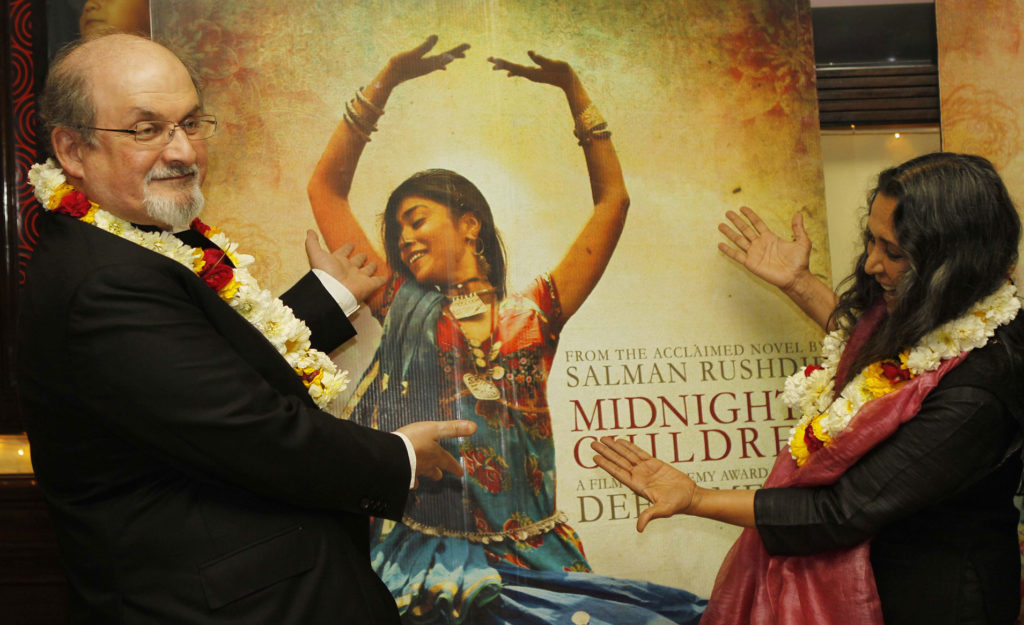
Faith and Vengeance: the Islamic State’s War in Afghanistan, by Fazelminallah Qazizai and Chris Sands
Tam hussein, associate editor.
This piece tells the story of the rise of the Islamic State of Khorasan Province (ISKP), and its fall and rebirth, told through the character of Abu Omar Khorasani, “the most feared and despised prisoner in Directorate 40.” It takes you on a journey from the Afghan Jihad in the 1980s all the way to the present. I love deep dives and investigations. This particular piece is very original and will no doubt populate the citations of many books on the topic for years to come. To produce an essay of such quality requires a supportive editorial team and journalists willing to follow the story all the way. For me, that is embodied in this investigation. When I read it, I can almost see the legwork and local knowledge put in by Fazelminallah Qazizai. I see the crisp writing style of Qazizai’s co-author Chris Sands, the beautiful artwork of Joanna Andreasson and the background work that the editorial team puts in months before publication. And so it’s not just an enjoyable and interesting read, it’s what our managing editor Ola Salem says the best essays are — a work of art.
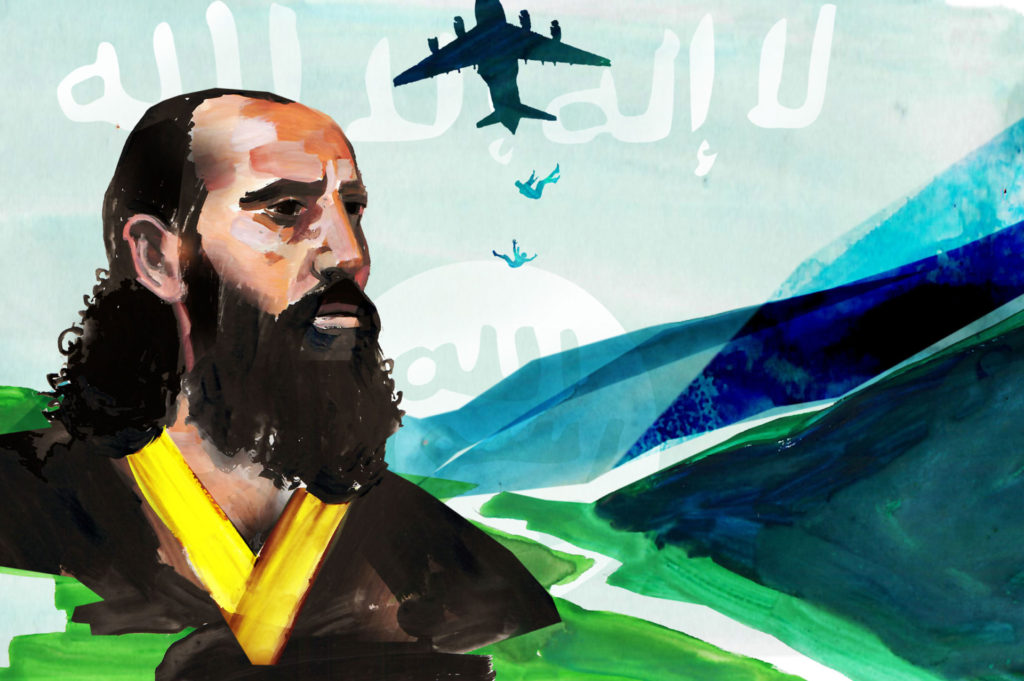
When Uganda Expelled Its Asian Population in 1972, Britain Tried to Exclude Them, by Saima Nasar
Kwangu liwewe, africa editor.
When I read this essay, it reminded me of the writer Chimamanda Ngozi Adichie’s The Danger of a Single Story. For five decades, the narrative about the expulsion of Uganda’s Asians has been that they went to Britain, were welcomed there and lived as refugees, then successfully assimilated into society and have contributed to all spheres of British life.
This essay puts the spotlight on how the narrative changed from unwanted Asian immigrants to one of a humanitarian response, when the plight of Asians became international news and Britain feared a backlash. The writer Saima Nasar lifts the lid on this narrative and tells the story of how, in actual fact, the Asians were British passport holders and were initially not welcome in Britain.
Nasar writes, “While Ugandan Asians have no doubt shaped Britain’s economic, political and socio-cultural landscapes, it is important to avoid celebratory narratives that overlook histories of struggle and discrimination.”
It is an important essay that challenges society to re-examine historical narratives.
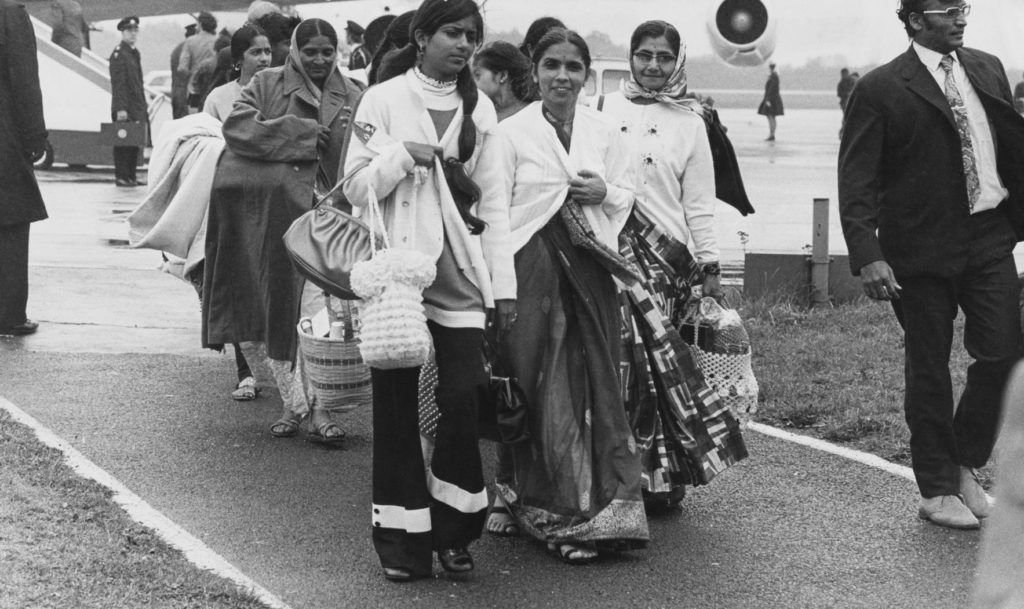
A Film Critic Reflects on the Artistic Journeys and Vision of the Late French Director Jean-Luc Godard, by Jonathan Rosenbaum
Danny postel, politics editor.
When I saw the news on Sept. 13 that the legendary filmmaker Jean-Luc Godard had died, I immediately called Jonathan Rosenbaum, the longtime film critic for my local alt-weekly newspaper, the Chicago Reader, and the author of multiple books on world cinema. Rosenbaum had written extensively about Godard’s films over the years and had interviewed the grand poobah of French cinema’s New Wave movement on more than one occasion. I was thrilled that Rosenbaum agreed to write for us, despite being unfamiliar with New Lines (he later informed me that Sight and Sound, the magazine of the British Film Institute, also asked him to write something on Godard but we got to him first).
In the essay, he discusses several of Godard’s films — “Breathless” (1960), “Alphaville” (1965), “Tout Va Bien” (1972), “Every Man for Himself” (1980), “Passion” (1982), “Nouvelle Vague” (1990) and “Histoire(s) du Cinéma,” an eight-part experimental video series made between 1988 and 1998 — but it’s far from a survey of the late director’s filmography. Instead, it’s a deeply personal meditation on his poetic vision and colossal global influence, and on the relationship between art and commercial success and failure. “Marketplace value has little or nothing to do with the love of art,” Rosenbaum writes, and “there’s no way of gauging the latter via the former, especially insofar as the intensity of the love and the qualities of the audience experiencing and expressing it aren’t even remotely quantifiable.” Godard once said to Rosenbaum: “I like to think of myself as an airplane, not an airport.” Reflecting on that quip, Rosenbaum writes that “vehicles that take us places, and the destinations of those who make them don’t have to be the same as the destinations of those who climb into those vehicles.”
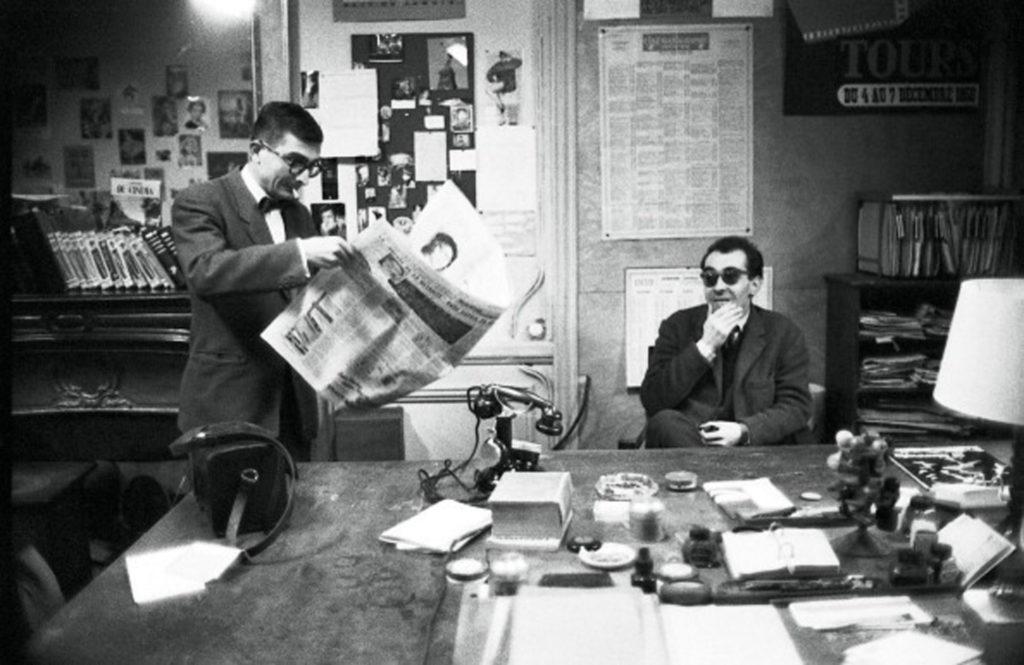
Between Two Rivers, Between Two Myths, by Sophus Helle
Lydia wilson, culture editor.
I wanted to choose a history essay for two reasons: It’s one of the genres that we do particularly well and, second, this type of long-form history is not given much space in other outlets. Our history essays are always deep-dive explorations of stories from the past from experts on the subject, showing us something new about the world, whether a new perspective on a familiar topic or a previously hidden gem.
“Between Two Rivers,” by the Mesopotamian scholar Sophus Helle, exemplifies what we’re trying to do. It is based on deep expertise, exploring the identities of societies going back millennia in the territory now called Iraq. Helle looks at the labels these cultures gave themselves and were given by later invaders or historians. But it does not only tell the story of the historical material. Crucially, it explains why these facts, controversies and debates about old identities are relevant today, and the obfuscation of the past realities on the ground in Iraq does not serve its present inhabitants. History matters, and this essay brings that home.
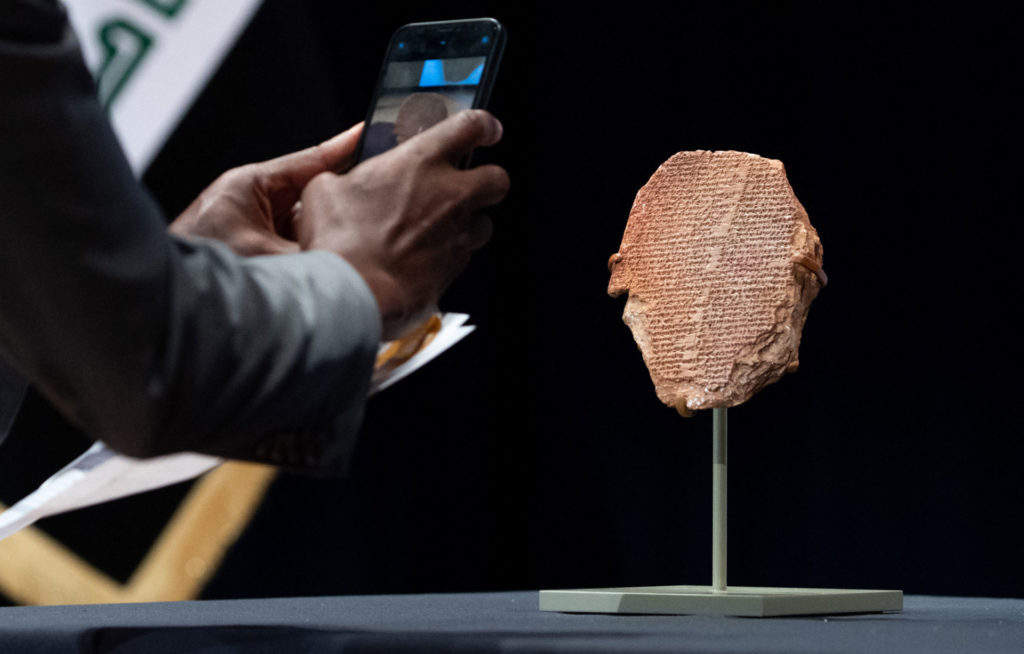
An Exile Returns to Find Syria Changed Forever, by Nizar Kinaan
Faisal al yafai, international editor.
It’s been a year of war — as too many of the past few years have been — this time dominated in Europe by Russia’s invasion of Ukraine. At the magazine, we’ve certainly published a lot about the Ukraine war, but we’ve also kept a close eye on other conflicts.
This essay by Nizar Kinaan, a pseudonym for obvious reasons, is one of those, revisiting the still-simmering Syrian conflict. The author returned to the coastal city of Latakia after years away and found a city, and country, drastically changed by the war. We called the essay “No Country for Young Men” because of the profound changes in gender roles wrought by the war.
“‘Where are the young men?’ I asked my friends in the cafe bar we were drinking in. ‘They are dead, in the army or they left like I should have done.’”
“The taboos against women working in certain specific jobs have definitely been broken,” wrote Kinaan, quoting a Syrian woman who said, “I am not saying all taboos have been completely shattered … but things have definitely shifted. Now women can work in most jobs, stay out late, and be a little bit more independent.”
Many will applaud that change, but the reasons that brought it about have destabilized the entire society. This is what makes Kinaan’s encounter with Latakia so interesting; he doesn’t judge what has happened by any moral standard except that of Syria itself. He doesn’t applaud changes in isolation without understanding what it took to make them change.

Sign up to our mailing list to receive our stories in your inbox .
How Defining ‘Refugees’ Shapes the Lives of Millions
Gaza in a million pieces, a portal to another world: translating early arabic poetry — with james montgomery, looking for the roots of today’s germany, ‘four daughters’ breaks the mold to give an honest picture of a mother’s loss, documenting statelessness in lebanon, sign up to our newsletter.
Will be used in accordance with our Privacy Policy
Our Most-Read Prose of 2022
Against the stream.

A Glass Essay
The abortion stories we tell, olga tokarczuk.
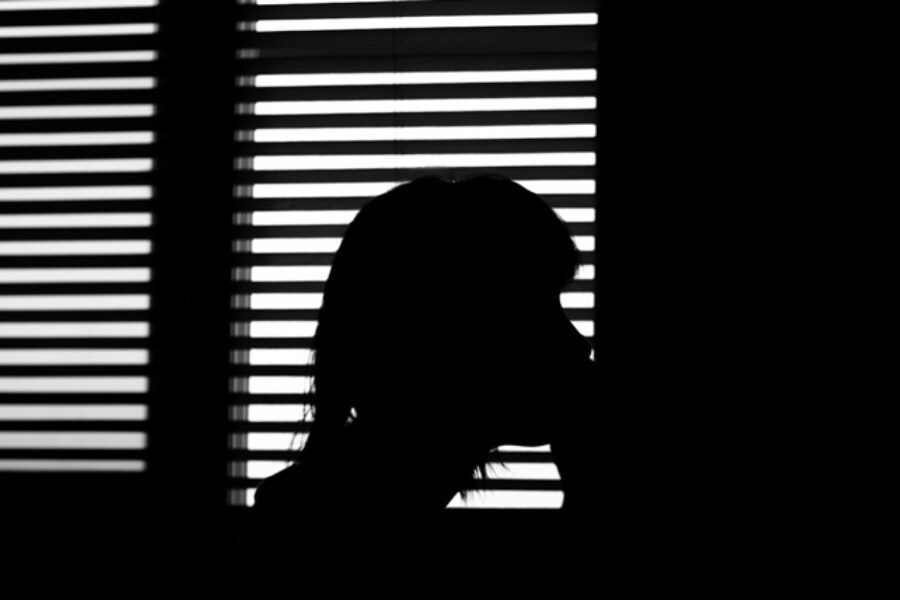
Theater of Shame

The Front House
I had always imagined that my mother’s death would cause some cathartic disintegration, or at least leave me profoundly altered.
Lili Hamlyn Camera Mortis

Who Owns Your Story?

Three Queer Writers on Craft and Cruising

Camera Mortis

The Yale Review Festival 2024
Join us April 16–19 for readings, panels, and workshops with Hernan Diaz, Katie Kitamura, and many others.

click here to read it now
Read this week's magazine

The Top 10 Essays Since 1950
Robert Atwan, the founder of The Best American Essays series, picks the 10 best essays of the postwar period. Links to the essays are provided when available.
Fortunately, when I worked with Joyce Carol Oates on The Best American Essays of the Century (that’s the last century, by the way), we weren’t restricted to ten selections. So to make my list of the top ten essays since 1950 less impossible, I decided to exclude all the great examples of New Journalism--Tom Wolfe, Gay Talese, Michael Herr, and many others can be reserved for another list. I also decided to include only American writers, so such outstanding English-language essayists as Chris Arthur and Tim Robinson are missing, though they have appeared in The Best American Essays series. And I selected essays , not essayists . A list of the top ten essayists since 1950 would feature some different writers.
To my mind, the best essays are deeply personal (that doesn’t necessarily mean autobiographical) and deeply engaged with issues and ideas. And the best essays show that the name of the genre is also a verb, so they demonstrate a mind in process--reflecting, trying-out, essaying.
James Baldwin, "Notes of a Native Son" (originally appeared in Harper’s , 1955)
“I had never thought of myself as an essayist,” wrote James Baldwin, who was finishing his novel Giovanni’s Room while he worked on what would become one of the great American essays. Against a violent historical background, Baldwin recalls his deeply troubled relationship with his father and explores his growing awareness of himself as a black American. Some today may question the relevance of the essay in our brave new “post-racial” world, though Baldwin considered the essay still relevant in 1984 and, had he lived to see it, the election of Barak Obama may not have changed his mind. However you view the racial politics, the prose is undeniably hypnotic, beautifully modulated and yet full of urgency. Langston Hughes nailed it when he described Baldwin’s “illuminating intensity.” The essay was collected in Notes of a Native Son courageously (at the time) published by Beacon Press in 1955.
Norman Mailer, "The White Negro" (originally appeared in Dissent , 1957)
An essay that packed an enormous wallop at the time may make some of us cringe today with its hyperbolic dialectics and hyperventilated metaphysics. But Mailer’s attempt to define the “hipster”–in what reads in part like a prose version of Ginsberg’s “Howl”–is suddenly relevant again, as new essays keep appearing with a similar definitional purpose, though no one would mistake Mailer’s hipster (“a philosophical psychopath”) for the ones we now find in Mailer’s old Brooklyn neighborhoods. Odd, how terms can bounce back into life with an entirely different set of connotations. What might Mailer call the new hipsters? Squares?
Read the essay here .
Susan Sontag, "Notes on 'Camp'" (originally appeared in Partisan Review , 1964)
Like Mailer’s “White Negro,” Sontag’s groundbreaking essay was an ambitious attempt to define a modern sensibility, in this case “camp,” a word that was then almost exclusively associated with the gay world. I was familiar with it as an undergraduate, hearing it used often by a set of friends, department store window decorators in Manhattan. Before I heard Sontag—thirty-one, glamorous, dressed entirely in black-- read the essay on publication at a Partisan Review gathering, I had simply interpreted “campy” as an exaggerated style or over-the-top behavior. But after Sontag unpacked the concept, with the help of Oscar Wilde, I began to see the cultural world in a different light. “The whole point of camp,” she writes, “is to dethrone the serious.” Her essay, collected in Against Interpretation (1966), is not in itself an example of camp.
John McPhee, "The Search for Marvin Gardens" (originally appeared in The New Yorker , 1972)
“Go. I roll the dice—a six and a two. Through the air I move my token, the flatiron, to Vermont Avenue, where dog packs range.” And so we move, in this brilliantly conceived essay, from a series of Monopoly games to a decaying Atlantic City, the once renowned resort town that inspired America’s most popular board game. As the games progress and as properties are rapidly snapped up, McPhee juxtaposes the well-known sites on the board—Atlantic Avenue, Park Place—with actual visits to their crumbling locations. He goes to jail, not just in the game but in fact, portraying what life has now become in a city that in better days was a Boardwalk Empire. At essay’s end, he finds the elusive Marvin Gardens. The essay was collected in Pieces of the Frame (1975).
Read the essay here (subscription required).
Joan Didion, "The White Album" (originally appeared in New West , 1979)
Huey Newton, Eldridge Cleaver, and the Black Panthers, a recording session with Jim Morrison and the Doors, the San Francisco State riots, the Manson murders—all of these, and much more, figure prominently in Didion’s brilliant mosaic distillation (or phantasmagoric album) of California life in the late 1960s. Yet despite a cast of characters larger than most Hollywood epics, “The White Album” is a highly personal essay, right down to Didion’s report of her psychiatric tests as an outpatient in a Santa Monica hospital in the summer of 1968. “We tell ourselves stories in order to live,” the essay famously begins, and as it progresses nervously through cuts and flashes of reportage, with transcripts, interviews, and testimonies, we realize that all of our stories are questionable, “the imposition of a narrative line upon disparate images.” Portions of the essay appeared in installments in 1968-69 but it wasn’t until 1979 that Didion published the complete essay in New West magazine; it then became the lead essay of her book, The White Album (1979).
Annie Dillard, "Total Eclipse" (originally appeared in Antaeus , 1982)
In her introduction to The Best American Essays 1988 , Annie Dillard claims that “The essay can do everything a poem can do, and everything a short story can do—everything but fake it.” Her essay “Total Eclipse” easily makes her case for the imaginative power of a genre that is still undervalued as a branch of imaginative literature. “Total Eclipse” has it all—the climactic intensity of short fiction, the interwoven imagery of poetry, and the meditative dynamics of the personal essay: “This was the universe about which we have read so much and never before felt: the universe as a clockwork of loose spheres flung at stupefying, unauthorized speeds.” The essay, which first appeared in Antaeus in 1982 was collected in Teaching a Stone to Talk (1982), a slim volume that ranks among the best essay collections of the past fifty years.
Phillip Lopate, "Against Joie de Vivre" (originally appeared in Ploughshares , 1986)
This is an essay that made me glad I’d started The Best American Essays the year before. I’d been looking for essays that grew out of a vibrant Montaignean spirit—personal essays that were witty, conversational, reflective, confessional, and yet always about something worth discussing. And here was exactly what I’d been looking for. I might have found such writing several decades earlier but in the 80s it was relatively rare; Lopate had found a creative way to insert the old familiar essay into the contemporary world: “Over the years,” Lopate begins, “I have developed a distaste for the spectacle of joie de vivre , the knack of knowing how to live.” He goes on to dissect in comic yet astute detail the rituals of the modern dinner party. The essay was selected by Gay Talese for The Best American Essays 1987 and collected in Against Joie de Vivre in 1989 .
Edward Hoagland, "Heaven and Nature" (originally appeared in Harper’s, 1988)
“The best essayist of my generation,” is how John Updike described Edward Hoagland, who must be one of the most prolific essayists of our time as well. “Essays,” Hoagland wrote, “are how we speak to one another in print—caroming thoughts not merely in order to convey a certain packet of information, but with a special edge or bounce of personal character in a kind of public letter.” I could easily have selected many other Hoagland essays for this list (such as “The Courage of Turtles”), but I’m especially fond of “Heaven and Nature,” which shows Hoagland at his best, balancing the public and private, the well-crafted general observation with the clinching vivid example. The essay, selected by Geoffrey Wolff for The Best American Essays 1989 and collected in Heart’s Desire (1988), is an unforgettable meditation not so much on suicide as on how we remarkably manage to stay alive.
Jo Ann Beard, "The Fourth State of Matter" (originally appeared in The New Yorker , 1996)
A question for nonfiction writing students: When writing a true story based on actual events, how does the narrator create dramatic tension when most readers can be expected to know what happens in the end? To see how skillfully this can be done turn to Jo Ann Beard’s astonishing personal story about a graduate student’s murderous rampage on the University of Iowa campus in 1991. “Plasma is the fourth state of matter,” writes Beard, who worked in the U of I’s physics department at the time of the incident, “You’ve got your solid, your liquid, your gas, and there’s your plasma. In outer space there’s the plasmasphere and the plasmapause.” Besides plasma, in this emotion-packed essay you will find entangled in all the tension a lovable, dying collie, invasive squirrels, an estranged husband, the seriously disturbed gunman, and his victims, one of them among the author’s dearest friends. Selected by Ian Frazier for The Best American Essays 1997 , the essay was collected in Beard’s award-winning volume, The Boys of My Youth (1998).
David Foster Wallace, "Consider the Lobster" (originally appeared in Gourmet , 2004)
They may at first look like magazine articles—those factually-driven, expansive pieces on the Illinois State Fair, a luxury cruise ship, the adult video awards, or John McCain’s 2000 presidential campaign—but once you uncover the disguise and get inside them you are in the midst of essayistic genius. One of David Foster Wallace’s shortest and most essayistic is his “coverage” of the annual Maine Lobster Festival, “Consider the Lobster.” The Festival becomes much more than an occasion to observe “the World’s Largest Lobster Cooker” in action as Wallace poses an uncomfortable question to readers of the upscale food magazine: “Is it all right to boil a sentient creature alive just for our gustatory pleasure?” Don’t gloss over the footnotes. Susan Orlean selected the essay for The Best American Essays 2004 and Wallace collected it in Consider the Lobster and Other Essays (2005).
Read the essay here . (Note: the electronic version from Gourmet magazine’s archives differs from the essay that appears in The Best American Essays and in his book, Consider the Lobster. )
I wish I could include twenty more essays but these ten in themselves comprise a wonderful and wide-ranging mini-anthology, one that showcases some of the most outstanding literary voices of our time. Readers who’d like to see more of the best essays since 1950 should take a look at The Best American Essays of the Century (2000).

- You are a subscriber but you have not yet set up your account for premium online access. Contact customer service (see details below) to add your preferred email address and password to your account.
- You forgot your password and you need to retrieve it. Click here to retrieve reset your password.
- Your company has a site license, use our easy login. Enter your work email address in the Site License Portal.
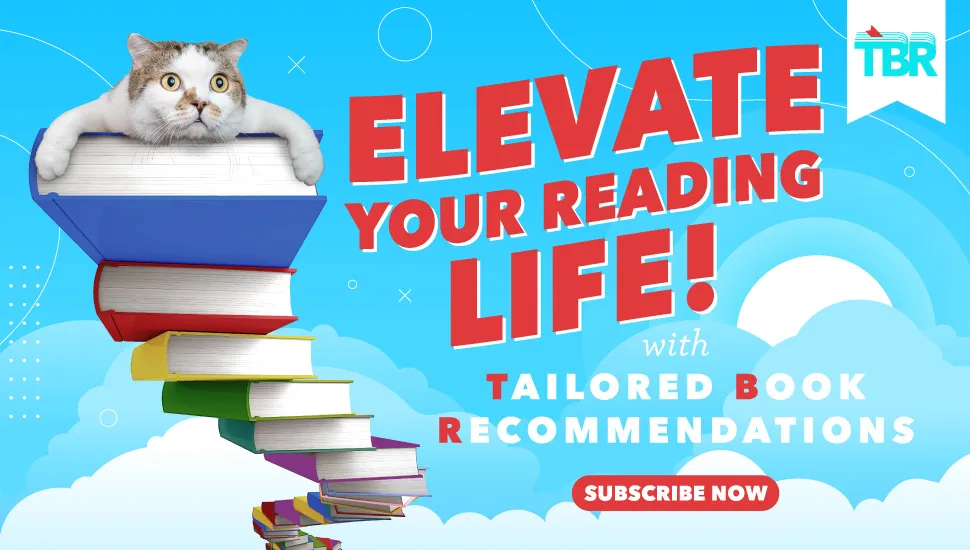
50 Must-Read Contemporary Essay Collections
Liberty Hardy
Liberty Hardy is an unrepentant velocireader, writer, bitey mad lady, and tattoo canvas. Turn-ons include books, books and books. Her favorite exclamation is “Holy cats!” Liberty reads more than should be legal, sleeps very little, frequently writes on her belly with Sharpie markers, and when she dies, she’s leaving her body to library science. Until then, she lives with her three cats, Millay, Farrokh, and Zevon, in Maine. She is also right behind you. Just kidding! She’s too busy reading. Twitter: @MissLiberty
View All posts by Liberty Hardy
I feel like essay collections don’t get enough credit. They’re so wonderful! They’re like short story collections, but TRUE. It’s like going to a truth buffet. You can get information about sooooo many topics, sometimes in one single book! To prove that there are a zillion amazing essay collections out there, I compiled 50 great contemporary essay collections, just from the last 18 months alone. Ranging in topics from food, nature, politics, sex, celebrity, and more, there is something here for everyone!
I’ve included a brief description from the publisher with each title. Tell us in the comments about which of these you’ve read or other contemporary essay collections that you love. There are a LOT of them. Yay, books!
Must-Read Contemporary Essay Collections
They can’t kill us until they kill us by hanif abdurraqib.
“In an age of confusion, fear, and loss, Hanif Willis-Abdurraqib’s is a voice that matters. Whether he’s attending a Bruce Springsteen concert the day after visiting Michael Brown’s grave, or discussing public displays of affection at a Carly Rae Jepsen show, he writes with a poignancy and magnetism that resonates profoundly.”
Would Everybody Please Stop?: Reflections on Life and Other Bad Ideas by Jenny Allen
“Jenny Allen’s musings range fluidly from the personal to the philosophical. She writes with the familiarity of someone telling a dinner party anecdote, forgoing decorum for candor and comedy. To read Would Everybody Please Stop? is to experience life with imaginative and incisive humor.”
Longthroat Memoirs: Soups, Sex and Nigerian Taste Buds by Yemisi Aribisala
“A sumptuous menu of essays about Nigerian cuisine, lovingly presented by the nation’s top epicurean writer. As well as a mouth-watering appraisal of Nigerian food, Longthroat Memoirs is a series of love letters to the Nigerian palate. From the cultural history of soup, to fish as aphrodisiac and the sensual allure of snails, Longthroat Memoirs explores the complexities, the meticulousness, and the tactile joy of Nigerian gastronomy.”
Beyond Measure: Essays by Rachel Z. Arndt
“ Beyond Measure is a fascinating exploration of the rituals, routines, metrics and expectations through which we attempt to quantify and ascribe value to our lives. With mordant humor and penetrating intellect, Arndt casts her gaze beyond event-driven narratives to the machinery underlying them: judo competitions measured in weigh-ins and wait times; the significance of the elliptical’s stationary churn; the rote scripts of dating apps; the stupefying sameness of the daily commute.”
Magic Hours by Tom Bissell
“Award-winning essayist Tom Bissell explores the highs and lows of the creative process. He takes us from the set of The Big Bang Theory to the first novel of Ernest Hemingway to the final work of David Foster Wallace; from the films of Werner Herzog to the film of Tommy Wiseau to the editorial meeting in which Paula Fox’s work was relaunched into the world. Originally published in magazines such as The Believer , The New Yorker , and Harper’s , these essays represent ten years of Bissell’s best writing on every aspect of creation—be it Iraq War documentaries or video-game character voices—and will provoke as much thought as they do laughter.”
Dead Girls: Essays on Surviving an American Obsession by Alice Bolin
“In this poignant collection, Alice Bolin examines iconic American works from the essays of Joan Didion and James Baldwin to Twin Peaks , Britney Spears, and Serial , illuminating the widespread obsession with women who are abused, killed, and disenfranchised, and whose bodies (dead and alive) are used as props to bolster men’s stories. Smart and accessible, thoughtful and heartfelt, Bolin investigates the implications of our cultural fixations, and her own role as a consumer and creator.”
Betwixt-and-Between: Essays on the Writing Life by Jenny Boully
“Jenny Boully’s essays are ripe with romance and sensual pleasures, drawing connections between the digression, reflection, imagination, and experience that characterizes falling in love as well as the life of a writer. Literary theory, philosophy, and linguistics rub up against memory, dreamscapes, and fancy, making the practice of writing a metaphor for the illusory nature of experience. Betwixt and Between is, in many ways, simply a book about how to live.”
Wedding Toasts I’ll Never Give by Ada Calhoun
“In Wedding Toasts I’ll Never Give , Ada Calhoun presents an unflinching but also loving portrait of her own marriage, opening a long-overdue conversation about the institution as it truly is: not the happy ending of a love story or a relic doomed by high divorce rates, but the beginning of a challenging new chapter of which ‘the first twenty years are the hardest.'”
How to Write an Autobiographical Novel: Essays by Alexander Chee
“ How to Write an Autobiographical Novel is the author’s manifesto on the entangling of life, literature, and politics, and how the lessons learned from a life spent reading and writing fiction have changed him. In these essays, he grows from student to teacher, reader to writer, and reckons with his identities as a son, a gay man, a Korean American, an artist, an activist, a lover, and a friend. He examines some of the most formative experiences of his life and the nation’s history, including his father’s death, the AIDS crisis, 9/11, the jobs that supported his writing—Tarot-reading, bookselling, cater-waiting for William F. Buckley—the writing of his first novel, Edinburgh , and the election of Donald Trump.”
Too Much and Not the Mood: Essays by Durga Chew-Bose
“ Too Much and Not the Mood is a beautiful and surprising exploration of what it means to be a first-generation, creative young woman working today. On April 11, 1931, Virginia Woolf ended her entry in A Writer’s Diary with the words ‘too much and not the mood’ to describe her frustration with placating her readers, what she described as the ‘cramming in and the cutting out.’ She wondered if she had anything at all that was truly worth saying. The attitude of that sentiment inspired Durga Chew-Bose to gather own writing in this lyrical collection of poetic essays that examine personhood and artistic growth. Drawing inspiration from a diverse group of incisive and inquiring female authors, Chew-Bose captures the inner restlessness that keeps her always on the brink of creative expression.”
We Were Eight Years in Power: An American Tragedy by Ta-Nehisi Coates
“‘We were eight years in power’ was the lament of Reconstruction-era black politicians as the American experiment in multiracial democracy ended with the return of white supremacist rule in the South. In this sweeping collection of new and selected essays, Ta-Nehisi Coates explores the tragic echoes of that history in our own time: the unprecedented election of a black president followed by a vicious backlash that fueled the election of the man Coates argues is America’s ‘first white president.'”
Look Alive Out There: Essays by Sloane Crosley
“In Look Alive Out There, whether it’s scaling active volcanoes, crashing shivas, playing herself on Gossip Girl, befriending swingers, or squinting down the barrel of the fertility gun, Crosley continues to rise to the occasion with unmatchable nerve and electric one-liners. And as her subjects become more serious, her essays deliver not just laughs but lasting emotional heft and insight. Crosley has taken up the gauntlets thrown by her predecessors—Dorothy Parker, Nora Ephron, David Sedaris—and crafted something rare, affecting, and true.”
Fl â neuse: Women Walk the City in Paris, New York, Tokyo, Venice, and London by Lauren Elkin
“Part cultural meander, part memoir, Flâneuse takes us on a distinctly cosmopolitan jaunt that begins in New York, where Elkin grew up, and transports us to Paris via Venice, Tokyo, and London, all cities in which she’s lived. We are shown the paths beaten by such flâneuses as the cross-dressing nineteenth-century novelist George Sand, the Parisian artist Sophie Calle, the wartime correspondent Martha Gellhorn, and the writer Jean Rhys. With tenacity and insight, Elkin creates a mosaic of what urban settings have meant to women, charting through literature, art, history, and film the sometimes exhilarating, sometimes fraught relationship that women have with the metropolis.”
Idiophone by Amy Fusselman
“Leaping from ballet to quiltmaking, from the The Nutcracker to an Annie-B Parson interview, Idiophone is a strikingly original meditation on risk-taking and provocation in art and a unabashedly honest, funny, and intimate consideration of art-making in the context of motherhood, and motherhood in the context of addiction. Amy Fusselman’s compact, beautifully digressive essay feels both surprising and effortless, fueled by broad-ranging curiosity, and, fundamentally, joy.”
Not That Bad: Dispatches from Rape Culture by Roxane Gay
“In this valuable and revealing anthology, cultural critic and bestselling author Roxane Gay collects original and previously published pieces that address what it means to live in a world where women have to measure the harassment, violence, and aggression they face, and where they are ‘routinely second-guessed, blown off, discredited, denigrated, besmirched, belittled, patronized, mocked, shamed, gaslit, insulted, bullied’ for speaking out.”
Sunshine State: Essays by Sarah Gerard
“With the personal insight of The Empathy Exams , the societal exposal of Nickel and Dimed , and the stylistic innovation and intensity of her own break-out debut novel Binary Star , Sarah Gerard’s Sunshine State uses the intimately personal to unearth the deep reservoirs of humanity buried in the corners of our world often hardest to face.”
The Art of the Wasted Day by Patricia Hampl
“ The Art of the Wasted Day is a picaresque travelogue of leisure written from a lifelong enchantment with solitude. Patricia Hampl visits the homes of historic exemplars of ease who made repose a goal, even an art form. She begins with two celebrated eighteenth-century Irish ladies who ran off to live a life of ‘retirement’ in rural Wales. Her search then leads to Moravia to consider the monk-geneticist, Gregor Mendel, and finally to Bordeaux for Michel Montaigne—the hero of this book—who retreated from court life to sit in his chateau tower and write about whatever passed through his mind, thus inventing the personal essay.”
A Really Big Lunch: The Roving Gourmand on Food and Life by Jim Harrison
“Jim Harrison’s legendary gourmandise is on full display in A Really Big Lunch . From the titular New Yorker piece about a French lunch that went to thirty-seven courses, to pieces from Brick , Playboy , Kermit Lynch Newsletter, and more on the relationship between hunter and prey, or the obscure language of wine reviews, A Really Big Lunch is shot through with Harrison’s pointed aperçus and keen delight in the pleasures of the senses. And between the lines the pieces give glimpses of Harrison’s life over the last three decades. A Really Big Lunch is a literary delight that will satisfy every appetite.”
Insomniac City: New York, Oliver, and Me by Bill Hayes
“Bill Hayes came to New York City in 2009 with a one-way ticket and only the vaguest idea of how he would get by. But, at forty-eight years old, having spent decades in San Francisco, he craved change. Grieving over the death of his partner, he quickly discovered the profound consolations of the city’s incessant rhythms, the sight of the Empire State Building against the night sky, and New Yorkers themselves, kindred souls that Hayes, a lifelong insomniac, encountered on late-night strolls with his camera.”
Would You Rather?: A Memoir of Growing Up and Coming Out by Katie Heaney
“Here, for the first time, Katie opens up about realizing at the age of twenty-eight that she is gay. In these poignant, funny essays, she wrestles with her shifting sexuality and identity, and describes what it was like coming out to everyone she knows (and everyone she doesn’t). As she revisits her past, looking for any ‘clues’ that might have predicted this outcome, Katie reveals that life doesn’t always move directly from point A to point B—no matter how much we would like it to.”

Tonight I’m Someone Else: Essays by Chelsea Hodson
“From graffiti gangs and Grand Theft Auto to sugar daddies, Schopenhauer, and a deadly game of Russian roulette, in these essays, Chelsea Hodson probes her own desires to examine where the physical and the proprietary collide. She asks what our privacy, our intimacy, and our own bodies are worth in the increasingly digital world of liking, linking, and sharing.”
We Are Never Meeting in Real Life.: Essays by Samantha Irby
“With We Are Never Meeting in Real Life. , ‘bitches gotta eat’ blogger and comedian Samantha Irby turns the serio-comic essay into an art form. Whether talking about how her difficult childhood has led to a problem in making ‘adult’ budgets, explaining why she should be the new Bachelorette—she’s ’35-ish, but could easily pass for 60-something’—detailing a disastrous pilgrimage-slash-romantic-vacation to Nashville to scatter her estranged father’s ashes, sharing awkward sexual encounters, or dispensing advice on how to navigate friendships with former drinking buddies who are now suburban moms—hang in there for the Costco loot—she’s as deft at poking fun at the ghosts of her past self as she is at capturing powerful emotional truths.”
This Will Be My Undoing: Living at the Intersection of Black, Female, and Feminist in (White) America by Morgan Jerkins
“Doubly disenfranchised by race and gender, often deprived of a place within the mostly white mainstream feminist movement, black women are objectified, silenced, and marginalized with devastating consequences, in ways both obvious and subtle, that are rarely acknowledged in our country’s larger discussion about inequality. In This Will Be My Undoing , Jerkins becomes both narrator and subject to expose the social, cultural, and historical story of black female oppression that influences the black community as well as the white, male-dominated world at large.”
Everywhere Home: A Life in Essays by Fenton Johnson
“Part retrospective, part memoir, Fenton Johnson’s collection Everywhere Home: A Life in Essays explores sexuality, religion, geography, the AIDS crisis, and more. Johnson’s wanderings take him from the hills of Kentucky to those of San Francisco, from the streets of Paris to the sidewalks of Calcutta. Along the way, he investigates questions large and small: What’s the relationship between artists and museums, illuminated in a New Guinean display of shrunken heads? What’s the difference between empiricism and intuition?”
One Day We’ll All Be Dead and None of This Will Matter: Essays by Scaachi Koul
“In One Day We’ll All Be Dead and None of This Will Matter , Scaachi Koul deploys her razor-sharp humor to share all the fears, outrages, and mortifying moments of her life. She learned from an early age what made her miserable, and for Scaachi anything can be cause for despair. Whether it’s a shopping trip gone awry; enduring awkward conversations with her bikini waxer; overcoming her fear of flying while vacationing halfway around the world; dealing with Internet trolls, or navigating the fears and anxieties of her parents. Alongside these personal stories are pointed observations about life as a woman of color: where every aspect of her appearance is open for critique, derision, or outright scorn; where strict gender rules bind in both Western and Indian cultures, leaving little room for a woman not solely focused on marriage and children to have a career (and a life) for herself.”
Tell Me How It Ends: An Essay in 40 Questions by Valeria Luiselli and jon lee anderson (translator)
“A damning confrontation between the American dream and the reality of undocumented children seeking a new life in the U.S. Structured around the 40 questions Luiselli translates and asks undocumented Latin American children facing deportation, Tell Me How It Ends (an expansion of her 2016 Freeman’s essay of the same name) humanizes these young migrants and highlights the contradiction between the idea of America as a fiction for immigrants and the reality of racism and fear—both here and back home.”
All the Lives I Want: Essays About My Best Friends Who Happen to Be Famous Strangers by Alana Massey
“Mixing Didion’s affected cool with moments of giddy celebrity worship, Massey examines the lives of the women who reflect our greatest aspirations and darkest fears back onto us. These essays are personal without being confessional and clever in a way that invites readers into the joke. A cultural critique and a finely wrought fan letter, interwoven with stories that are achingly personal, All the Lives I Want is also an exploration of mental illness, the sex industry, and the dangers of loving too hard.”
Typewriters, Bombs, Jellyfish: Essays by Tom McCarthy
“Certain points of reference recur with dreamlike insistence—among them the artist Ed Ruscha’s Royal Road Test , a photographic documentation of the roadside debris of a Royal typewriter hurled from the window of a traveling car; the great blooms of jellyfish that are filling the oceans and gumming up the machinery of commerce and military domination—and the question throughout is: How can art explode the restraining conventions of so-called realism, whether aesthetic or political, to engage in the active reinvention of the world?”
Nasty Women: Feminism, Resistance, and Revolution in Trump’s America by Samhita Mukhopadhyay and Kate Harding
“When 53 percent of white women voted for Donald Trump and 94 percent of black women voted for Hillary Clinton, how can women unite in Trump’s America? Nasty Women includes inspiring essays from a diverse group of talented women writers who seek to provide a broad look at how we got here and what we need to do to move forward.”
Don’t Call Me Princess: Essays on Girls, Women, Sex, and Life by Peggy Orenstein
“Named one of the ’40 women who changed the media business in the last 40 years’ by Columbia Journalism Review , Peggy Orenstein is one of the most prominent, unflinching feminist voices of our time. Her writing has broken ground and broken silences on topics as wide-ranging as miscarriage, motherhood, breast cancer, princess culture and the importance of girls’ sexual pleasure. Her unique blend of investigative reporting, personal revelation and unexpected humor has made her books bestselling classics.”
When You Find Out the World Is Against You: And Other Funny Memories About Awful Moments by Kelly Oxford
“Kelly Oxford likes to blow up the internet. Whether it is with the kind of Tweets that lead Rolling Stone to name her one of the Funniest People on Twitter or with pictures of her hilariously adorable family (human and animal) or with something much more serious, like creating the hashtag #NotOkay, where millions of women came together to share their stories of sexual assault, Kelly has a unique, razor-sharp perspective on modern life. As a screen writer, professional sh*t disturber, wife and mother of three, Kelly is about everything but the status quo.”
Too Fat, Too Slutty, Too Loud: The Rise and Reign of the Unruly Woman by Anne Helen Petersen
“You know the type: the woman who won’t shut up, who’s too brazen, too opinionated—too much. She’s the unruly woman, and she embodies one of the most provocative and powerful forms of womanhood today. In Too Fat, Too Slutty, Too Loud , Anne Helen Petersen uses the lens of ‘unruliness’ to explore the ascension of pop culture powerhouses like Lena Dunham, Nicki Minaj, and Kim Kardashian, exploring why the public loves to love (and hate) these controversial figures. With its brisk, incisive analysis, Too Fat, Too Slutty, Too Loud will be a conversation-starting book on what makes and breaks celebrity today.”
Well, That Escalated Quickly: Memoirs and Mistakes of an Accidental Activist by Franchesca Ramsey
“In her first book, Ramsey uses her own experiences as an accidental activist to explore the many ways we communicate with each other—from the highs of bridging gaps and making connections to the many pitfalls that accompany talking about race, power, sexuality, and gender in an unpredictable public space…the internet.”
Shrewed: A Wry and Closely Observed Look at the Lives of Women and Girls by Elizabeth Renzetti
“Drawing upon Renzetti’s decades of reporting on feminist issues, Shrewed is a book about feminism’s crossroads. From Hillary Clinton’s failed campaign to the quest for equal pay, from the lessons we can learn from old ladies to the future of feminism in a turbulent world, Renzetti takes a pointed, witty look at how far we’ve come—and how far we have to go.”
What Are We Doing Here?: Essays by Marilynne Robinson
“In this new essay collection she trains her incisive mind on our modern political climate and the mysteries of faith. Whether she is investigating how the work of great thinkers about America like Emerson and Tocqueville inform our political consciousness or discussing the way that beauty informs and disciplines daily life, Robinson’s peerless prose and boundless humanity are on full display.”
Double Bind: Women on Ambition by Robin Romm
“‘A work of courage and ferocious honesty’ (Diana Abu-Jaber), Double Bind could not come at a more urgent time. Even as major figures from Gloria Steinem to Beyoncé embrace the word ‘feminism,’ the word ‘ambition’ remains loaded with ambivalence. Many women see it as synonymous with strident or aggressive, yet most feel compelled to strive and achieve—the seeming contradiction leaving them in a perpetual double bind. Ayana Mathis, Molly Ringwald, Roxane Gay, and a constellation of ‘nimble thinkers . . . dismantle this maddening paradox’ ( O, The Oprah Magazine ) with candor, wit, and rage. Women who have made landmark achievements in fields as diverse as law, dog sledding, and butchery weigh in, breaking the last feminist taboo once and for all.”
The Destiny Thief: Essays on Writing, Writers and Life by Richard Russo
“In these nine essays, Richard Russo provides insight into his life as a writer, teacher, friend, and reader. From a commencement speech he gave at Colby College, to the story of how an oddly placed toilet made him reevaluate the purpose of humor in art and life, to a comprehensive analysis of Mark Twain’s value, to his harrowing journey accompanying a dear friend as she pursued gender-reassignment surgery, The Destiny Thief reflects the broad interests and experiences of one of America’s most beloved authors. Warm, funny, wise, and poignant, the essays included here traverse Russo’s writing life, expanding our understanding of who he is and how his singular, incredibly generous mind works. An utter joy to read, they give deep insight into the creative process from the prospective of one of our greatest writers.”
Curry: Eating, Reading, and Race by Naben Ruthnum
“Curry is a dish that doesn’t quite exist, but, as this wildly funny and sharp essay points out, a dish that doesn’t properly exist can have infinite, equally authentic variations. By grappling with novels, recipes, travelogues, pop culture, and his own upbringing, Naben Ruthnum depicts how the distinctive taste of curry has often become maladroit shorthand for brown identity. With the sardonic wit of Gita Mehta’s Karma Cola and the refined, obsessive palette of Bill Buford’s Heat , Ruthnum sinks his teeth into the story of how the beloved flavor calcified into an aesthetic genre that limits the imaginations of writers, readers, and eaters.”
The River of Consciousness by Oliver Sacks
“Sacks, an Oxford-educated polymath, had a deep familiarity not only with literature and medicine but with botany, animal anatomy, chemistry, the history of science, philosophy, and psychology. The River of Consciousness is one of two books Sacks was working on up to his death, and it reveals his ability to make unexpected connections, his sheer joy in knowledge, and his unceasing, timeless project to understand what makes us human.”
All the Women in My Family Sing: Women Write the World: Essays on Equality, Justice, and Freedom (Nothing But the Truth So Help Me God) by Deborah Santana and America Ferrera
“ All the Women in My Family Sing is an anthology documenting the experiences of women of color at the dawn of the twenty-first century. It is a vital collection of prose and poetry whose topics range from the pressures of being the vice-president of a Fortune 500 Company, to escaping the killing fields of Cambodia, to the struggles inside immigration, identity, romance, and self-worth. These brief, trenchant essays capture the aspirations and wisdom of women of color as they exercise autonomy, creativity, and dignity and build bridges to heal the brokenness in today’s turbulent world.”
We Wear the Mask: 15 True Stories of Passing in America by Brando Skyhorse and Lisa Page
“For some, ‘passing’ means opportunity, access, or safety. Others don’t willingly pass but are ‘passed’ in specific situations by someone else. We Wear the Mask , edited by Brando Skyhorse and Lisa Page , is an illuminating and timely anthology that examines the complex reality of passing in America. Skyhorse, a Mexican American, writes about how his mother passed him as an American Indian before he learned who he really is. Page shares how her white mother didn’t tell friends about her black ex-husband or that her children were, in fact, biracial.”
Feel Free: Essays by Zadie Smith
“Since she burst spectacularly into view with her debut novel almost two decades ago, Zadie Smith has established herself not just as one of the world’s preeminent fiction writers, but also a brilliant and singular essayist. She contributes regularly to The New Yorker and the New York Review of Books on a range of subjects, and each piece of hers is a literary event in its own right.”
The Mother of All Questions: Further Reports from the Feminist Revolutions by Rebecca Solnit
“In a timely follow-up to her national bestseller Men Explain Things to Me , Rebecca Solnit offers indispensable commentary on women who refuse to be silenced, misogynistic violence, the fragile masculinity of the literary canon, the gender binary, the recent history of rape jokes, and much more. In characteristic style, Solnit mixes humor, keen analysis, and powerful insight in these essays.”
The Wrong Way to Save Your Life: Essays by Megan Stielstra
“Whether she’s imagining the implications of open-carry laws on college campuses, recounting the story of going underwater on the mortgage of her first home, or revealing the unexpected pains and joys of marriage and motherhood, Stielstra’s work informs, impels, enlightens, and embraces us all. The result is something beautiful—this story, her courage, and, potentially, our own.”
Against Memoir: Complaints, Confessions & Criticisms by Michelle Tea
“Delivered with her signature honesty and dark humor, this is Tea’s first-ever collection of journalistic writing. As she blurs the line between telling other people’s stories and her own, she turns an investigative eye to the genre that’s nurtured her entire career—memoir—and considers the price that art demands be paid from life.”
A Twenty Minute Silence Followed by Applause by Shawn Wen
“In precise, jewel-like scenes and vignettes, A Twenty Minute Silence Followed by Applause pays homage to the singular genius of a mostly-forgotten art form. Drawing on interviews, archival research, and meticulously observed performances, Wen translates the gestural language of mime into a lyric written portrait by turns whimsical, melancholic, and haunting.”
Acid West: Essays by Joshua Wheeler
“The radical evolution of American identity, from cowboys to drone warriors to space explorers, is a story rooted in southern New Mexico. Acid West illuminates this history, clawing at the bounds of genre to reveal a place that is, for better or worse, home. By turns intimate, absurd, and frightening, Acid West is an enlightening deep-dive into a prophetic desert at the bottom of America.”
Sexographies by Gabriela Wiener and Lucy Greaves And jennifer adcock (Translators)
“In fierce and sumptuous first-person accounts, renowned Peruvian journalist Gabriela Wiener records infiltrating the most dangerous Peruvian prison, participating in sexual exchanges in swingers clubs, traveling the dark paths of the Bois de Boulogne in Paris in the company of transvestites and prostitutes, undergoing a complicated process of egg donation, and participating in a ritual of ayahuasca ingestion in the Amazon jungle—all while taking us on inward journeys that explore immigration, maternity, fear of death, ugliness, and threesomes. Fortunately, our eagle-eyed voyeur emerges from her narrative forays unscathed and ready to take on the kinks, obsessions, and messiness of our lives. Sexographies is an eye-opening, kamikaze journey across the contours of the human body and mind.”
The Nature Fix: Why Nature Makes Us Happier, Healthier, and More Creative by Florence Williams
“From forest trails in Korea, to islands in Finland, to eucalyptus groves in California, Florence Williams investigates the science behind nature’s positive effects on the brain. Delving into brand-new research, she uncovers the powers of the natural world to improve health, promote reflection and innovation, and strengthen our relationships. As our modern lives shift dramatically indoors, these ideas—and the answers they yield—are more urgent than ever.”
Can You Tolerate This?: Essays by Ashleigh Young
“ Can You Tolerate This? presents a vivid self-portrait of an introspective yet widely curious young woman, the colorful, isolated community in which she comes of age, and the uneasy tensions—between safety and risk, love and solitude, the catharsis of grief and the ecstasy of creation—that define our lives.”
What are your favorite contemporary essay collections?

You Might Also Like

Subscribe to our newsletter
The 50 best short articles & essays to read for students, the capital t truth by david foster wallace, this is the life by annie dillard, things we think we know by chuck klosterman, why does it feel like everyone has more money than you by jen doll, phoning it in by stanley bing, the fringe benefits of failure, and the importance of imagination by j.k. rowling, 50 more articles about life, love and relationships, crazy love by steven pinker, no labels, no drama, right by jordana narin, the limits of friendship by maria konnikova, 50 more articles about love and relationships, words and writing, writing, briefly by paul graham, write like a mofo by cheryl strayed, 20 more articles about writing, the same river twice by david quammen, you can't kill the rooster by david sedaris, scars by david owen, 100 more short memoirs, a brief history of forever by tavi gevinson, school for girls by jasmin aviva sandelson, 50 more articles about growing up, why we play by eva holland, why sports are for losers by matt taibbi, 50 more articles about sports, keep your identity small by paul graham, the muggle problem by ross douthat, 75 more articles about politics, notes of a native son by james baldwin, a letter to my nephew by james baldwin, a place where we are everything by roxane gay, 30 more articles about race, what no one else will tell you about feminism by lindy west, bad feminist by roxane gay, 10 more articles about feminism, holy water by joan didion, how to disagree by paul graham, so what if mountain dew can melt mice by chuck klosterman, 150 great articles and essays.
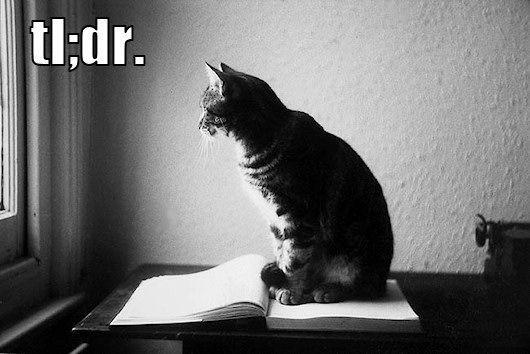
What Is Math? by Dan Falk
Life with purpose by philip ball, what is everything made of by charles sebens, small, yes, but mighty by natalie angier, your handy postcard-sized guide to statistics by tim harford, 100 more articles about science, the internet, the attention economy by tom chatfield, user behaviour by michael schulson, escape the matrix by virginia heffernan, instagram is over by kate lindsay, 50 more articles about the internet, the environment, we should fix climate change — but we should not regret it by thomas r. wells, is humanity suicidal by edward o. wilson, 50 more articles about the environment, what is the monkeysphere by david wong, how life became an endless, terrible competition by daniel markovits, your lifestyle has already been designed by david cain, 100 more articles about psychology, mental health, adventures in depression by allie brosh, the most dangerous idea in mental health by ed cara, the acceleration of addictiveness by paul graham, 50 more articles about mental health, why you are unhappy by tim urban, buy experiences, not things by james hamblin, 20 more articles about happiness, a few words about breasts by nora ephron, hello, i am fat by lindy west, the onset by my ngoc to, 25 more articles about body image.
About The Electric Typewriter We search the net to bring you the best nonfiction, articles, essays and journalism

- About Michelle Waters
- Curriculum Vitae
- Tools I Use
- Podcast Episodes
- How To Be Our Podcast Guest
- Member Login
- Member Helpdesk
- Support Portal
- Resource Partners
- Writing Partners
- Certificate Verification
- How To Contribute
by Michelle Boyd Waters, M.Ed.
Essays Every High School Student Should Read
December 4, 2016 in Pedagogy
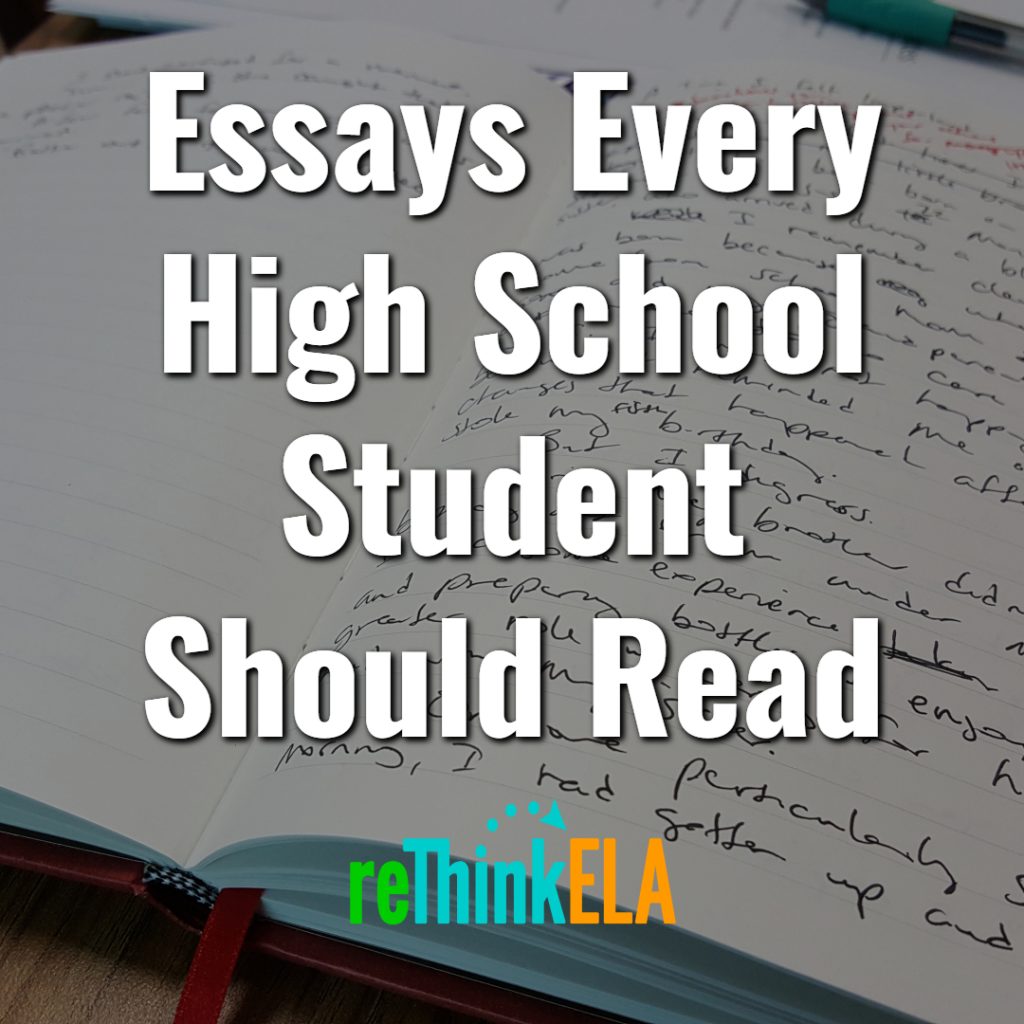
One of the most important goals of any English class should be to help students learn how to express themselves to an audience — how to tell their own stories, how to provide much-needed information, and how to convince others to see things from a different perspective.
Below are some essays students can read, not only to help them see how such writing is done in the real world, but also to learn more about the world around them.
[bctt tweet=”Need a #mentortext for student essays? Check out these exemplars for personal narrative, argumentative, and expository essay writing.”]
Note : This is a living list. I will continue adding to it as I find important essays and articles, and as my readers make suggestions.
If You Think Racism Doesn’t Exist by Jordan Womack | Lesson Plan
A 17-year-old Oklahoma author details incidents of discrimination he has faced within his own community. Brief, yet impactful, the author’s authenticity strikes readers at their core and naturally leads the audience to consider other perspectives.
Facebook hack ‘worse than when my house burned down’ says teacher by Michelle Boyd Waters, M.Ed.
When a hacker destroyed my Facebook account and I couldn’t find a way to reach out to Facebook, I decided to use my story, voice, and platform to shed light on a situation faced by people around the world. This can serve as a mentor text for students writing personal narratives on shared experiences in the context of current events.
Letter from a Vietnamese to an Iraqi Refugee by Andrew Lam
Vietnamese lecturer, journalist, and author Andrew Lam offers advice in this letter to a young Iraqi refugee he sees in a photograph on the Internet.
Allowing Teenage Boys to Love Their Friends by Jan Hoffman
Learn why early and lifelong friendships are as vital for boys as they are for girls and what happens when those friendships are fractured.
Chris Cecil: Plagiarism Gets You Fired by Leonard Pitts Jr
The Miami Herald columnist and 2004 Pulitzer Prize for Commentary winner castigates a Georgia newspaper editor for plagiarizing his work. This column would go great with this followup article from The Boston Globe: Ga. Editor is Fired for Lifting Columns .
Class Dismissed by Walter Kirn
The author of Lost in the Meritocracy postulates that getting rid of the high school senior year might be good for students.
Complaint Box | Packaging by Dylan Quinn
A high school junior complains about the impossible-to-open packaging faced by consumers of everything “from action figures to zip drives.”
Drowning in Dishes, but Finding a Home by Danial Adkison
In this 2014 essay, a teenager learns important lessons from his boss at Pizza Hut.
How to Tame a Wild Tongue by Gloria Anzaldua
An American scholar of Chicana cultural theory discusses how she maintained her identity by refusing to submit to linguistic terrorism.
Humble Beast: Samaje Perine by John Rohde
The five-time Oklahoma Sportswriter of the Year features the University of Oklahoma’s running back.
In Praise of the F Word by Mary Sherry
An adult literacy program teacher argues that allowing students to fail will actually help them.
The Joy of Reading and Writing: Superman and Me by Sherman Alexie
A Native American novelist recounts his experience loving reading and finally writing in spite of a culture that expected him to fail in the “non-Indian world” in order to be accepted.
Lane’s Legacy: One Final Ride by Keith Ryan Cartwright
A heartbreaking look back at the hours before and the circumstances surrounding Lane Frost’s untimely death, followed by reflections on his rise to fame — before and after death.
Learning to Read by Malcolm X
The 1960s Civil Rights leader writes about how educating himself in prison opened his mind and lead him to become one of the leading spokesmen for black separatism.
Learning to Read and Write by Frederick Douglass
A former slave born in 1818 discusses how he learned to read in spite of laws against teaching slaves and how reading opened his eyes to his “wretched condition, without remedy.”
Learning From Animal Friendships by Erica Goode
Scientists consider studying the phenomenon of cross-species animal friendships like the ones you see on YouTube.
Losing Everything, Except What Really Matters by Dan Barry
After a 2011 tornado destroys a house, but spares the family, a reporter writes about what’s important.
The Marked Woman by David Grann
How an Osage Indian family in Oklahoma became the prime target of one of the most sinister crimes in American history.
Meet Mikey, 8: U.S. Has Him on Watch List by Lizette Alvarez
Read about what happens if you happen to share a name of a “suspicious person” on the U.S. No-Fly List.
Newly Homeless in Japan Re-Establish Order Amid Chaos by Michael Wines
After the tsunami that resulted in nuclear disaster in 2011, a reporter writes about the “quiet bravery in the face of tragedy” of the Japanese people.
No Ordinary Joe by Rick Reilly
Why in creation did American Football Conference’s 1981 best young running back Joe Delaney jump into that pit full of water that day, even though he couldn’t swim?
Politics and the English Language By George Orwell
Animal Farm and 1984 author, Orwell correlates the degradation of the English language into multi-syllabic drivel and the corruption of the American political process.
Serving in Florida by Barbara Ehrenreich
The Nickel and Dimed: On (Not) Getting By in America author tells about her experiences attempting to survive on income of low-paying jobs.
Starvation Under the Orange Trees by John Steinbeck
John Steinbeck, who later authored the fictionalized account of Okies in California, The Grapes of Wrath, first wrote this essay documenting the starvation of migrant workers in California during the Great Depression.
To Fall in Love With Anyone, Do This by Mandy Len Catron
Is falling in love really a random event, or can two people “love smarter?”
We’ll Go Forward from this Moment by Leonard Pitts
The 2004 Pulitzer Prize for Commentary winner pens a column chronicling the toughness of the American family’s spirit in the face of the September 11, 2001 World Trade Center attacks. He wrote the column one day after the attacks.
What’s Wrong with Black English? by Rachel L. Jones
Jones, a student at Southern Illinois University in the 1980s, wrote this piece for Newsweek. In her essay, Jones adds her story and perspective to the debate over Black English.
Related topics: Mentor Texts , Teaching Writing
About the author
Michelle Boyd Waters, M.Ed.
I am a secondary English Language Arts teacher, a University of Oklahoma student working on my doctorate in Instructional Leadership and Academic Curriculum with an concentration in English Education and co-Editor of the Oklahoma English Journal. I am constantly seeking ways to amplify students' voices and choices.
A wonderful list of essays! I have neglected to teach essays as literature (only as student writing samples before we began work on an essay, after a novel). I’m looking forward to using these!
Thank you very much! I’d love to hear (or read) your feedback on the selections. Your input can help other teachers decide which essays to teach their students.
This list looks really great. Unfortunately, the first two links I chose were not working. One took me to a professors homepage and the other never opened.
Thank you for letting us know. I checked the “If you think racism doesn’t exist” went to the WordPress.com site where the author wrote his article and “Letter from a Vietnamese to an Iraqi Refugee” went to the Huffington Post article. Is it possible that your school web filter is blocking WordPress and Huffington Post?
Thank you for this. I am teaching a summer class that prepares 8th graders for high school essay writing. Trying to find a way to make it more creative and interesting, even interactive. I like the essays. If you have ideas about specific ways to use them, beyond reading and discussion, I would love to hear them.
You’re welcome! I think additional activities would depend on who your students are, their interests, and which essay(s) you plan to use. Perhaps if you join our RTE Facebook group and tell us about your kids and the essay you want to use, we can devise some activities to help them engage. Check us out here .
Comments are closed.
- Search Results
The best essay collections to read now
From advice on friendship and understanding modern life to getting a grasp on coronavirus, these books offer insight on life.
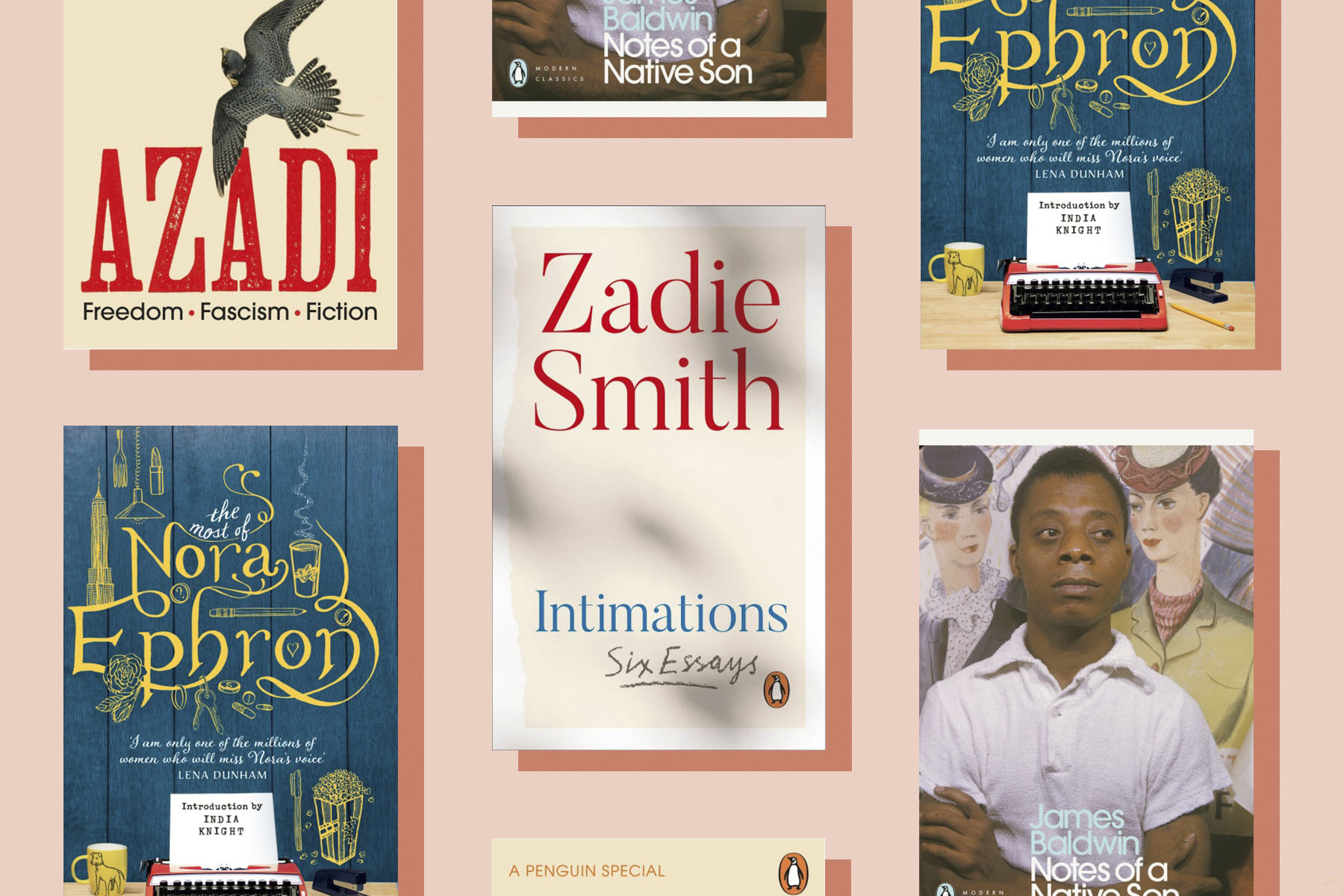
What better way to get into the work of a writer than through a collection of their essays?
These seven collections, from novelists and critics alike, address a myriad of subjects from friendship to how colleges are dealing with sexual assaults on campus to race and racism.
Trick Mirror by Jia Tolentino (2019)
As a staff writer at The New Yorker , Jia Tolentino has explored everything from a rise in youth vaping to the ongoing cultural reckoning about sexual assault. Her first book Trick Mirror takes some of those pieces for The New Yorker as well as new work to form what is one of the sharpest collections of cultural criticism today.
Using herself and her own coming of age as a lens for many of the essays, Tolentino turns her pen and her eye to everything from her generation’s obsession with extravagant weddings to how college campuses deal with sexual assault.
If you’re looking for an insight into millennial life, then Trick Mirror should be on your to-read list.
In Search of Our Mothers’ Gardens by Alice Walker (1983)
Sometimes essays collected from a sprawling period of a successful writer’s life can feel like a hasty addition to a bibliography; a smash-and-grab of notebook flotsam. Not so In Search of Our Mother’s Gardens , from which one can truly understand the sheer range of the Pulitzer Prize winner’s range of study and activism. From Walker’s first published piece of non-fiction (for which she won a prize, and spent her winnings on cut peonies) to more elegiac pieces about her heritage, Walker’s thoughts on feminism (which she terms “womanism”) and the Civil Rights Movement remain grippingly pertinent 50 years on.
Me Talk Pretty One Day by David Sedaris (2000)
That David Sedaris’s ascent to literary stardom happened later in his life – his breakthrough collection of humour essays was released when he was 44 – suited the author’s writing style perfectly. Me Talk Pretty One Day is both a painfully funny account of his childhood and an enduring snapshot of mid-forties malaise. First story ‘Go Carolina’, about his attempt to transcend a childhood lisp, is told from a perfect distance and with all the worldliness necessary to milk every drop of tragic, cringeworthy humour from his childhood. It never falters from there: by the book’s second half, in which Sedaris is living in France, he’s firmly established his niche, writing about the ways that even snobs experience utter humiliation – and Me Talk Pretty One Day is all the more human for it.
Sign up to the Penguin Newsletter
By signing up, I confirm that I'm over 16. To find out what personal data we collect and how we use it, please visit our Privacy Policy
- Craft and Criticism
- Fiction and Poetry
- News and Culture
- Lit Hub Radio
- Reading Lists

- Literary Criticism
- Craft and Advice
- In Conversation
- On Translation
- Short Story
- From the Novel
- Bookstores and Libraries
- Film and TV
- Art and Photography
- Freeman’s
- The Virtual Book Channel
- Behind the Mic
- Beyond the Page
- The Cosmic Library
- The Critic and Her Publics
- Emergence Magazine
- Fiction/Non/Fiction
- First Draft: A Dialogue on Writing
- Future Fables
- The History of Literature
- I’m a Writer But
- Just the Right Book
- Lit Century
- The Literary Life with Mitchell Kaplan
- New Books Network
- Tor Presents: Voyage Into Genre
- Windham-Campbell Prizes Podcast
- Write-minded
- The Best of the Decade
- Best Reviewed Books
- BookMarks Daily Giveaway
- The Daily Thrill
- CrimeReads Daily Giveaway

The 10 Best Essay Collections of the Decade
Ever tried. ever failed. no matter..
Friends, it’s true: the end of the decade approaches. It’s been a difficult, anxiety-provoking, morally compromised decade, but at least it’s been populated by some damn fine literature. We’ll take our silver linings where we can.
So, as is our hallowed duty as a literary and culture website—though with full awareness of the potentially fruitless and endlessly contestable nature of the task—in the coming weeks, we’ll be taking a look at the best and most important (these being not always the same) books of the decade that was. We will do this, of course, by means of a variety of lists. We began with the best debut novels , the best short story collections , the best poetry collections , and the best memoirs of the decade , and we have now reached the fifth list in our series: the best essay collections published in English between 2010 and 2019.
The following books were chosen after much debate (and several rounds of voting) by the Literary Hub staff. Tears were spilled, feelings were hurt, books were re-read. And as you’ll shortly see, we had a hard time choosing just ten—so we’ve also included a list of dissenting opinions, and an even longer list of also-rans. As ever, free to add any of your own favorites that we’ve missed in the comments below.
The Top Ten
Oliver sacks, the mind’s eye (2010).
Toward the end of his life, maybe suspecting or sensing that it was coming to a close, Dr. Oliver Sacks tended to focus his efforts on sweeping intellectual projects like On the Move (a memoir), The River of Consciousness (a hybrid intellectual history), and Hallucinations (a book-length meditation on, what else, hallucinations). But in 2010, he gave us one more classic in the style that first made him famous, a form he revolutionized and brought into the contemporary literary canon: the medical case study as essay. In The Mind’s Eye , Sacks focuses on vision, expanding the notion to embrace not only how we see the world, but also how we map that world onto our brains when our eyes are closed and we’re communing with the deeper recesses of consciousness. Relaying histories of patients and public figures, as well as his own history of ocular cancer (the condition that would eventually spread and contribute to his death), Sacks uses vision as a lens through which to see all of what makes us human, what binds us together, and what keeps us painfully apart. The essays that make up this collection are quintessential Sacks: sensitive, searching, with an expertise that conveys scientific information and experimentation in terms we can not only comprehend, but which also expand how we see life carrying on around us. The case studies of “Stereo Sue,” of the concert pianist Lillian Kalir, and of Howard, the mystery novelist who can no longer read, are highlights of the collection, but each essay is a kind of gem, mined and polished by one of the great storytellers of our era. –Dwyer Murphy, CrimeReads Managing Editor
John Jeremiah Sullivan, Pulphead (2011)
The American essay was having a moment at the beginning of the decade, and Pulphead was smack in the middle. Without any hard data, I can tell you that this collection of John Jeremiah Sullivan’s magazine features—published primarily in GQ , but also in The Paris Review , and Harper’s —was the only full book of essays most of my literary friends had read since Slouching Towards Bethlehem , and probably one of the only full books of essays they had even heard of.
Well, we all picked a good one. Every essay in Pulphead is brilliant and entertaining, and illuminates some small corner of the American experience—even if it’s just one house, with Sullivan and an aging writer inside (“Mr. Lytle” is in fact a standout in a collection with no filler; fittingly, it won a National Magazine Award and a Pushcart Prize). But what are they about? Oh, Axl Rose, Christian Rock festivals, living around the filming of One Tree Hill , the Tea Party movement, Michael Jackson, Bunny Wailer, the influence of animals, and by god, the Miz (of Real World/Road Rules Challenge fame).
But as Dan Kois has pointed out , what connects these essays, apart from their general tone and excellence, is “their author’s essential curiosity about the world, his eye for the perfect detail, and his great good humor in revealing both his subjects’ and his own foibles.” They are also extremely well written, drawing much from fictional techniques and sentence craft, their literary pleasures so acute and remarkable that James Wood began his review of the collection in The New Yorker with a quiz: “Are the following sentences the beginnings of essays or of short stories?” (It was not a hard quiz, considering the context.)
It’s hard not to feel, reading this collection, like someone reached into your brain, took out the half-baked stuff you talk about with your friends, researched it, lived it, and represented it to you smarter and better and more thoroughly than you ever could. So read it in awe if you must, but read it. –Emily Temple, Senior Editor
Aleksandar Hemon, The Book of My Lives (2013)
Such is the sentence-level virtuosity of Aleksandar Hemon—the Bosnian-American writer, essayist, and critic—that throughout his career he has frequently been compared to the granddaddy of borrowed language prose stylists: Vladimir Nabokov. While it is, of course, objectively remarkable that anyone could write so beautifully in a language they learned in their twenties, what I admire most about Hemon’s work is the way in which he infuses every essay and story and novel with both a deep humanity and a controlled (but never subdued) fury. He can also be damn funny. Hemon grew up in Sarajevo and left in 1992 to study in Chicago, where he almost immediately found himself stranded, forced to watch from afar as his beloved home city was subjected to a relentless four-year bombardment, the longest siege of a capital in the history of modern warfare. This extraordinary memoir-in-essays is many things: it’s a love letter to both the family that raised him and the family he built in exile; it’s a rich, joyous, and complex portrait of a place the 90s made synonymous with war and devastation; and it’s an elegy for the wrenching loss of precious things. There’s an essay about coming of age in Sarajevo and another about why he can’t bring himself to leave Chicago. There are stories about relationships forged and maintained on the soccer pitch or over the chessboard, and stories about neighbors and mentors turned monstrous by ethnic prejudice. As a chorus they sing with insight, wry humor, and unimaginable sorrow. I am not exaggerating when I say that the collection’s devastating final piece, “The Aquarium”—which details his infant daughter’s brain tumor and the agonizing months which led up to her death—remains the most painful essay I have ever read. –Dan Sheehan, Book Marks Editor
Robin Wall Kimmerer, Braiding Sweetgrass (2013)
Of every essay in my relentlessly earmarked copy of Braiding Sweetgrass , Dr. Robin Wall Kimmerer’s gorgeously rendered argument for why and how we should keep going, there’s one that especially hits home: her account of professor-turned-forester Franz Dolp. When Dolp, several decades ago, revisited the farm that he had once shared with his ex-wife, he found a scene of destruction: The farm’s new owners had razed the land where he had tried to build a life. “I sat among the stumps and the swirling red dust and I cried,” he wrote in his journal.
So many in my generation (and younger) feel this kind of helplessness–and considerable rage–at finding ourselves newly adult in a world where those in power seem determined to abandon or destroy everything that human bodies have always needed to survive: air, water, land. Asking any single book to speak to this helplessness feels unfair, somehow; yet, Braiding Sweetgrass does, by weaving descriptions of indigenous tradition with the environmental sciences in order to show what survival has looked like over the course of many millennia. Kimmerer’s essays describe her personal experience as a Potawotami woman, plant ecologist, and teacher alongside stories of the many ways that humans have lived in relationship to other species. Whether describing Dolp’s work–he left the stumps for a life of forest restoration on the Oregon coast–or the work of others in maple sugar harvesting, creating black ash baskets, or planting a Three Sisters garden of corn, beans, and squash, she brings hope. “In ripe ears and swelling fruit, they counsel us that all gifts are multiplied in relationship,” she writes of the Three Sisters, which all sustain one another as they grow. “This is how the world keeps going.” –Corinne Segal, Senior Editor
Hilton Als, White Girls (2013)
In a world where we are so often reduced to one essential self, Hilton Als’ breathtaking book of critical essays, White Girls , which meditates on the ways he and other subjects read, project and absorb parts of white femininity, is a radically liberating book. It’s one of the only works of critical thinking that doesn’t ask the reader, its author or anyone he writes about to stoop before the doorframe of complete legibility before entering. Something he also permitted the subjects and readers of his first book, the glorious book-length essay, The Women , a series of riffs and psychological portraits of Dorothy Dean, Owen Dodson, and the author’s own mother, among others. One of the shifts of that book, uncommon at the time, was how it acknowledges the way we inhabit bodies made up of variously gendered influences. To read White Girls now is to experience the utter freedom of this gift and to marvel at Als’ tremendous versatility and intelligence.
He is easily the most diversely talented American critic alive. He can write into genres like pop music and film where being part of an audience is a fantasy happening in the dark. He’s also wired enough to know how the art world builds reputations on the nod of rich white patrons, a significant collision in a time when Jean-Michel Basquiat is America’s most expensive modern artist. Als’ swerving and always moving grip on performance means he’s especially good on describing the effect of art which is volatile and unstable and built on the mingling of made-up concepts and the hard fact of their effect on behavior, such as race. Writing on Flannery O’Connor for instance he alone puts a finger on her “uneasy and unavoidable union between black and white, the sacred and the profane, the shit and the stars.” From Eminem to Richard Pryor, André Leon Talley to Michael Jackson, Als enters the life and work of numerous artists here who turn the fascinations of race and with whiteness into fury and song and describes the complexity of their beauty like his life depended upon it. There are also brief memoirs here that will stop your heart. This is an essential work to understanding American culture. –John Freeman, Executive Editor
Eula Biss, On Immunity (2014)
We move through the world as if we can protect ourselves from its myriad dangers, exercising what little agency we have in an effort to keep at bay those fears that gather at the edges of any given life: of loss, illness, disaster, death. It is these fears—amplified by the birth of her first child—that Eula Biss confronts in her essential 2014 essay collection, On Immunity . As any great essayist does, Biss moves outward in concentric circles from her own very private view of the world to reveal wider truths, discovering as she does a culture consumed by anxiety at the pervasive toxicity of contemporary life. As Biss interrogates this culture—of privilege, of whiteness—she interrogates herself, questioning the flimsy ways in which we arm ourselves with science or superstition against the impurities of daily existence.
Five years on from its publication, it is dismaying that On Immunity feels as urgent (and necessary) a defense of basic science as ever. Vaccination, we learn, is derived from vacca —for cow—after the 17th-century discovery that a small application of cowpox was often enough to inoculate against the scourge of smallpox, an etymological digression that belies modern conspiratorial fears of Big Pharma and its vaccination agenda. But Biss never scolds or belittles the fears of others, and in her generosity and openness pulls off a neat (and important) trick: insofar as we are of the very world we fear, she seems to be suggesting, we ourselves are impure, have always been so, permeable, vulnerable, yet so much stronger than we think. –Jonny Diamond, Editor-in-Chief
Rebecca Solnit, The Mother of All Questions (2016)
When Rebecca Solnit’s essay, “Men Explain Things to Me,” was published in 2008, it quickly became a cultural phenomenon unlike almost any other in recent memory, assigning language to a behavior that almost every woman has witnessed—mansplaining—and, in the course of identifying that behavior, spurring a movement, online and offline, to share the ways in which patriarchal arrogance has intersected all our lives. (It would also come to be the titular essay in her collection published in 2014.) The Mother of All Questions follows up on that work and takes it further in order to examine the nature of self-expression—who is afforded it and denied it, what institutions have been put in place to limit it, and what happens when it is employed by women. Solnit has a singular gift for describing and decoding the misogynistic dynamics that govern the world so universally that they can seem invisible and the gendered violence that is so common as to seem unremarkable; this naming is powerful, and it opens space for sharing the stories that shape our lives.
The Mother of All Questions, comprised of essays written between 2014 and 2016, in many ways armed us with some of the tools necessary to survive the gaslighting of the Trump years, in which many of us—and especially women—have continued to hear from those in power that the things we see and hear do not exist and never existed. Solnit also acknowledges that labels like “woman,” and other gendered labels, are identities that are fluid in reality; in reviewing the book for The New Yorker , Moira Donegan suggested that, “One useful working definition of a woman might be ‘someone who experiences misogyny.'” Whichever words we use, Solnit writes in the introduction to the book that “when words break through unspeakability, what was tolerated by a society sometimes becomes intolerable.” This storytelling work has always been vital; it continues to be vital, and in this book, it is brilliantly done. –Corinne Segal, Senior Editor
Valeria Luiselli, Tell Me How It Ends (2017)
The newly minted MacArthur fellow Valeria Luiselli’s four-part (but really six-part) essay Tell Me How It Ends: An Essay in Forty Questions was inspired by her time spent volunteering at the federal immigration court in New York City, working as an interpreter for undocumented, unaccompanied migrant children who crossed the U.S.-Mexico border. Written concurrently with her novel Lost Children Archive (a fictional exploration of the same topic), Luiselli’s essay offers a fascinating conceit, the fashioning of an argument from the questions on the government intake form given to these children to process their arrivals. (Aside from the fact that this essay is a heartbreaking masterpiece, this is such a good conceit—transforming a cold, reproducible administrative document into highly personal literature.) Luiselli interweaves a grounded discussion of the questionnaire with a narrative of the road trip Luiselli takes with her husband and family, across America, while they (both Mexican citizens) wait for their own Green Card applications to be processed. It is on this trip when Luiselli reflects on the thousands of migrant children mysteriously traveling across the border by themselves. But the real point of the essay is to actually delve into the real stories of some of these children, which are agonizing, as well as to gravely, clearly expose what literally happens, procedural, when they do arrive—from forms to courts, as they’re swallowed by a bureaucratic vortex. Amid all of this, Luiselli also takes on more, exploring the larger contextual relationship between the United States of America and Mexico (as well as other countries in Central America, more broadly) as it has evolved to our current, adverse moment. Tell Me How It Ends is so small, but it is so passionate and vigorous: it desperately accomplishes in its less-than-100-pages-of-prose what centuries and miles and endless records of federal bureaucracy have never been able, and have never cared, to do: reverse the dehumanization of Latin American immigrants that occurs once they set foot in this country. –Olivia Rutigliano, CrimeReads Editorial Fellow
Zadie Smith, Feel Free (2018)
In the essay “Meet Justin Bieber!” in Feel Free , Zadie Smith writes that her interest in Justin Bieber is not an interest in the interiority of the singer himself, but in “the idea of the love object”. This essay—in which Smith imagines a meeting between Bieber and the late philosopher Martin Buber (“Bieber and Buber are alternative spellings of the same German surname,” she explains in one of many winning footnotes. “Who am I to ignore these hints from the universe?”). Smith allows that this premise is a bit premise -y: “I know, I know.” Still, the resulting essay is a very funny, very smart, and un-tricky exploration of individuality and true “meeting,” with a dash of late capitalism thrown in for good measure. The melding of high and low culture is the bread and butter of pretty much every prestige publication on the internet these days (and certainly of the Twitter feeds of all “public intellectuals”), but the essays in Smith’s collection don’t feel familiar—perhaps because hers is, as we’ve long known, an uncommon skill. Though I believe Smith could probably write compellingly about anything, she chooses her subjects wisely. She writes with as much electricity about Brexit as the aforementioned Beliebers—and each essay is utterly engrossing. “She contains multitudes, but her point is we all do,” writes Hermione Hoby in her review of the collection in The New Republic . “At the same time, we are, in our endless difference, nobody but ourselves.” –Jessie Gaynor, Social Media Editor
Tressie McMillan Cottom, Thick: And Other Essays (2019)
Tressie McMillan Cottom is an academic who has transcended the ivory tower to become the sort of public intellectual who can easily appear on radio or television talk shows to discuss race, gender, and capitalism. Her collection of essays reflects this duality, blending scholarly work with memoir to create a collection on the black female experience in postmodern America that’s “intersectional analysis with a side of pop culture.” The essays range from an analysis of sexual violence, to populist politics, to social media, but in centering her own experiences throughout, the collection becomes something unlike other pieces of criticism of contemporary culture. In explaining the title, she reflects on what an editor had said about her work: “I was too readable to be academic, too deep to be popular, too country black to be literary, and too naïve to show the rigor of my thinking in the complexity of my prose. I had wanted to create something meaningful that sounded not only like me, but like all of me. It was too thick.” One of the most powerful essays in the book is “Dying to be Competent” which begins with her unpacking the idiocy of LinkedIn (and the myth of meritocracy) and ends with a description of her miscarriage, the mishandling of black woman’s pain, and a condemnation of healthcare bureaucracy. A finalist for the 2019 National Book Award for Nonfiction, Thick confirms McMillan Cottom as one of our most fearless public intellectuals and one of the most vital. –Emily Firetog, Deputy Editor
Dissenting Opinions
The following books were just barely nudged out of the top ten, but we (or at least one of us) couldn’t let them pass without comment.
Elif Batuman, The Possessed (2010)
In The Possessed Elif Batuman indulges her love of Russian literature and the result is hilarious and remarkable. Each essay of the collection chronicles some adventure or other that she had while in graduate school for Comparative Literature and each is more unpredictable than the next. There’s the time a “well-known 20th-centuryist” gave a graduate student the finger; and the time when Batuman ended up living in Samarkand, Uzbekistan, for a summer; and the time that she convinced herself Tolstoy was murdered and spent the length of the Tolstoy Conference in Yasnaya Polyana considering clues and motives. Rich in historic detail about Russian authors and literature and thoughtfully constructed, each essay is an amalgam of critical analysis, cultural criticism, and serious contemplation of big ideas like that of identity, intellectual legacy, and authorship. With wit and a serpentine-like shape to her narratives, Batuman adopts a form reminiscent of a Socratic discourse, setting up questions at the beginning of her essays and then following digressions that more or less entreat the reader to synthesize the answer for herself. The digressions are always amusing and arguably the backbone of the collection, relaying absurd anecdotes with foreign scholars or awkward, surreal encounters with Eastern European strangers. Central also to the collection are Batuman’s intellectual asides where she entertains a theory—like the “problem of the person”: the inability to ever wholly capture one’s character—that ultimately layer the book’s themes. “You are certainly my most entertaining student,” a professor said to Batuman. But she is also curious and enthusiastic and reflective and so knowledgeable that she might even convince you (she has me!) that you too love Russian literature as much as she does. –Eleni Theodoropoulos, Editorial Fellow
Roxane Gay, Bad Feminist (2014)
Roxane Gay’s now-classic essay collection is a book that will make you laugh, think, cry, and then wonder, how can cultural criticism be this fun? My favorite essays in the book include Gay’s musings on competitive Scrabble, her stranded-in-academia dispatches, and her joyous film and television criticism, but given the breadth of topics Roxane Gay can discuss in an entertaining manner, there’s something for everyone in this one. This book is accessible because feminism itself should be accessible – Roxane Gay is as likely to draw inspiration from YA novels, or middle-brow shows about friendship, as she is to introduce concepts from the academic world, and if there’s anyone I trust to bridge the gap between high culture, low culture, and pop culture, it’s the Goddess of Twitter. I used to host a book club dedicated to radical reads, and this was one of the first picks for the club; a week after the book club met, I spied a few of the attendees meeting in the café of the bookstore, and found out that they had bonded so much over discussing Bad Feminist that they couldn’t wait for the next meeting of the book club to keep discussing politics and intersectionality, and that, in a nutshell, is the power of Roxane. –Molly Odintz, CrimeReads Associate Editor
Rivka Galchen, Little Labors (2016)
Generally, I find stories about the trials and tribulations of child-having to be of limited appeal—useful, maybe, insofar as they offer validation that other people have also endured the bizarre realities of living with a tiny human, but otherwise liable to drift into the musings of parents thrilled at the simple fact of their own fecundity, as if they were the first ones to figure the process out (or not). But Little Labors is not simply an essay collection about motherhood, perhaps because Galchen initially “didn’t want to write about” her new baby—mostly, she writes, “because I had never been interested in babies, or mothers; in fact, those subjects had seemed perfectly not interesting to me.” Like many new mothers, though, Galchen soon discovered her baby—which she refers to sometimes as “the puma”—to be a preoccupying thought, demanding to be written about. Galchen’s interest isn’t just in her own progeny, but in babies in literature (“Literature has more dogs than babies, and also more abortions”), The Pillow Book , the eleventh-century collection of musings by Sei Shōnagon, and writers who are mothers. There are sections that made me laugh out loud, like when Galchen continually finds herself in an elevator with a neighbor who never fails to remark on the puma’s size. There are also deeper, darker musings, like the realization that the baby means “that it’s not permissible to die. There are days when this does not feel good.” It is a slim collection that I happened to read at the perfect time, and it remains one of my favorites of the decade. –Emily Firetog, Deputy Editor
Charlie Fox, This Young Monster (2017)
On social media as in his writing, British art critic Charlie Fox rejects lucidity for allusion and doesn’t quite answer the Twitter textbox’s persistent question: “What’s happening?” These days, it’s hard to tell. This Young Monster (2017), Fox’s first book,was published a few months after Donald Trump’s election, and at one point Fox takes a swipe at a man he judges “direct from a nightmare and just a repulsive fucking goon.” Fox doesn’t linger on politics, though, since most of the monsters he looks at “embody otherness and make it into art, ripping any conventional idea of beauty to shreds and replacing it with something weird and troubling of their own invention.”
If clichés are loathed because they conform to what philosopher Georges Bataille called “the common measure,” then monsters are rebellious non-sequiturs, comedic or horrific derailments from a classical ideal. Perverts in the most literal sense, monsters have gone astray from some “proper” course. The book’s nine chapters, which are about a specific monster or type of monster, are full of callbacks to familiar and lesser-known media. Fox cites visual art, film, songs, and books with the screwy buoyancy of a savant. Take one of his essays, “Spook House,” framed as a stage play with two principal characters, Klaus (“an intoxicated young skinhead vampire”) and Hermione (“a teen sorceress with green skin and jet-black hair” who looks more like The Wicked Witch than her namesake). The chorus is a troupe of trick-or-treaters. Using the filmmaker Cameron Jamie as a starting point, the rest is free association on gothic decadence and Detroit and L.A. as cities of the dead. All the while, Klaus quotes from Artforum , Dazed & Confused , and Time Out. It’s a technical feat that makes fictionalized dialogue a conveyor belt for cultural criticism.
In Fox’s imagination, David Bowie and the Hydra coexist alongside Peter Pan, Dennis Hopper, and the maenads. Fox’s book reaches for the monster’s mask, not really to peel it off but to feel and smell the rubber schnoz, to know how it’s made before making sure it’s still snugly set. With a stylistic blend of arthouse suavity and B-movie chic, This Young Monster considers how monsters in culture are made. Aren’t the scariest things made in post-production? Isn’t the creature just duplicity, like a looping choir or a dubbed scream? –Aaron Robertson, Assistant Editor
Elena Passarello, Animals Strike Curious Poses (2017)
Elena Passarello’s collection of essays Animals Strike Curious Poses picks out infamous animals and grants them the voice, narrative, and history they deserve. Not only is a collection like this relevant during the sixth extinction but it is an ambitious historical and anthropological undertaking, which Passarello has tackled with thorough research and a playful tone that rather than compromise her subject, complicates and humanizes it. Passarello’s intention is to investigate the role of animals across the span of human civilization and in doing so, to construct a timeline of humanity as told through people’s interactions with said animals. “Of all the images that make our world, animal images are particularly buried inside us,” Passarello writes in her first essay, to introduce us to the object of the book and also to the oldest of her chosen characters: Yuka, a 39,000-year-old mummified woolly mammoth discovered in the Siberian permafrost in 2010. It was an occasion so remarkable and so unfathomable given the span of human civilization that Passarello says of Yuka: “Since language is epically younger than both thought and experience, ‘woolly mammoth’ means, to a human brain, something more like time.” The essay ends with a character placing a hand on a cave drawing of a woolly mammoth, accompanied by a phrase which encapsulates the author’s vision for the book: “And he becomes the mammoth so he can envision the mammoth.” In Passarello’s hands the imagined boundaries between the animal, natural, and human world disintegrate and what emerges is a cohesive if baffling integrated history of life. With the accuracy and tenacity of a journalist and the spirit of a storyteller, Elena Passarello has assembled a modern bestiary worthy of contemplation and awe. –Eleni Theodoropoulos, Editorial Fellow
Esmé Weijun Wang, The Collected Schizophrenias (2019)
Esmé Weijun Wang’s collection of essays is a kaleidoscopic look at mental health and the lives affected by the schizophrenias. Each essay takes on a different aspect of the topic, but you’ll want to read them together for a holistic perspective. Esmé Weijun Wang generously begins The Collected Schizophrenias by acknowledging the stereotype, “Schizophrenia terrifies. It is the archetypal disorder of lunacy.” From there, she walks us through the technical language, breaks down the Diagnostic and Statistical Manual ( DSM-5 )’s clinical definition. And then she gets very personal, telling us about how she came to her own diagnosis and the way it’s touched her daily life (her relationships, her ideas about motherhood). Esmé Weijun Wang is uniquely situated to write about this topic. As a former lab researcher at Stanford, she turns a precise, analytical eye to her experience while simultaneously unfolding everything with great patience for her reader. Throughout, she brilliantly dissects the language around mental health. (On saying “a person living with bipolar disorder” instead of using “bipolar” as the sole subject: “…we are not our diseases. We are instead individuals with disorders and malfunctions. Our conditions lie over us like smallpox blankets; we are one thing and the illness is another.”) She pinpoints the ways she arms herself against anticipated reactions to the schizophrenias: high fashion, having attended an Ivy League institution. In a particularly piercing essay, she traces mental illness back through her family tree. She also places her story within more mainstream cultural contexts, calling on groundbreaking exposés about the dangerous of institutionalization and depictions of mental illness in television and film (like the infamous Slender Man case, in which two young girls stab their best friend because an invented Internet figure told them to). At once intimate and far-reaching, The Collected Schizophrenias is an informative and important (and let’s not forget artful) work. I’ve never read a collection quite so beautifully-written and laid-bare as this. –Katie Yee, Book Marks Assistant Editor
Ross Gay, The Book of Delights (2019)
When Ross Gay began writing what would become The Book of Delights, he envisioned it as a project of daily essays, each focused on a moment or point of delight in his day. This plan quickly disintegrated; on day four, he skipped his self-imposed assignment and decided to “in honor and love, delight in blowing it off.” (Clearly, “blowing it off” is a relative term here, as he still produced the book.) Ross Gay is a generous teacher of how to live, and this moment of reveling in self-compassion is one lesson among many in The Book of Delights , which wanders from moments of connection with strangers to a shade of “red I don’t think I actually have words for,” a text from a friend reading “I love you breadfruit,” and “the sun like a guiding hand on my back, saying everything is possible. Everything .”
Gay does not linger on any one subject for long, creating the sense that delight is a product not of extenuating circumstances, but of our attention; his attunement to the possibilities of a single day, and awareness of all the small moments that produce delight, are a model for life amid the warring factions of the attention economy. These small moments range from the physical–hugging a stranger, transplanting fig cuttings–to the spiritual and philosophical, giving the impression of sitting beside Gay in his garden as he thinks out loud in real time. It’s a privilege to listen. –Corinne Segal, Senior Editor
Honorable Mentions
A selection of other books that we seriously considered for both lists—just to be extra about it (and because decisions are hard).
Terry Castle, The Professor and Other Writings (2010) · Joyce Carol Oates, In Rough Country (2010) · Geoff Dyer, Otherwise Known as the Human Condition (2011) · Christopher Hitchens, Arguably (2011) · Roberto Bolaño, tr. Natasha Wimmer, Between Parentheses (2011) · Dubravka Ugresic, tr. David Williams, Karaoke Culture (2011) · Tom Bissell, Magic Hours (2012) · Kevin Young, The Grey Album (2012) · William H. Gass, Life Sentences: Literary Judgments and Accounts (2012) · Mary Ruefle, Madness, Rack, and Honey (2012) · Herta Müller, tr. Geoffrey Mulligan, Cristina and Her Double (2013) · Leslie Jamison, The Empathy Exams (2014) · Meghan Daum, The Unspeakable (2014) · Daphne Merkin, The Fame Lunches (2014) · Charles D’Ambrosio, Loitering (2015) · Wendy Walters, Multiply/Divide (2015) · Colm Tóibín, On Elizabeth Bishop (2015) · Renee Gladman, Calamities (2016) · Jesmyn Ward, ed. The Fire This Time (2016) · Lindy West, Shrill (2016) · Mary Oliver, Upstream (2016) · Emily Witt, Future Sex (2016) · Olivia Laing, The Lonely City (2016) · Mark Greif, Against Everything (2016) · Durga Chew-Bose, Too Much and Not the Mood (2017) · Sarah Gerard, Sunshine State (2017) · Jim Harrison, A Really Big Lunch (2017) · J.M. Coetzee, Late Essays: 2006-2017 (2017) · Melissa Febos, Abandon Me (2017) · Louise Glück, American Originality (2017) · Joan Didion, South and West (2017) · Tom McCarthy, Typewriters, Bombs, Jellyfish (2017) · Hanif Abdurraqib, They Can’t Kill Us Until they Kill Us (2017) · Ta-Nehisi Coates, We Were Eight Years in Power (2017) · Samantha Irby, We Are Never Meeting in Real Life (2017) · Alexander Chee, How to Write an Autobiographical Novel (2018) · Alice Bolin, Dead Girls (2018) · Marilynne Robinson, What Are We Doing Here? (2018) · Lorrie Moore, See What Can Be Done (2018) · Maggie O’Farrell, I Am I Am I Am (2018) · Ijeoma Oluo, So You Want to Talk About Race (2018) · Rachel Cusk, Coventry (2019) · Jia Tolentino, Trick Mirror (2019) · Emily Bernard, Black is the Body (2019) · Toni Morrison, The Source of Self-Regard (2019) · Margaret Renkl, Late Migrations (2019) · Rachel Munroe, Savage Appetites (2019) · Robert A. Caro, Working (2019) · Arundhati Roy, My Seditious Heart (2019).

Emily Temple
Previous article, next article.

- RSS - Posts
Literary Hub
Created by Grove Atlantic and Electric Literature
Sign Up For Our Newsletters
How to Pitch Lit Hub
Advertisers: Contact Us
Privacy Policy
Support Lit Hub - Become A Member
Become a Lit Hub Supporting Member : Because Books Matter
For the past decade, Literary Hub has brought you the best of the book world for free—no paywall. But our future relies on you. In return for a donation, you’ll get an ad-free reading experience , exclusive editors’ picks, book giveaways, and our coveted Joan Didion Lit Hub tote bag . Most importantly, you’ll keep independent book coverage alive and thriving on the internet.

Become a member for as low as $5/month
- lol Badge Feed
- win Badge Feed
- trending Badge Feed
Browse links
- © 2024 BuzzFeed, Inc
- Consent Preferences
- Accessibility Statement
17 Personal Essays That Will Change Your Life
Think essays are just something boring you write for class? These masterpieces will make you totally reconsider.

BuzzFeed News Reporter
1. "Goodbye To All That" – Joan Didion
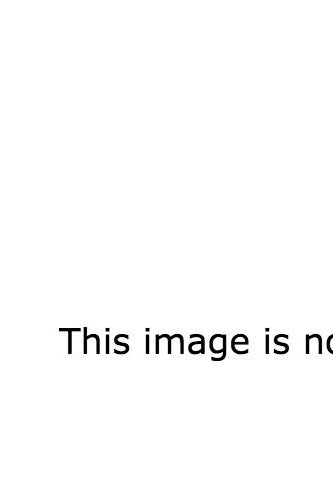
The final piece in one of her two most beloved collections, Slouching Towards Bethlehem , this essay contains everything there is to love about Didion — her sharp eye, her unbelievable concision, her expression of emotions that are real and contradictory. It follows her arrival in New York and her departure eight years later, and in so doing discusses the city and youth — and the romantic lies that both are. She writes: "... I was in love with New York. I do not mean 'love' in any colloquial way, I mean that I was in love with the city, the way you love the first person who ever touches you and never love anyone quite that way again."
2. "Mr. Lytle, an Essay" – John Jeremiah Sullivan

Sullivan has become one of the most talked about magazine writers of the last few years. This piece, which you can read online at the Paris Review , and was collected in his highly recommended book, Pulphead , is one of his best. It discusses, with such grace, being mentored in his twenties by once-famous Southern Renaissance writer Andrew Lytle. It's a meditation on art and futility, the Old South, and the sheer strangeness that can be relationships between men.
3. "Once More to the Lake" – E.B. White

Recognized for his children's literature (including Stuart Little and Charlotte's Web ) and popularizing Strunk's The Elements of Style , White was also an accomplished essayist. "Once More to the Lake" follows White and his son to Maine, where they spend a week along the same lake White visited with his father as a boy. It is one of the most moving reflections upon fatherhood, summertime, America, and mortality ever crafted. You can find it in many anthologies and in The Collected Essays of E.B. White .
4. "Ticket to the Fair" – David Foster Wallace

Those who knock Wallace for his verbosity — or associate him merely with a liberal use of footnotes — haven't read one of his classic essays through to the end. This one, which you can read online at Harper's or in his collection A Supposedly Fun Thing I'll Never Do Again , follows him home to Illinois, specifically to the state fair there. Laugh-out-loud hilarious and almost ridiculous in its level of detail, it explores the author's fractured identity, the Midwest versus the East Coast, and the American experience at large.
5. "A Few Words About Breasts" – Nora Ephron

Published in Esquire in 1975, this is the best-known essay by the late, great screenwriter and essayist. While she renders the experience of being flat-chested in the '50s with incredible humor and pathos, it is the essay's ending — the shock of it — that makes this unforgettable.
6. "Self-Reliance" — Ralph Waldo Emerson

One of Emerson's most influential essays, you can read it online or in nearly every collection of his works. While his prose's formality may be a shock at first, what he says he says with great clarity and to the great empowerment of his reader. It is a declaration of the fact that true happiness, in oneself and all relationships, must spurn from self-love and honest expression: "I must be myself. I cannot break myself any longer for you, or you. If you can love me for what I am, we shall be the happier. If you cannot, I will still seek to deserve that you should."
7. "Here Is a Lesson in Creative Writing" – Kurt Vonnegut
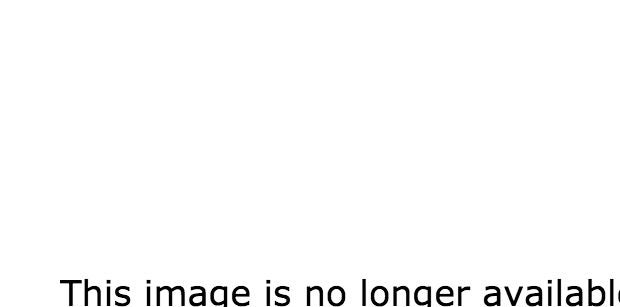
Though it's collected in his great and final collection of essays, Man Without a Country , you can read an adaptation online at Lapham's Quarterly . While it's a must-read for aspiring creative writers, it's about more than writing — much, much more — despite its brevity and characteristic Vonnegut wit. It opens with the best slam of the semicolon ever.
8. "Notes of a Native Son" – James Baldwin

The titular essay from this collection — which honestly you should just read — is an ambitious and candid discussion of the passing of his father during a time of great racial turmoil. It opens: "On the twenty-ninth of July, in 1943, my father died. On the same day, a few hours later, his last child was born. Over a month before this, while all our energies were concentrated in waiting for these events, there had been, in Detroit, one of the bloodiest race riots of the century. A few hours after my father's funeral, while he lay in state in the undertaker's chapel, a race riot broke out in Harlem. In the morning of the third of August, we drove my father through the graveyard through a wilderness of smashed glass."
9. "The Invisible Made Visible" – David Rakoff

David Rakoff died a little over a year ago at the too-early age of 47. Just a few months prior, he read this essay about his cancer, his imminent death, and dancing, aloud as part of This American Life 's live show. As always with Rakoff's work, it was funny, painful, and revealed the author's intense love of the English language. Warning: When you watch this video , you will laugh audibly, several times, and you might cry.
10. "The Death of a Moth" – Virginia Woolf

The briefest — and perhaps densest — essay on this list, "The Death of the Moth," on its face, is about exactly that: Woolf notices a moth caught in her window and witnesses its death. Read it online and then read it again, and again.
11. "Total Eclipse " – Annie Dillard

This much-anthologized meditation follows Dillard and her husband as they drive to a mountaintop in Washington to witness a total eclipse — that rare event when the sun becomes entirely obscured, turning day briefly into night. Dillard's rendering of this experience showcases her enviable abilities to both observe and describe. It's collected in Teaching a Stone to Talk .
12. "Sliver of Sky" – Barry Lopez

Well-known nature writer Barry Lopez shocked many when he published this essay in January, in which he confessed being raped throughout his adolescence by his mother's sometime boyfriend. It is an affecting and horrifying portrait of what it is to be a victim of sexual abuse. Unfortunately you do have to be a Harper's subscriber to read it (for now).
13. "Shooting an Elephant" — George Orwell

Prior to penning 1984 and Animal Farm , Orwell was posted as a policeman in Burma, where he once had to shoot a rampaging elephant. The resultant essay, published in 1936, is a condemnation of imperialism — and his own selfish desire to not be implicated by it. Read it online or find it in the collection of the same title .
14. "Shipping Out" — David Foster Wallace

Yes, Wallace deserves two on this list. Also collected in A Supposedly Fun Thing I'll Never Do Again and originally published in Harper's , this is another travelogue turned existential rumination that shows unabashedly and hilariously the horrors of society (this time via a cruise ship) and really says more about the author himself.
15. "The Braindead Megaphone" – George Saunders
Saunders is more famous for his fiction (like many of the folks on this list) but that doesn't mean his essays are not fantastic. The first in the eponymous collection , "The Braindead Megaphone" takes on the current political and media climate in America that will make you shake your head in a I've-always-thought-that-but-never-really-put-it-that-way-myself way.
16. "We Do Abortions Here" — Sallie Tisdale

Tisdale was a nurse at an abortion clinic when she published this essay in 1987. She writes honestly and movingly about something she knows few want to think let alone read about. "There is a numbing sameness lurking in this job," she says, "the same questions, the same answers, even the same trembling tone in the voices. The worst is the sameness of human failure, of inadequacy in the face of each day’s dull demands." Read it for free online .
17. "The White Album" — Joan Didion

Of course Didion also gets two on this list. If you have not read this classic, do so now. It tracks our culture's — and the author's — transition out of the cataclysmic era that was the late '60s into something else much darker. It also contains an unforgettable image of Jim Morrison wearing black vinyl pants. Find it in the collection of the same name.
Share This Article
Paperback Row
6 New Paperbacks to Read This Week
By Shreya Chattopadhyay April 12, 2024
- Share full article

Looking for something new to read? This week’s recommendations include a meditation on friendship and mental health, a classic mystery, a gorgeous collection of nature essays and more.
Here are six paperbacks we recommend →
Rosen traces his friendship with Michael Laudor, from their bookish childhood to competing at Yale University to Michael’s diagnosis with schizophrenia and the tragic stabbing of his girlfriend. He carefully examines “the porous line between brilliance and insanity,” Alexandra Jacobs wrote in her review.
The British author and barrister Caudwell, who died in 2000, also wrote detective stories. This newly reprinted third book in her series starring the Oxford professor Hilary Tamar, first published in 1989, accompanies Tamar as she investigates a tax lawyer’s “death by misadventure.”
A poet puts forth a collection of essays that meld reflections on nature with her personal history growing up as the child of Filipino and Indian parents in America. “Each story is a carefully crafted gem,” our reviewer wrote.
Graver’s fictionalized account of her grandmother’s journey from the Sephardic Jewish elite in Istanbul to working-class life in Spain, which had expelled her family 400 years before, to finally Cuba and New York, begins in 1907 Constantinople: “This, the beautiful time, the time of wingspans, leaps and open doors, of the heedless, headlong flow from here to here,” she writes.
After fleeing Saigon in 1978, Anh, Minh and Tanh never saw the rest of their family again. This novel follows not only the three siblings as they fend for themselves, but the ghosts who hover over them. “What emerges is something special,” our reviewer wrote: “a polyvocal novel, an essay on inherited trauma and a quiet metafiction about telling stories we don’t own.”
The Times’s chief data scientist and a history professor take stock of the development of data from the 1800s rise of statistics to artificial intelligence today, emphasizing “how contingent — how not set in stone — our current state of affairs is.”
Read more books news:

Explore More in Books
Want to know about the best books to read and the latest news start here..
What can fiction tell us about the apocalypse? The writer Ayana Mathis finds unexpected hope in novels of crisis by Ling Ma, Jenny Offill and Jesmyn Ward .
At 28, the poet Tayi Tibble has been hailed as the funny, fresh and immensely skilled voice of a generation in Māori writing .
Amid a surge in book bans, the most challenged books in the United States in 2023 continued to focus on the experiences of L.G.B.T.Q. people or explore themes of race.
Stephen King, who has dominated horror fiction for decades , published his first novel, “Carrie,” in 1974. Margaret Atwood explains the book’s enduring appeal .
Do you want to be a better reader? Here’s some helpful advice to show you how to get the most out of your literary endeavor .
Each week, top authors and critics join the Book Review’s podcast to talk about the latest news in the literary world. Listen here .
Advertisement
- Solar Eclipse 2024
What the World Has Learned From Past Eclipses
C louds scudded over the small volcanic island of Principe, off the western coast of Africa, on the afternoon of May 29, 1919. Arthur Eddington, director of the Cambridge Observatory in the U.K., waited for the Sun to emerge. The remains of a morning thunderstorm could ruin everything.
The island was about to experience the rare and overwhelming sight of a total solar eclipse. For six minutes, the longest eclipse since 1416, the Moon would completely block the face of the Sun, pulling a curtain of darkness over a thin stripe of Earth. Eddington traveled into the eclipse path to try and prove one of the most consequential ideas of his age: Albert Einstein’s new theory of general relativity.
Eddington, a physicist, was one of the few people at the time who understood the theory, which Einstein proposed in 1915. But many other scientists were stymied by the bizarre idea that gravity is not a mutual attraction, but a warping of spacetime. Light itself would be subject to this warping, too. So an eclipse would be the best way to prove whether the theory was true, because with the Sun’s light blocked by the Moon, astronomers would be able to see whether the Sun’s gravity bent the light of distant stars behind it.
Two teams of astronomers boarded ships steaming from Liverpool, England, in March 1919 to watch the eclipse and take the measure of the stars. Eddington and his team went to Principe, and another team led by Frank Dyson of the Greenwich Observatory went to Sobral, Brazil.
Totality, the complete obscuration of the Sun, would be at 2:13 local time in Principe. Moments before the Moon slid in front of the Sun, the clouds finally began breaking up. For a moment, it was totally clear. Eddington and his group hastily captured images of a star cluster found near the Sun that day, called the Hyades, found in the constellation of Taurus. The astronomers were using the best astronomical technology of the time, photographic plates, which are large exposures taken on glass instead of film. Stars appeared on seven of the plates, and solar “prominences,” filaments of gas streaming from the Sun, appeared on others.
Eddington wanted to stay in Principe to measure the Hyades when there was no eclipse, but a ship workers’ strike made him leave early. Later, Eddington and Dyson both compared the glass plates taken during the eclipse to other glass plates captured of the Hyades in a different part of the sky, when there was no eclipse. On the images from Eddington’s and Dyson’s expeditions, the stars were not aligned. The 40-year-old Einstein was right.
“Lights All Askew In the Heavens,” the New York Times proclaimed when the scientific papers were published. The eclipse was the key to the discovery—as so many solar eclipses before and since have illuminated new findings about our universe.

To understand why Eddington and Dyson traveled such distances to watch the eclipse, we need to talk about gravity.
Since at least the days of Isaac Newton, who wrote in 1687, scientists thought gravity was a simple force of mutual attraction. Newton proposed that every object in the universe attracts every other object in the universe, and that the strength of this attraction is related to the size of the objects and the distances among them. This is mostly true, actually, but it’s a little more nuanced than that.
On much larger scales, like among black holes or galaxy clusters, Newtonian gravity falls short. It also can’t accurately account for the movement of large objects that are close together, such as how the orbit of Mercury is affected by its proximity the Sun.
Albert Einstein’s most consequential breakthrough solved these problems. General relativity holds that gravity is not really an invisible force of mutual attraction, but a distortion. Rather than some kind of mutual tug-of-war, large objects like the Sun and other stars respond relative to each other because the space they are in has been altered. Their mass is so great that they bend the fabric of space and time around themselves.
Read More: 10 Surprising Facts About the 2024 Solar Eclipse
This was a weird concept, and many scientists thought Einstein’s ideas and equations were ridiculous. But others thought it sounded reasonable. Einstein and others knew that if the theory was correct, and the fabric of reality is bending around large objects, then light itself would have to follow that bend. The light of a star in the great distance, for instance, would seem to curve around a large object in front of it, nearer to us—like our Sun. But normally, it’s impossible to study stars behind the Sun to measure this effect. Enter an eclipse.
Einstein’s theory gives an equation for how much the Sun’s gravity would displace the images of background stars. Newton’s theory predicts only half that amount of displacement.
Eddington and Dyson measured the Hyades cluster because it contains many stars; the more stars to distort, the better the comparison. Both teams of scientists encountered strange political and natural obstacles in making the discovery, which are chronicled beautifully in the book No Shadow of a Doubt: The 1919 Eclipse That Confirmed Einstein's Theory of Relativity , by the physicist Daniel Kennefick. But the confirmation of Einstein’s ideas was worth it. Eddington said as much in a letter to his mother: “The one good plate that I measured gave a result agreeing with Einstein,” he wrote , “and I think I have got a little confirmation from a second plate.”
The Eddington-Dyson experiments were hardly the first time scientists used eclipses to make profound new discoveries. The idea dates to the beginnings of human civilization.
Careful records of lunar and solar eclipses are one of the greatest legacies of ancient Babylon. Astronomers—or astrologers, really, but the goal was the same—were able to predict both lunar and solar eclipses with impressive accuracy. They worked out what we now call the Saros Cycle, a repeating period of 18 years, 11 days, and 8 hours in which eclipses appear to repeat. One Saros cycle is equal to 223 synodic months, which is the time it takes the Moon to return to the same phase as seen from Earth. They also figured out, though may not have understood it completely, the geometry that enables eclipses to happen.
The path we trace around the Sun is called the ecliptic. Our planet’s axis is tilted with respect to the ecliptic plane, which is why we have seasons, and why the other celestial bodies seem to cross the same general path in our sky.
As the Moon goes around Earth, it, too, crosses the plane of the ecliptic twice in a year. The ascending node is where the Moon moves into the northern ecliptic. The descending node is where the Moon enters the southern ecliptic. When the Moon crosses a node, a total solar eclipse can happen. Ancient astronomers were aware of these points in the sky, and by the apex of Babylonian civilization, they were very good at predicting when eclipses would occur.
Two and a half millennia later, in 2016, astronomers used these same ancient records to measure the change in the rate at which Earth’s rotation is slowing—which is to say, the amount by which are days are lengthening, over thousands of years.
By the middle of the 19 th century, scientific discoveries came at a frenetic pace, and eclipses powered many of them. In October 1868, two astronomers, Pierre Jules César Janssen and Joseph Norman Lockyer, separately measured the colors of sunlight during a total eclipse. Each found evidence of an unknown element, indicating a new discovery: Helium, named for the Greek god of the Sun. In another eclipse in 1869, astronomers found convincing evidence of another new element, which they nicknamed coronium—before learning a few decades later that it was not a new element, but highly ionized iron, indicating that the Sun’s atmosphere is exceptionally, bizarrely hot. This oddity led to the prediction, in the 1950s, of a continual outflow that we now call the solar wind.
And during solar eclipses between 1878 and 1908, astronomers searched in vain for a proposed extra planet within the orbit of Mercury. Provisionally named Vulcan, this planet was thought to exist because Newtonian gravity could not fully describe Mercury’s strange orbit. The matter of the innermost planet’s path was settled, finally, in 1915, when Einstein used general relativity equations to explain it.
Many eclipse expeditions were intended to learn something new, or to prove an idea right—or wrong. But many of these discoveries have major practical effects on us. Understanding the Sun, and why its atmosphere gets so hot, can help us predict solar outbursts that could disrupt the power grid and communications satellites. Understanding gravity, at all scales, allows us to know and to navigate the cosmos.
GPS satellites, for instance, provide accurate measurements down to inches on Earth. Relativity equations account for the effects of the Earth’s gravity and the distances between the satellites and their receivers on the ground. Special relativity holds that the clocks on satellites, which experience weaker gravity, seem to run slower than clocks under the stronger force of gravity on Earth. From the point of view of the satellite, Earth clocks seem to run faster. We can use different satellites in different positions, and different ground stations, to accurately triangulate our positions on Earth down to inches. Without those calculations, GPS satellites would be far less precise.
This year, scientists fanned out across North America and in the skies above it will continue the legacy of eclipse science. Scientists from NASA and several universities and other research institutions will study Earth’s atmosphere; the Sun’s atmosphere; the Sun’s magnetic fields; and the Sun’s atmospheric outbursts, called coronal mass ejections.
When you look up at the Sun and Moon on the eclipse , the Moon’s day — or just observe its shadow darkening the ground beneath the clouds, which seems more likely — think about all the discoveries still yet waiting to happen, just behind the shadow of the Moon.
More Must-Reads From TIME
- Exclusive: Google Workers Revolt Over $1.2 Billion Contract With Israel
- Jane Fonda Champions Climate Action for Every Generation
- Stop Looking for Your Forever Home
- The Sympathizer Counters 50 Years of Hollywood Vietnam War Narratives
- The Bliss of Seeing the Eclipse From Cleveland
- Hormonal Birth Control Doesn’t Deserve Its Bad Reputation
- The Best TV Shows to Watch on Peacock
- Want Weekly Recs on What to Watch, Read, and More? Sign Up for Worth Your Time
Contact us at [email protected]
Every product on this page was chosen by a Harper's BAZAAR editor. We may earn commission on some of the items you choose to buy.
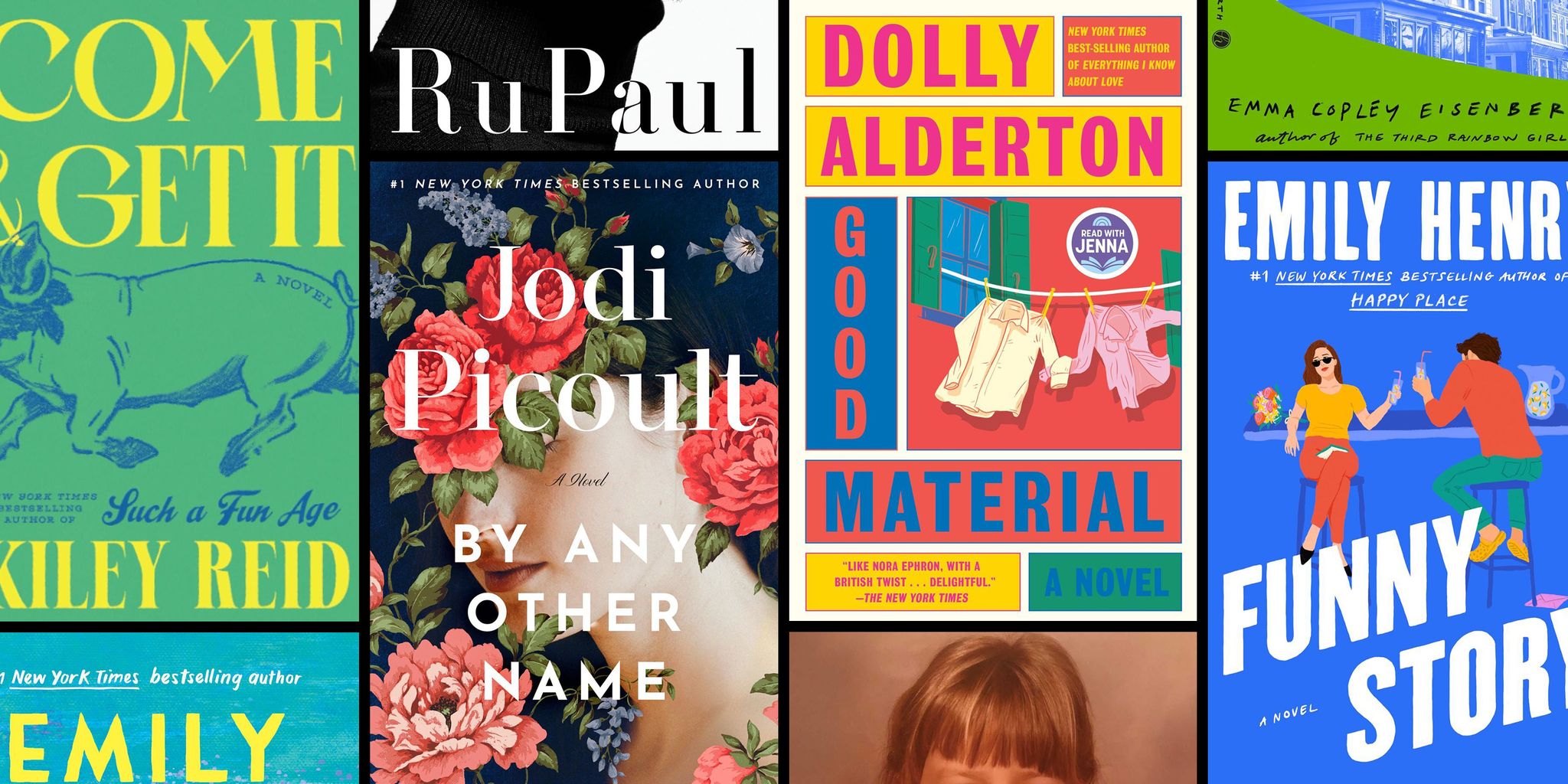
The 24 Best Beach Reads of 2024
Just you, the sand, the sun, and the latest in thrillers, killers, and love
In a list like the one below, genre really gets to shine, from thrillers (see: Amy Tintera’s Listen for the Lie or Alyssa Cole’s inventive One of Us Knows ) to romances (Ashley Poston’s A Novel Love Story ) to crime fiction (Tana French’s The Hunter ). Sometimes great beach reads are also set in vacation towns during the summer months, like Swan Song , the final novel in Elin Hilderbrand’s Nantucket series, or Carley Fortune’s electric This Summer Will Be Different . That’s a real thrill—it’s like double vacation. Below, find 24 vastly different stories that will keep you entertained, moved, and engrossed all the way to Labor Day.
Good Material , by Dolly Alderton
Dolly Alderton , a British author with a growing U.S. following, writes a funny book. Her second novel (and third book overall) begins with a breakup. Jen ends things with Andy, which pitches him into a lovelorn fit, searching for the why of it all. Andy, 35, is a stand-up comedian whose agent is ghosting him and who can’t find friends who have time for him. (They’re dedicating all their previous hangout time to raising their young families.) This one is for those who love Nora Ephron, Nick Hornby, and Hugh Grant’s early work.
Come and Get It , by Kiley Reid
Kiley Reid’s follow-up to New York Times bestseller Such a Fun Age takes us back to the heady, hazy days of 2017. In Come and Get It , Millie Cousins is a resident assistant at the University of Arkansas who dreams of buying a house after graduation. Agatha Paul is a visiting professor writing a book about weddings. Agatha’s and Millie’s paths cross when the academic heads to the dorms to interview students, ends up fascinated with how the young women talk about money, and ultimately pays Millie to let her eavesdrop from her dorm room. This is a book about how money shapes people’s lives, and it’s for you if you enjoy a character-driven narrative in which everyone introduced comes with an elaborate backstory.
The Women , by Kristin Hunter
This book will pull on your heartstrings. Opening in the mid-1960s, during the Vietnam War, and spanning two decades, it follows Frankie McGrath, who joins the Army Nurse Corps. Thrown into the war-torn jungle, she must watch young men die and is forced to build relationships to help endure the pain. It’s a heavy, emotional book that you won’t be able to put down. It’s also a story will stay with you long after you’ve finished reading.
Leaving , by Roxana Robinson
Former college flames Warren and Sarah meet at the opera after years (and marriages) have gone by. This second meeting at age 60 sparks something in both of them, but exploring a relationship is not as simple as it once was. Warren is still married, and he and Sarah both have grown children with opinions. Though he seems ready to leave his wife, Sarah feels conflicted, having gone through a difficult divorce herself. Leaving delves beautifully into what families are to each other and what’s owed to them, love in our later years, and how to balance passion and morality.
The Hunter , by Tana French
Cal Hooper left the Chicago PD to live a quiet life in the tiny town of Ardnakelty in western Ireland. He found a girlfriend, Lena, and took in a mess of a teenager, Trey. But just as Cal has guided the young woman onto a decent path, her father—a charmer and a cad—returns home with a posh Englishman. He’s plotting to strike it rich, while Trey is plotting her revenge. A couple of caveats to know going in: The Hunter has a different, more winding tone than French’s beloved Dublin Murder Squad series, and it behooves the reader to tackle her first book about Cal, 2015’s The Searcher , prior to picking up this one.
Anita de Monte Laughs Last , by Xochitl Gonzalez
If you couldn’t look away from the relationship dynamics explored in A Star Is Born or Anatomy of a Fall , you’ll want to read Xochitl Gonzalez’s new one, Anita de Monte Laughs Last . Raquel Toro arrives at Brown in 1998 to find the famously crunchy Ivy is still a bastion of wealth and whiteness. Raquel, from a Puerto Rican working-class background, pursues her thesis in art history by researching a promising young Cuban-American artist who died in 1985 under mysterious circumstances. As she discovers more about Anita de Monte and the dead woman’s tricky romantic relationship with Jack Martin—a fellow artist, philanderer, and Anita’s biggest critic—Raquel begins to see parallels with her own work and relationship. Well paced, entertaining, and full of flights of fancy, this story about tragic power dynamics and dueling careers is heavy but flies by.
Queen Charlotte , by Julia Quinn and Shonda Rhimes
Yes, this book was reverse-engineered from last year’s prequel spin-off of Bridgerton , the immensely popular Netflix series adapted by Shonda Rhimes’s company from Julia Quinn’s novels—but with such good source material, it would be a mistake not to adapt the show into a book perfect for the lazy, hazy days of summer. As in the show, this one—out now in paperback—begins when Lady Charlotte of Mecklenburg-Strelitz arrives at the court of King George III to marry him. As the headstrong new queen is adjusting to her fresh life in a strange palace, she discovers a dark secret about the husband she’s just met.
The House of Hidden Meanings: A Memoir , by RuPaul
RuPaul—a name synonymous with drag—tells the story of his life, from sticking out like a queer thumb in San Diego all the way to finding both sobriety and love with his husband, Georges LeBar. It’s less a celebrity memoir revealing decades-old gossip from a safe vantage point, and more a searching examination of Ru’s road to self-acceptance. Heady stuff indeed, but chock-full of the longtime star’s wit and humor.
Listen for the Lie , by Amy Tintera
What happens when a wildly popular podcast and its enigmatic, handsome host begin to investigate the mystery of your best friend’s murder—in which you are the prime suspect? The story of Texas sweethearts Savvy and Lucy—one murdered, the other unsure if she did it or not—is one of those totally engrossing reads that will have you looking up from your beach chair every once in a while to say, “Oh, that’s right. I’m at the beach.”
Selling the Dream: The Billion-Dollar Industry Bankrupting Americans , by Jane Marie
Jane Marie hosts popular podcast The Dream , an investigation into pyramid schemes and multi-level marketing companies that have been embedded in the United States for decades—and in this nonfiction book, she’s put it all down on paper. Her exploration of MLMs—and how they trap people in working-class communities, enriching those at the top and leaving those at the bottom poorer than they were before—is a wide-reaching, well-researched, look at a business structure most Americans eventually rub up against, either directly, through a friend or family member, or indirectly, through the powerful politicians who’ve built their wealth on MLMs.
Kill for Me, Kill for You , by Steve Cavanagh
Kill for Me, Kill for You is about two grieving women, Wendy and Amanda, who meet in New York and realize they have a lot in common. They’ve both suffered unimaginable tragedies, and they’d really like to get revenge on the men who harmed them and their families. Over drinks, they make a pact: Each will kill the other’s tormentor. It’s like Patricia Highsmith’s Strangers on a Train if both parties were into the revenge idea. For readers drawn to white-knuckle plots and unpredictable twists, this one won’t disappoint.
Just for the Summer , by Abby Jimenez
Emma Grant meets Justin Dahl thanks to an “Am I the Asshole?” post he wrote on Reddit, in which he described a curious “curse,” under which the women he dates all seem to leave him and then immediately find the loves of their life. Emma has the same problem. The two hatch a plan to break the curse by dating each other: They’ll give it a go for just four dates (the number it usually takes for women to break up with Justin) over the course of a month (the length of time Emma’s relationships typically last), and then split. It won’t surprise you to learn it’s not quite that simple.
Sociopath: A Memoir , by Patric Gagne
Consider, for your spring break reading, a different kind of memoir: Patric Gagne realized from an early age that she wasn’t like other girls. She didn’t feel fear or guilt. Empathy eluded her. Eventually, she learned of a diagnosis that explained her lack of certain emotions (and also the behaviors she dabbled in, trying to fill in that void, like stealing cars and lying): She’s a sociopath. But Gagne didn’t like how people like her have been portrayed in the media, nor did she care for the grim prognosis for living a happy life as a sociopath. When an opportunity to love presents itself, she begins to hope that she is more than her diagnosis, and that may be able to change the world’s perception of people like her.
One of Us Knows , by Alyssa Cole (April 16)
When Kenetria Nash was diagnosed with dissociative identity disorder (colloquially known as multiple personality disorder), it stalled her career in historic preservation. At the start of this story, Ken has been dormant for six years while her alters fronted for her—and when she wakes up, she’s on a dock with some luggage. She discovers she’s taken a job as a caretaker of a historic home on an island in the Hudson River. As she attempts to piece together how she got there and what has been happening in the world over the last few years, mysteries arise both within Ken and in the house. Then a group comes to stay, one of them ends up murdered, and she is blamed. The unusual premise works well in Cole’s capable hands, and she writes about DID with human nuance. One of Us Knows will certainly keep your heart beating while you’re relaxing by the shore.
Funny Story , by Emily Henry (April 23)
The inimitable Emily Henry is back with a story of opposite attraction and fake relationships. Funny Story tells the tale of Daphne, who was engaged to Peter—until they moved to his hometown in Michigan, where he realized he was in love with Petra, his childhood friend. The polished Daphne decides to move in with Petra’s ex, the disorganized and slightly unkempt Miles. Daphne and Miles then fake a relationship until they potentially, maybe, you’ll-have-to-read-to-find-out-if-they make it.
Silk , by Aarathi Prasad (April 30)
Silk is known as the queen of fibers. Its sheen is alluring, beautiful, and slippery, and it has a rich, rich history. Allow researcher Aarathi Prasad—who has a PhD in molecular genetics—to walk you through that history, how silk is made, and how it has been used across cultures. It’s a mix of science, history, and textiles that will teach more about the alluring fabric than you’d ever think you could know.
This Summer Will Be Different , by Carley Fortune (May 7)
Carly Fortune is a growing voice in the world of perfect beach reads, and This Summer Will Be Different is one of her best so far. In it, she takes her readers to the coastal Northeast—beautiful Prince Edward Island. On vacation there, Lucy discovers her electrifying chemistry with a local man named Felix—before discovering Felix is the brother of her best friend, Bridget. That only makes her subsequent annual visits more complicated. What’s so great about this novel is that it’s a story about friendship as much as it is about a forbidden kind of love. (Your best friend’s brother? Has someone ever been more off-limits?)
Last House , by Jessica Shattuck (May 14)
This one is for readers who like to immerse themselves in a decades-long, multigenerational familial saga while their toes dangle in the sand. Over most of a century, Last House explores the American empire after World War II through one man’s pursuit of oil and how his family contends with the legacy made from the stuff. Jessica Shattuck is a best-selling author, and this novel, like her others, both moves and is incredibly moving.
Housemates , by Emma Copley Eisenberg (May 28)
Here’s one for the road-tripping vacationers: Bernie, a photographer, answers writer Leah’s ad for a housemate, and they develop a friendship. When Bernie’s photography professor dies and leaves her a surprise inheritance, the roomies leave their home in Philadelphia to drive to his place in rural Pennsylvania, meeting an engaging cast of characters along the way. It’s a genuine book about art, love, friendship, chosen family, and America in this moment.
Swan Song , by Elin Hilderbrand (June 11)
Elin Hilderbrand is the doyen of the beach read, the queen of all things sun, fun, and intrigue, one of the best to ever do it,and Swan Song is the cleverly titled final installment of her popular Nantucket series. It’s a stranger-comes-to-town tale, and these particular strangers—the Richardsons—are mysterious, wealthy, and mysteriously wealthy. No one seems to know how they made their money. When the lavish summer home they bought for $22 million burns to the ground and a woman goes missing, the town is obviously upset. You’ll see all your old favorite characters from the previous Nantucket novels, and this final act is chock-full of all Hilderbrand’s hallmarks, from family drama to romance.

Art, Books & Music
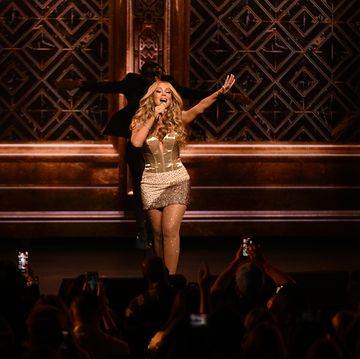
The Global Comfort of Khruangbin
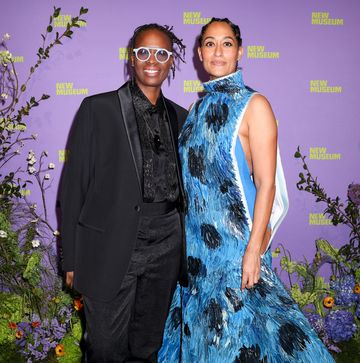
The New Museum’s 2024 Gala Celebrated Community

For Tyla, Music and Movement Go Hand in Hand

Who Is Linda Martell? All About the Trailblazer
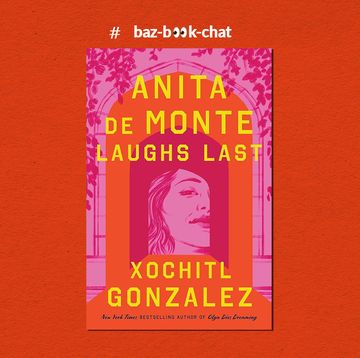
Bazaar Book Chat: “Anita de Monte Laughs Last”

The Meaning Behind Beyoncé’s “Bodyguard”

Beyoncé & Miley's “II Most Wanted” Explained
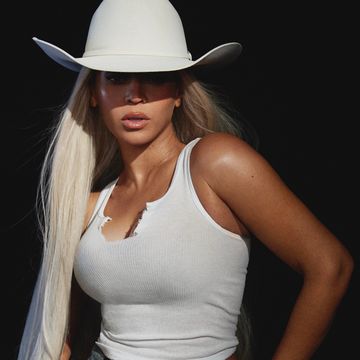
On “Cowboy Carter,” Beyoncé Reclaims What’s Hers

What to Know About Cowboy Carter

’60s Fashion Reigns Supreme in Palm Royale

Kacey Musgraves Gets Real at Intimate Artist Talk
Read our research on: Gun Policy | International Conflict | Election 2024
Regions & Countries
What public k-12 teachers want americans to know about teaching.
Illustrations by Hokyoung Kim
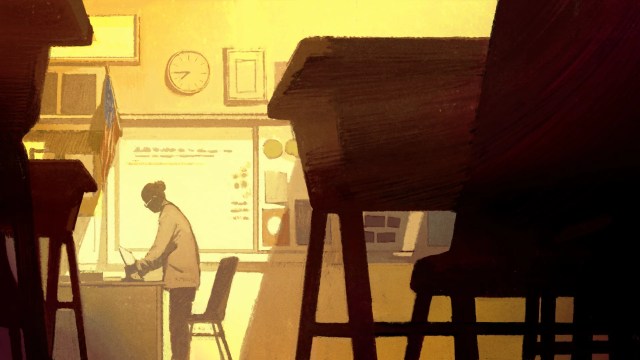
At a time when most teachers are feeling stressed and overwhelmed in their jobs, we asked 2,531 public K-12 teachers this open-ended question:
If there’s one thing you’d want the public to know about teachers, what would it be?
We also asked Americans what they think about teachers to compare with teachers’ perceptions of how the public views them.
Related: What’s It Like To Be a Teacher in America Today?
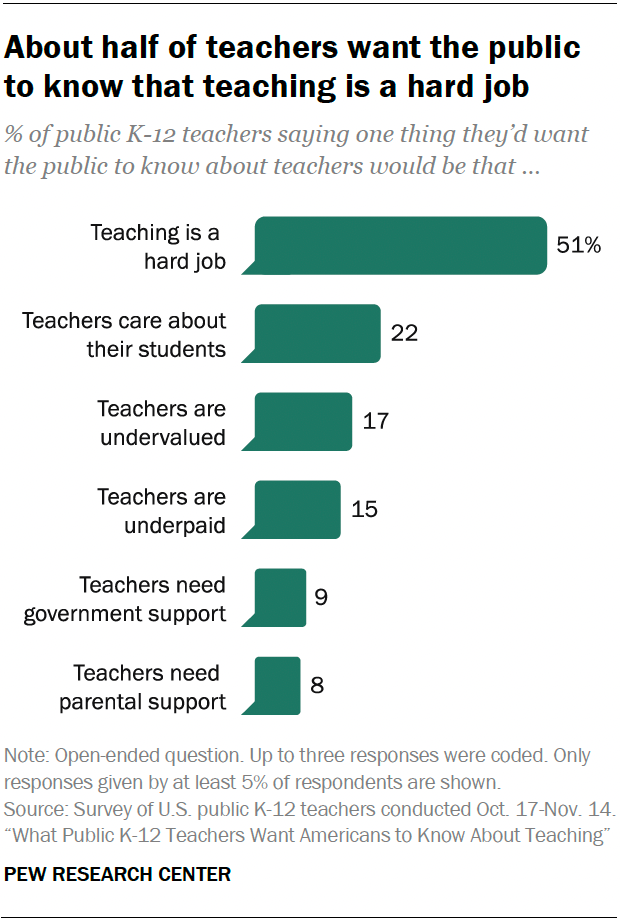
Pew Research Center conducted this analysis to better understand what public K-12 teachers would like Americans to know about their profession. We also wanted to learn how the public thinks about teachers.
For the open-end question, we surveyed 2,531 U.S. public K-12 teachers from Oct. 17 to Nov. 14, 2023. The teachers surveyed are members of RAND’s American Teacher Panel, a nationally representative panel of public K-12 school teachers recruited through MDR Education. Survey data is weighted to state and national teacher characteristics to account for differences in sampling and response to ensure they are representative of the target population.
Overall, 96% of surveyed teachers provided an answer to the open-ended question. Center researchers developed a coding scheme categorizing the responses, coded all responses, and then grouped them into the six themes explored in the data essay.
For the questions for the general public, we surveyed 5,029 U.S. adults from Nov. 9 to Nov. 16, 2023. The adults surveyed are members of the Ipsos KnowledgePanel, a nationally representative online survey panel. Panel members are randomly recruited through probability-based sampling, and households are provided with access to the Internet and hardware if needed. To ensure that the results of this survey reflect a balanced cross section of the nation, the data is weighted to match the U.S. adult population by gender, age, education, race and ethnicity and other categories.
Here are the questions used for this analysis , along with responses, the teacher survey methodology and the general public survey methodology .
Most of the responses to the open-ended question fell into one of these six themes:
Teaching is a hard job
About half of teachers (51%) said they want the public to know that teaching is a difficult job and that teachers are hardworking. Within this share, many mentioned that they have roles and responsibilities in the classroom besides teaching, which makes the job stressful. Many also talked about working long hours, beyond those they’re contracted for.
“Teachers serve multiple roles other than being responsible for teaching curriculum. We are counselors, behavioral specialists and parents for students who need us to fill those roles. We sacrifice a lot to give all of ourselves to the role as teacher.”
– Elementary school teacher
“The amount of extra hours that teachers have to put in beyond the contractual time is ridiculous. Arriving 30 minutes before and leaving an hour after is just the tip of the iceberg. … And as far as ‘having summers off,’ most of August is taken up with preparing materials for the upcoming school year or attending three, four, seven days’ worth of unpaid development training.”
– High school teacher
Teachers care about their students
The next most common theme: 22% of teachers brought up how fulfilling teaching is and how much teachers care about their students. Many gave examples of the hardships of teaching but reaffirmed that they do their job because they love the kids and helping them succeed.
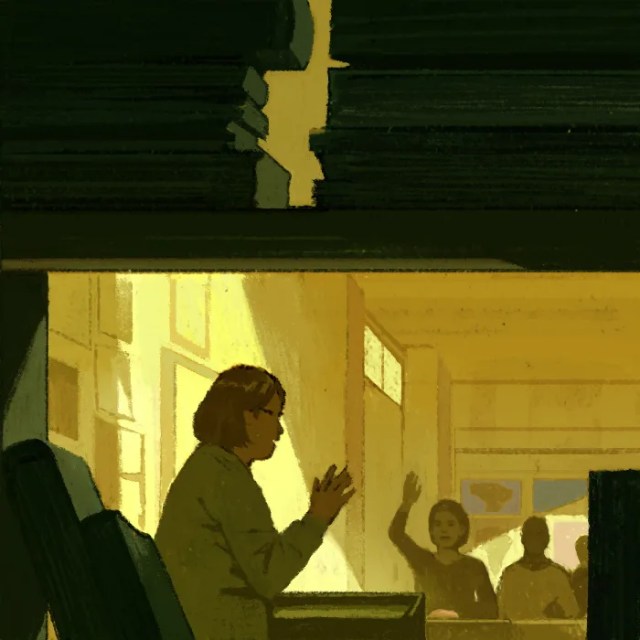
“We are passionate about what we do. Every child we teach is important to us and we look out for them like they are our own.”
– Middle school teacher
“We are in it for the kids, and the most incredible moments are when children make connections with learning.”
Teachers are undervalued and disrespected
Some 17% of teachers want the public to know that they feel undervalued and disrespected, and that they need more public support. Some mentioned that they are well-educated professionals but are not treated as such. And many teachers in this category responded with a general plea for support from the public, which they don’t feel they’re getting now.
“We feel undervalued. The public and many parents of my students treat me and my peers as if we do not know as much as they do, as if we are uneducated.”
“The public attitudes toward teachers have been degrading, and it is making it impossible for well-qualified teachers to be found. People are simply not wanting to go into the profession because of public sentiments.”
Teachers are underpaid
A similar share of teachers (15%) want the public to know that teachers are underpaid. Many teachers said their salary doesn’t account for the effort and care they put into their students’ education and believe that their pay should reflect this.
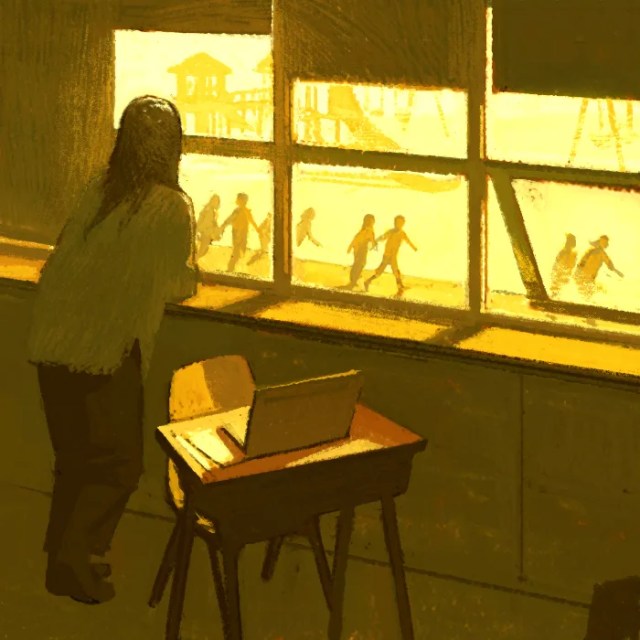
“We are sorely underpaid for the amount of hours we work and the education level we have attained.”
Teachers need support and resources from government and administrators
About one-in-ten teachers (9%) said they need more support from the government, their administrators and other key stakeholders. Many mentioned working in understaffed schools, not having enough funding and paying for supplies out of pocket. Some teachers also expressed that they have little control over the curriculum that they teach.
“The world-class education we used to be proud of does not exist because of all the red tape we are constantly navigating. If you want to see real change in the classroom, advocate for smaller class sizes for your child, push your district to cap class sizes at a reasonable level and have real, authentic conversations with your child’s teacher about what is going on in the classroom if you’re curious.”
Teachers need more support from parents
Roughly the same share of teachers (8%) want the public to know that teachers need more support from parents, emphasizing that the parent-teacher relationship is strained. Many view parents as partners in their child’s education and believe that a strong relationship improves kids’ overall social and emotional development.
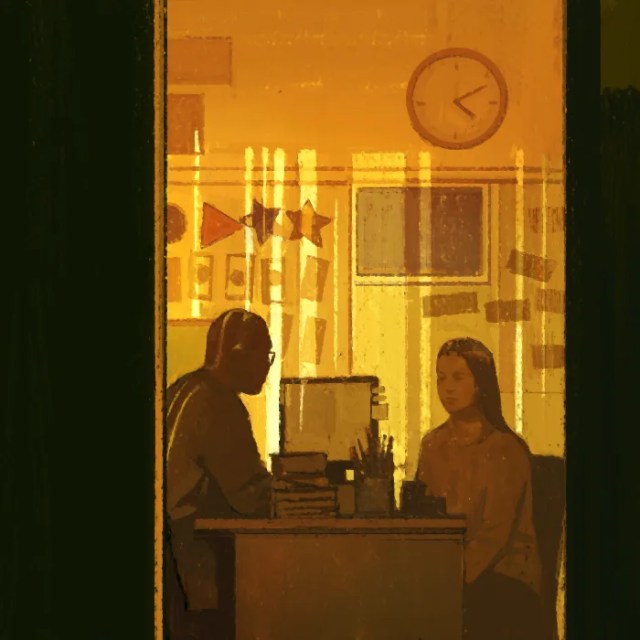
“Teachers help students to reach their potential. However, that job is near impossible if parents/guardians do not take an active part in their student’s education.”
How the U.S. public views teachers
While the top response from teachers in the open-ended question is that they want the public to know that teaching is a hard job, most Americans already see it that way. Two-thirds of U.S. adults say being a public K-12 teacher is harder than most other jobs, with 33% saying it’s a lot harder.
And about three-quarters of Americans (74%) say teachers should be paid more than they are now, including 39% who say teachers should be paid a lot more.
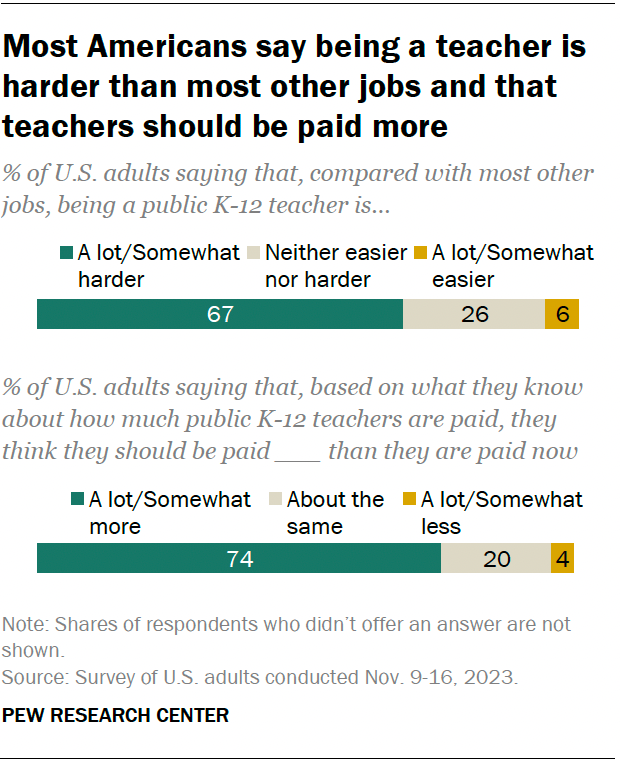
Americans are about evenly divided on whether the public generally looks up to (32%) or down on (30%) public K-12 teachers. Some 37% say Americans neither look up to or down on public K-12 teachers.
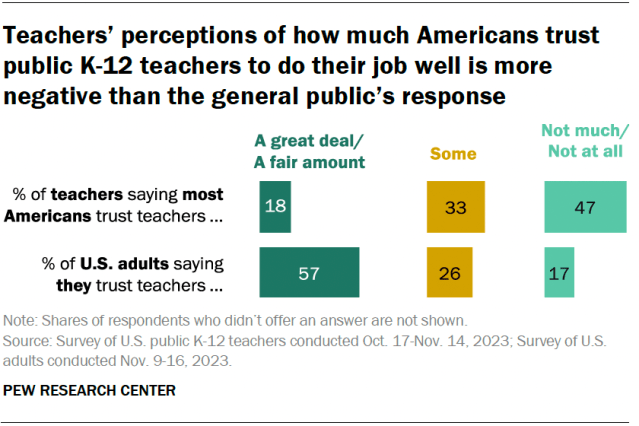
In addition to the open-ended question about what they want the public to know about them, we asked teachers how much they think most Americans trust public K-12 teachers to do their job well. We also asked the public how much they trust teachers. Answers differ considerably.
Nearly half of public K-12 teachers (47%) say most Americans don’t trust teachers much or at all. A third say most Americans trust teachers some, and 18% say the public trusts teachers a great deal or a fair amount.
In contrast, a majority of Americans (57%) say they do trust public K-12 teachers to do their job well a great deal or a fair amount. About a quarter (26%) say they trust teachers some, and 17% say they don’t trust teachers much or at all.
Related: About half of Americans say public K-12 education is going in the wrong direction
How the public’s views differ by party
There are sizable party differences in Americans’ views of teachers. In particular, Democrats and Democratic-leaning independents are more likely than Republicans and Republican leaners to say:
- They trust teachers to do their job well a great deal or a fair amount (70% vs. 44%)
- Teaching is a lot or somewhat harder when compared with most other jobs (77% vs. 59%)
- Teachers should be paid a lot or somewhat more than they are now (86% vs. 63%)

In their own words
Below, we have a selection of quotes that describe what teachers want the public to know about them and their profession.
Social Trends Monthly Newsletter
Sign up to to receive a monthly digest of the Center's latest research on the attitudes and behaviors of Americans in key realms of daily life
About Pew Research Center Pew Research Center is a nonpartisan fact tank that informs the public about the issues, attitudes and trends shaping the world. It conducts public opinion polling, demographic research, media content analysis and other empirical social science research. Pew Research Center does not take policy positions. It is a subsidiary of The Pew Charitable Trusts .

IMAGES
VIDEO
COMMENTS
Misc. Fear and Loathing in Las Vegas by Hunter S. Thompson. The Last American Hero Is Junior Johnson. Yes! by Tom Wolfe. Masters of the Universe Go to Camp by Philip Weiss. What Is Glitter? by Caity Weaver. The best short articles, nonfiction and essays from around the net - interesting articles and essays on every subject, all free to read online.
1. David Sedaris - Laugh, Kookaburra. A great family drama takes place against the backdrop of the Australian wilderness. And the Kookaburra laughs…. This is one of the top essays of the lot. It's a great mixture of family reminiscences, travel writing, and advice on what's most important in life.
Besides essays on Book Riot, I love looking for essays on The New Yorker, The Atlantic, The Rumpus, and Electric Literature. But there are great nonfiction essays available for free all over the Internet. From contemporary to classic writers and personal essays to researched ones—here are 25 of my favorite nonfiction essays you can read today.
I found over 12 best essays lists and several essay anthologies and combined the essays into one meta-list. The meta-list below includes every essay that was on at least two of the original source lists. They are organized by rank, that is, with the essays on the most lists at the top. To see the same list organized chronologically, go HERE.
9. ' Bookshop Memories '. As well as writing on politics and being a writer, Orwell also wrote perceptively about readers and book-buyers - as in this 1936 essay, published the same year as his novel Keep the Aspidistra Flying, which combined both bookshops and writers (the novel focuses on Gordon Comstock, an aspiring poet).
Didion's pen is like a periscope onto the creative mind—and, as this collection demonstrates, it always has been. These essays offer a direct line to what's in the offing.". -Durga Chew-Bose ( The New York Times Book Review) 3. Orwell's Roses by Rebecca Solnit.
Sojourner Truth. "The Clan of One-Breasted Women," Terry Tempest Williams. The Full List. (all essays by writers with at least one duplication or three disparate essays anthologized) "The Great American Desert," Edward Abbey. "The Cowboy and his Cow," Edward Abbey. "Havasu," Edward Abbey. "Superman and Me," Sherman Alexie.
4. Body Work: The Radical Power of Personal Narrative by Melissa Febos. "In her new book, Body Work: The Radical Power of Personal Narrative, memoirist Melissa Febos handily recuperates the art of writing the self from some of the most common biases against it: that the memoir is a lesser form than the novel.
The dangers of AI farming. AI could lead to new ways for people to abuse animals for financial gain. That's why we need strong ethical guidelines. The latest and most popular Essays from Aeon. Longform articles on philosophy, psychology, science, society, history and the arts, written by the world's leading thinkers.
Courtney Dobson, Senior Editor. In this essay, Hollie McKay reports on women in Iraq who have been "disappeared" by the Islamic State group, the group's use of rape as a weapon of war and how minority communities struggle to heal and come to terms with the stigma associated with sexual violence. It is a haunting piece, but McKay ...
The top and best essays to read These are the top 5 best essays to read. Click on the buttons for more details about the book: from community ratings to book summaries, reviews, and information about the authors.
2 Unfinished Business: Notes of a Chronic Re-Reader by Vivian Gornick. 3 Nature Matrix: New and Selected Essays by Robert Michael Pyle. 4 Terroir: Love, Out of Place by Natasha Sajé. 5 Maybe the People Would be the Times by Luc Sante. W e're talking about the books shortlisted for the 2021 PEN/Diamonstein-Spielvogel Award for the Art of the ...
The Art of the Personal Essay — anthology, edited by Phillip Lopate. 6. Bad Feminist — Roxane Gay. 7. The Best American Essays of the Century — anthology, edited by Joyce Carol Oates. 8. The Best American Essays series — published every year, series edited by Robert Atwan. 9. Book of Days — Emily Fox Gordon.
In this essay, the analyst Inga Rudzinskaite-Colman, who was born and raised in Vilnius, dives into complicated issues like collective trauma and self-identity. She tells us, in poignant detail, how she and her fellow countrymen and women strived for decades to disassociate themselves from Russia and their Soviet past.
Essays and fiction from Aminatta Forna, Cord Jefferson, Maggie Doherty, and more. Essays and fiction from Aminatta Forna, Cord Jefferson, Maggie Doherty, and more. ... Our Most-Read Prose of 2022. Essays Against the Stream. The forgotten pleasures of analog media. Jason Guriel. Essays A Glass Essay.
Susan Orlean selected the essay for The Best American Essays 2004 and Wallace collected it in Consider the Lobster and Other Essays (2005). Read the essay here. (Note: the electronic version from ...
Insomniac City: New York, Oliver, and Me by Bill Hayes. "Bill Hayes came to New York City in 2009 with a one-way ticket and only the vaguest idea of how he would get by. But, at forty-eight years old, having spent decades in San Francisco, he craved change.
Great articles and essays by the world's best journalists and writers. ... The 50 Best Short Articles & Essays to Read for Students Read the best short articles and essays for free online Life. The Capital T Truth by David Foster Wallace Wallace's 2005 Kenyon College commencement address: a stark but hopeful perspective on life's fundamental ...
Essays Every High School Student Should Read. December 4, 2016 in Pedagogy. One of the most important goals of any English class should be to help students learn how to express themselves to an audience — how to tell their own stories, how to provide much-needed information, and how to convince others to see things from a different perspective.
The Most of Nora Ephron includes essays on friendship, feminism and journalism, as well as some of her favourite recipes. And although they're not essays, we guarantee you'll still love the extracts from her bestselling novel Heartburn and the scenes from When Harry Met Sally that are included. Trick Mirror by Jia Tolentino (2019) As a ...
Hilton Als, White Girls (2013) In a world where we are so often reduced to one essential self, Hilton Als' breathtaking book of critical essays, White Girls, which meditates on the ways he and other subjects read, project and absorb parts of white femininity, is a radically liberating book.
6. "Self-Reliance" — Ralph Waldo Emerson. One of Emerson's most influential essays, you can read it online or in nearly every collection of his works. While his prose's formality may be a shock ...
Short Essays for Students. This page contains short essays and other non-fiction writing for students or anyone who wants to read and think about an opinion piece. It will only take a few minutes or less to read any of these texts. They are all under 2,000 words. Each non-fiction selection has a short summary or teaser and some possible themes ...
Looking for something new to read? This week's recommendations include a meditation on friendship and mental health, a classic mystery, a gorgeous collection of nature essays and more. Here are ...
teaching ChatGPT best practices in her writing workshop class at the University of Lynchburg in Virginia, said she sees the advantages for teachers using AI tools but takes issue with how it can ...
Read More: 10 Surprising Facts About the 2024 Solar Eclipse This was a weird concept, and many scientists thought Einstein's ideas and equations were ridiculous. But others thought it sounded ...
Elin Hilderbrand is the doyen of the beach read, the queen of all things sun, fun, and intrigue, one of the best to ever do it,and Swan Song is the cleverly titled final installment of her popular ...
Overall, 96% of surveyed teachers provided an answer to the open-ended question. Center researchers developed a coding scheme categorizing the responses, coded all responses, and then grouped them into the six themes explored in the data essay. For the questions for the general public, we surveyed 5,029 U.S. adults from Nov. 9 to Nov. 16, 2023.